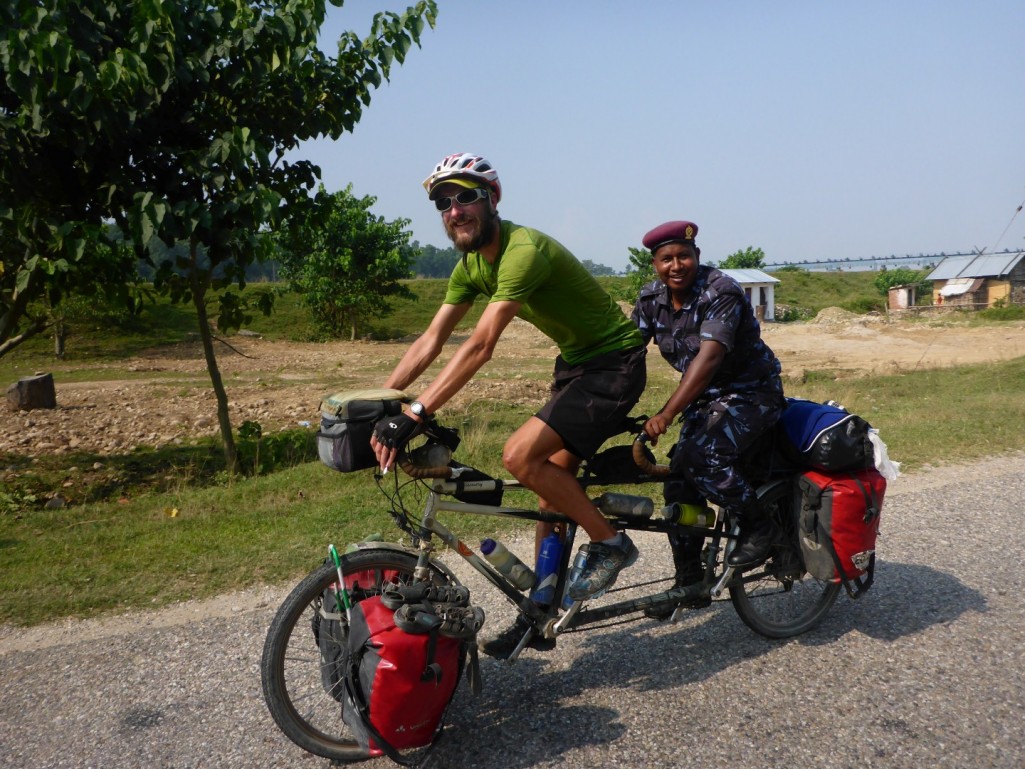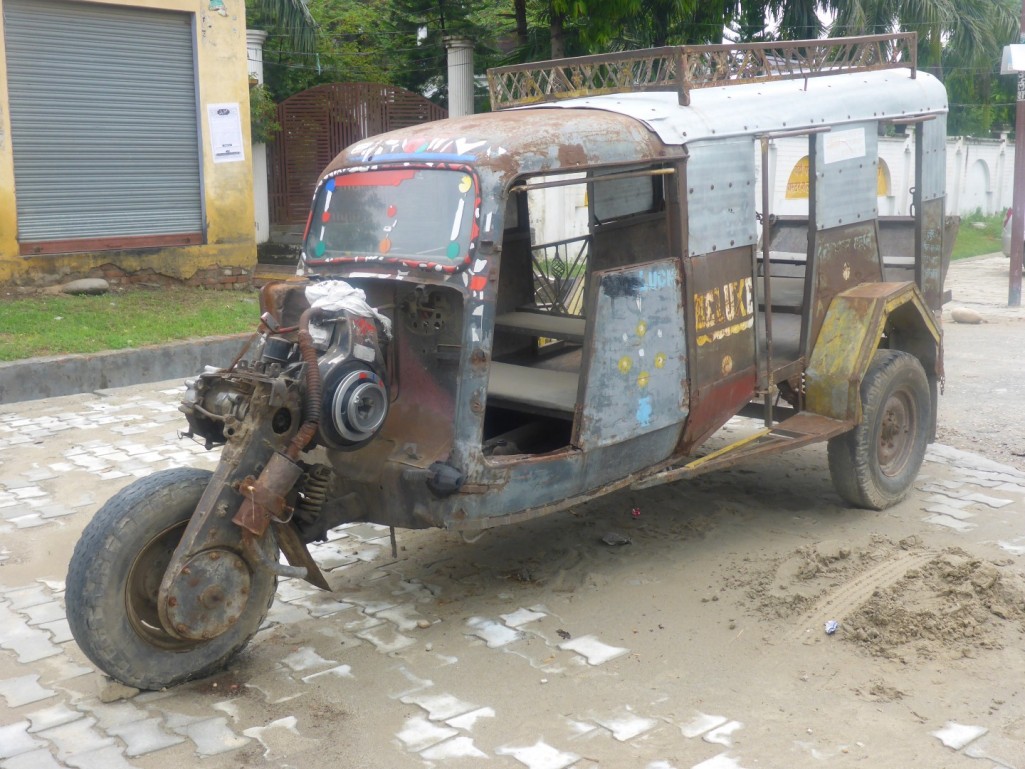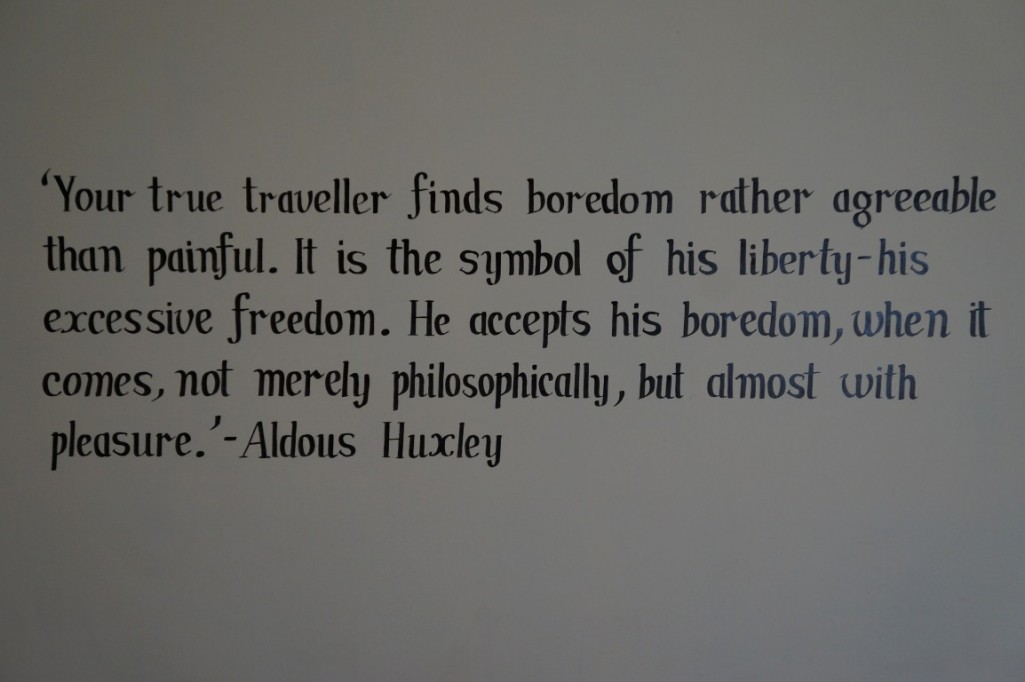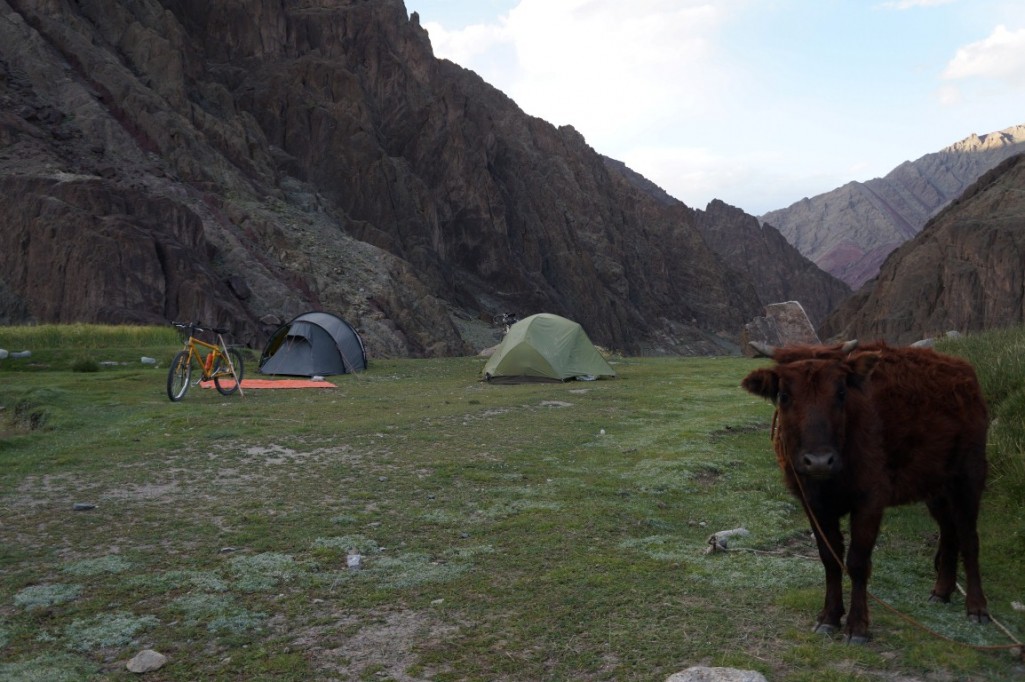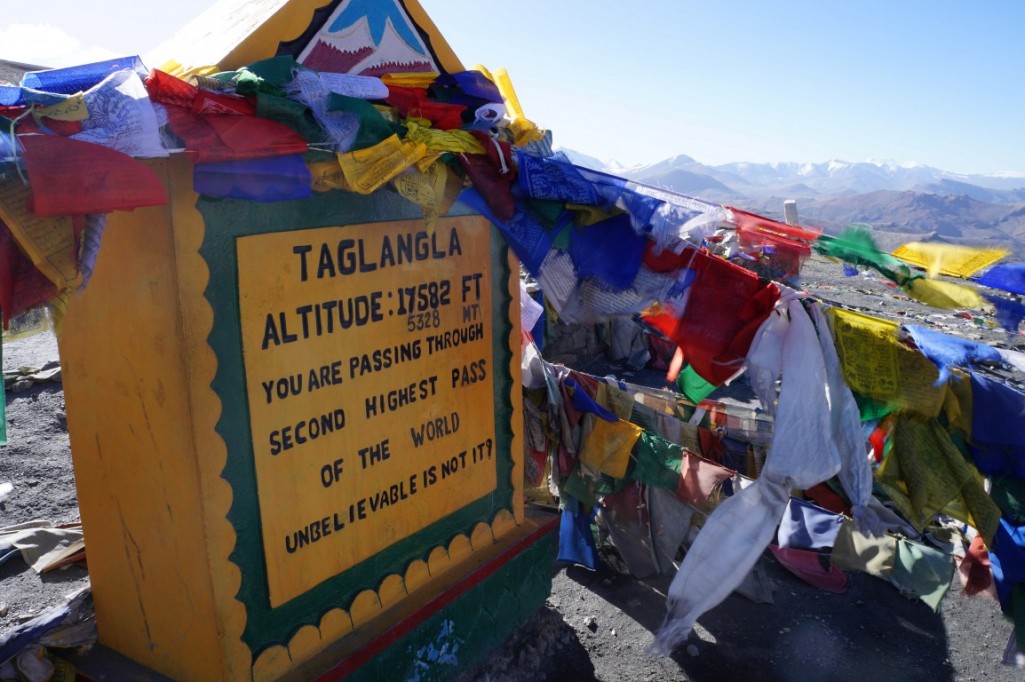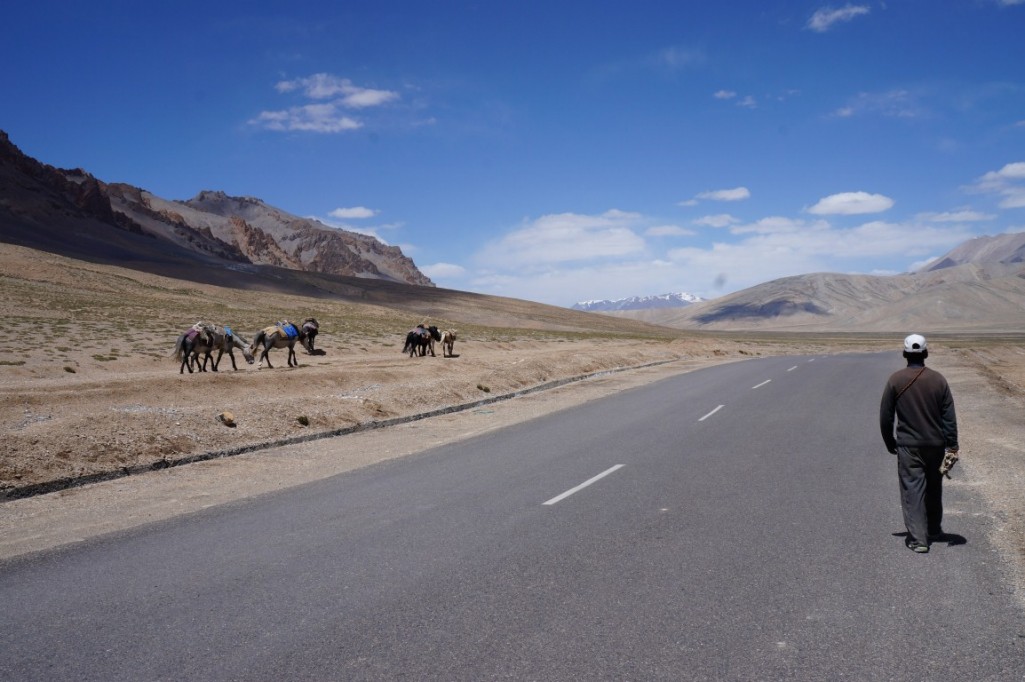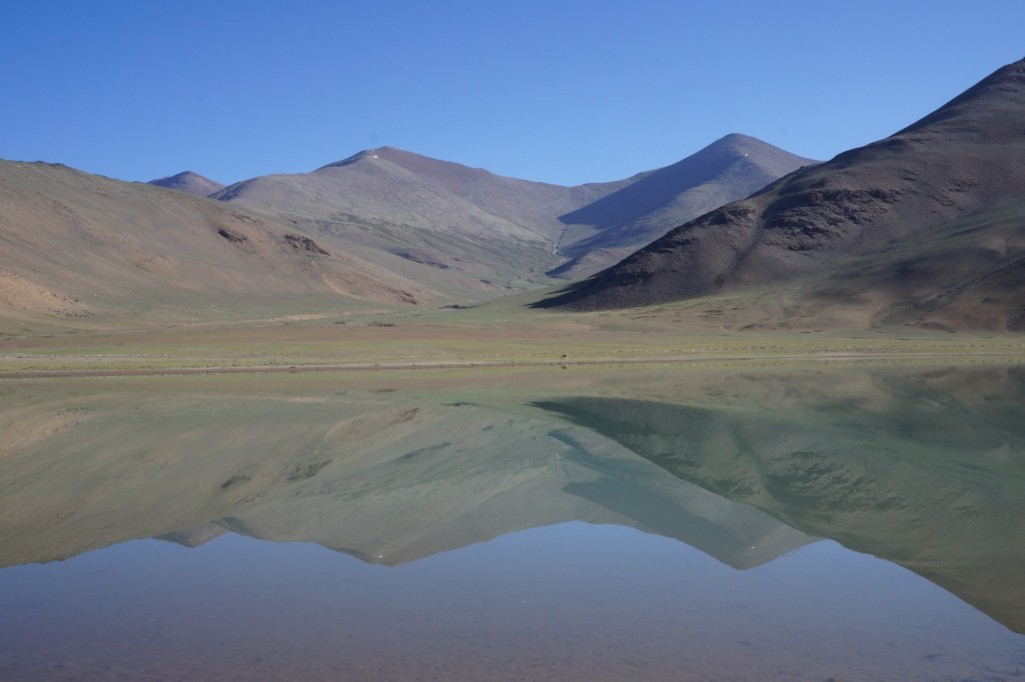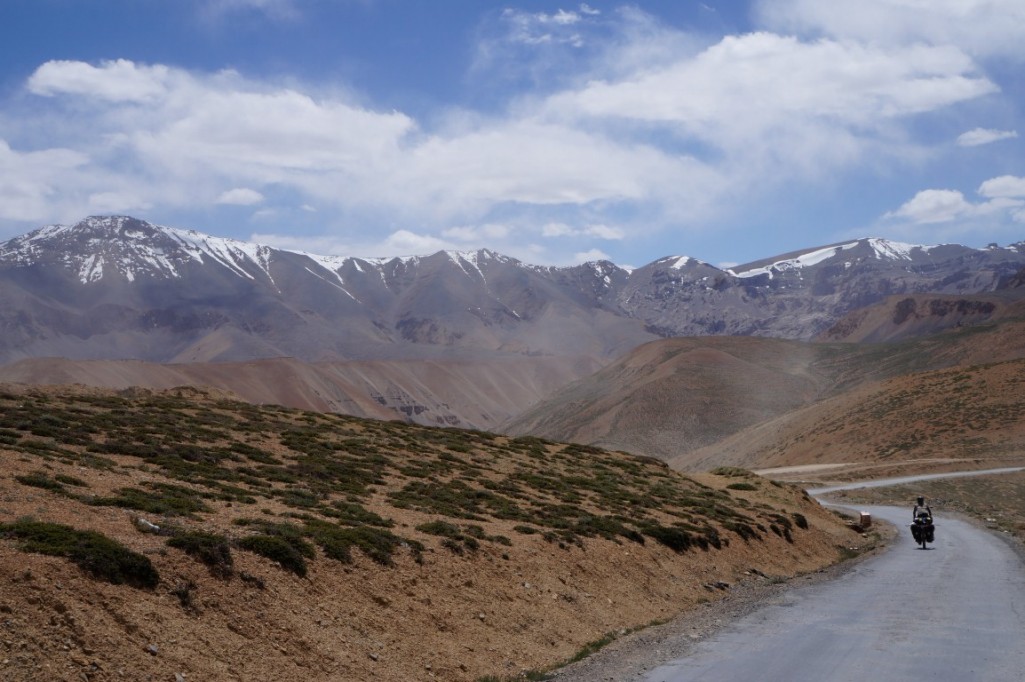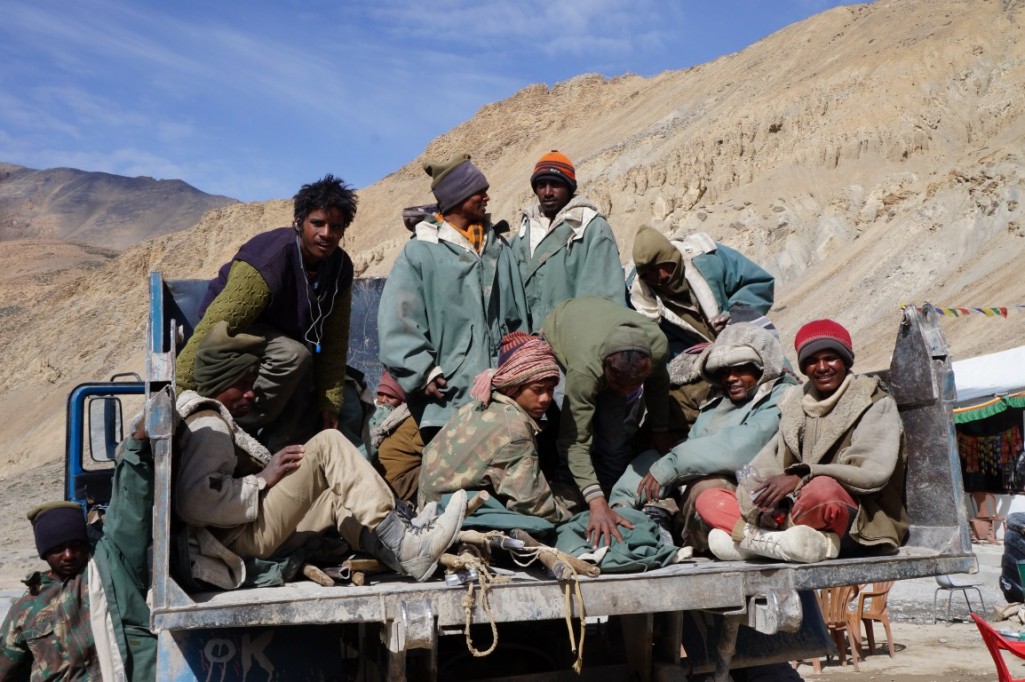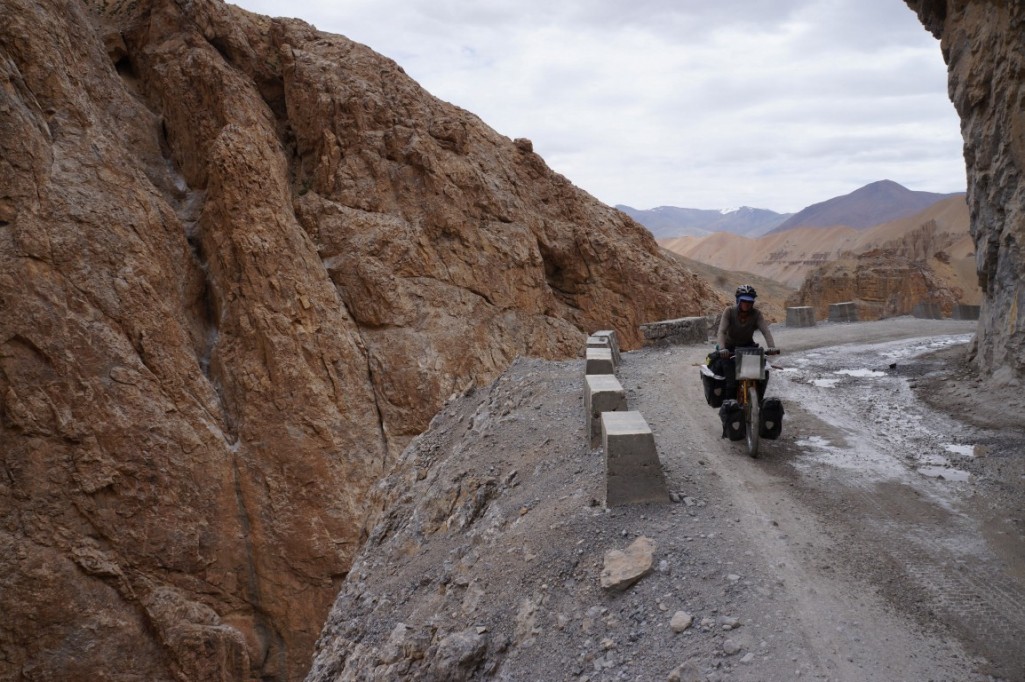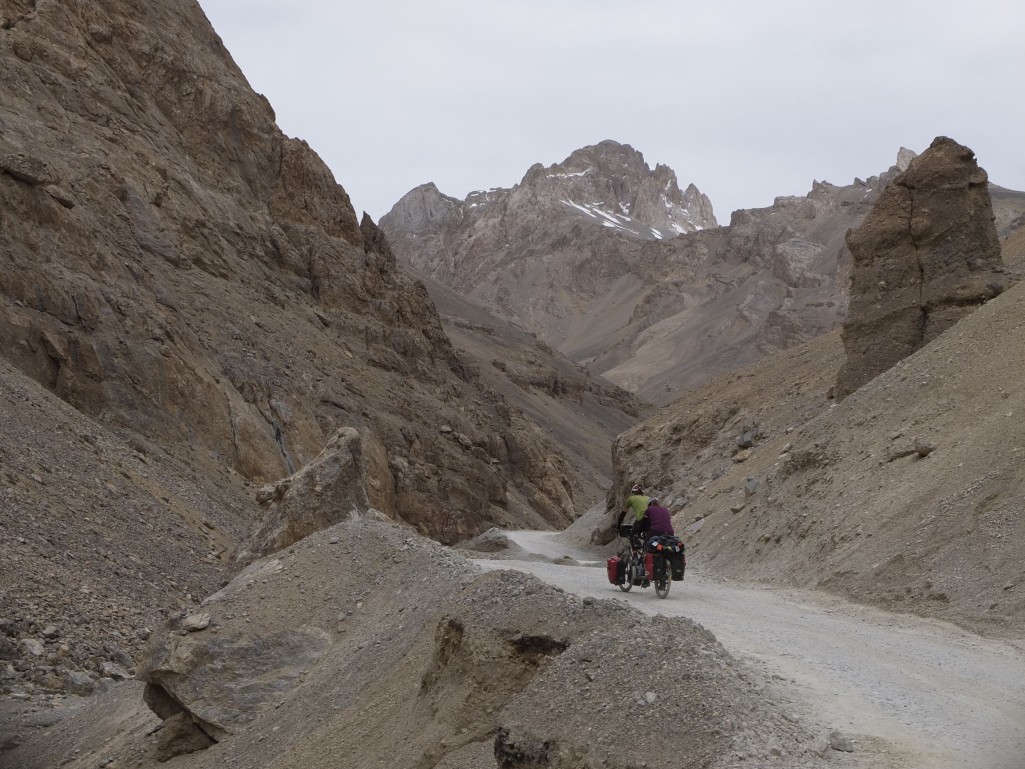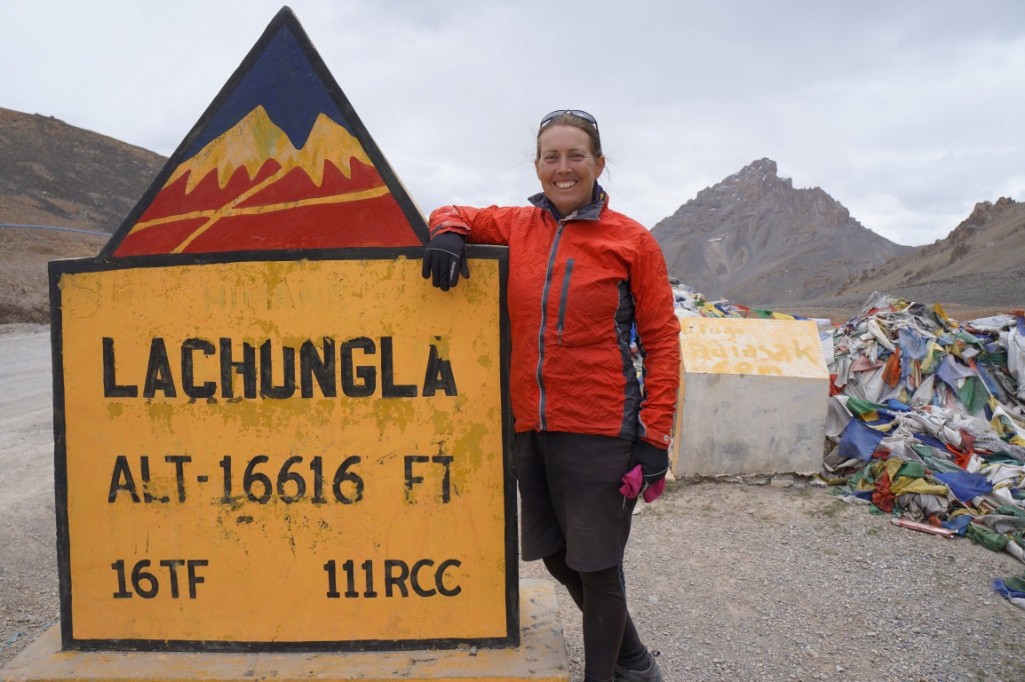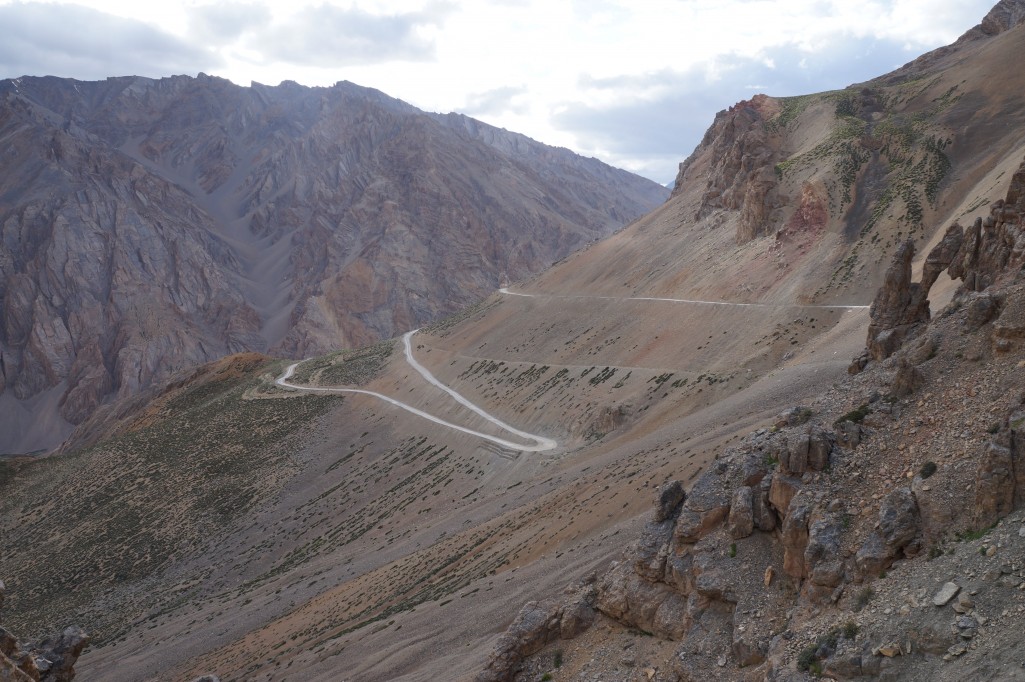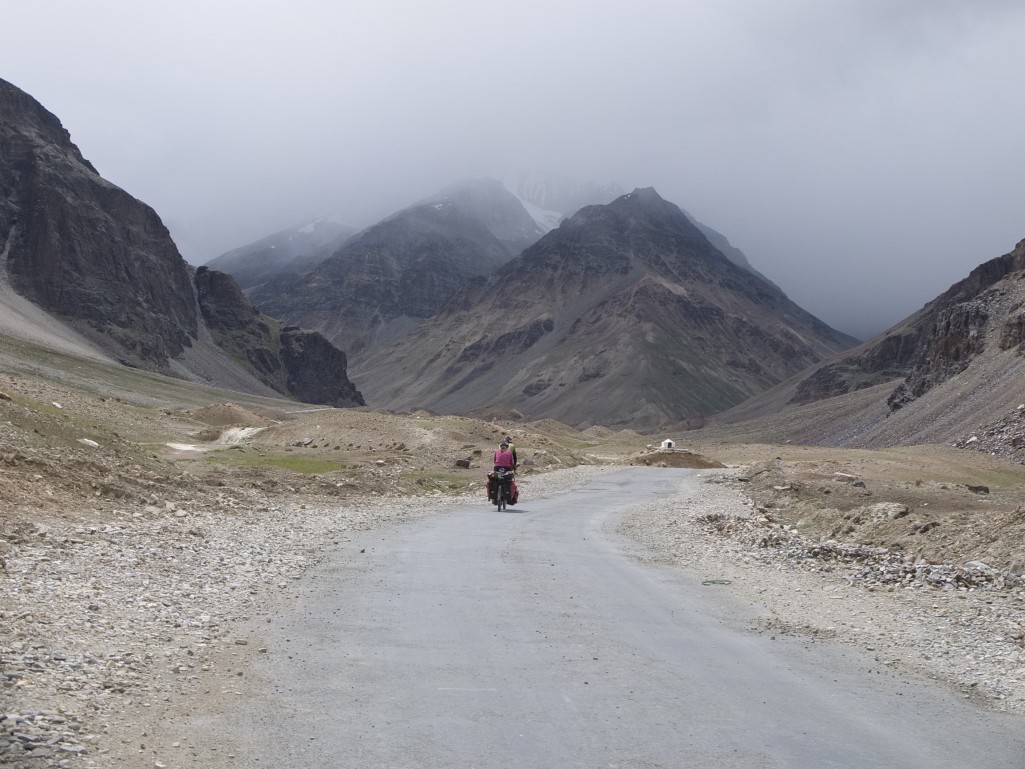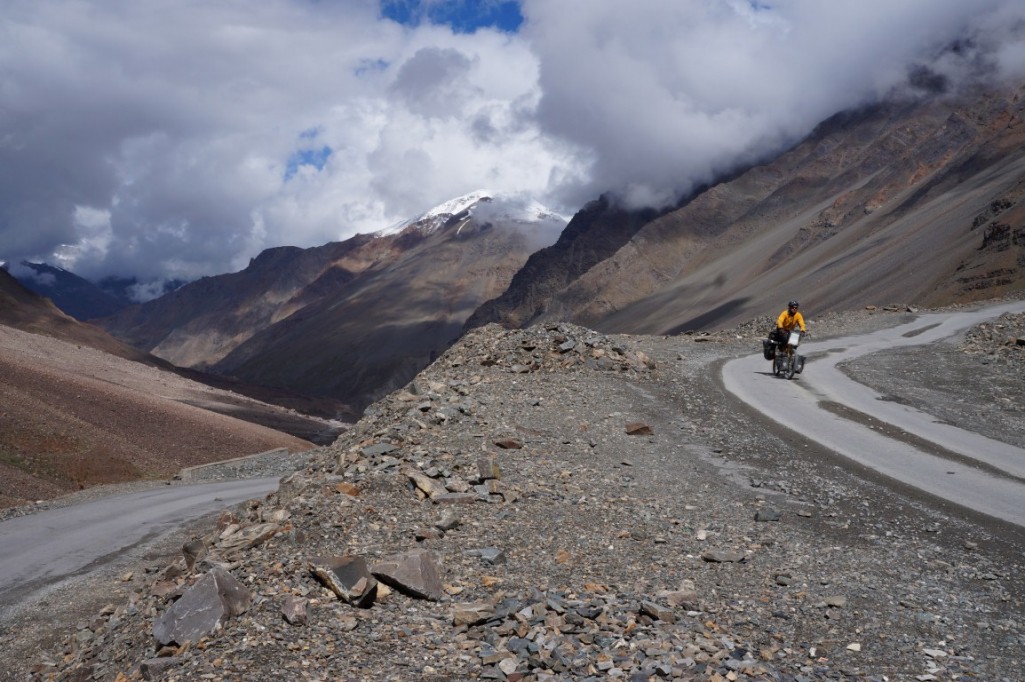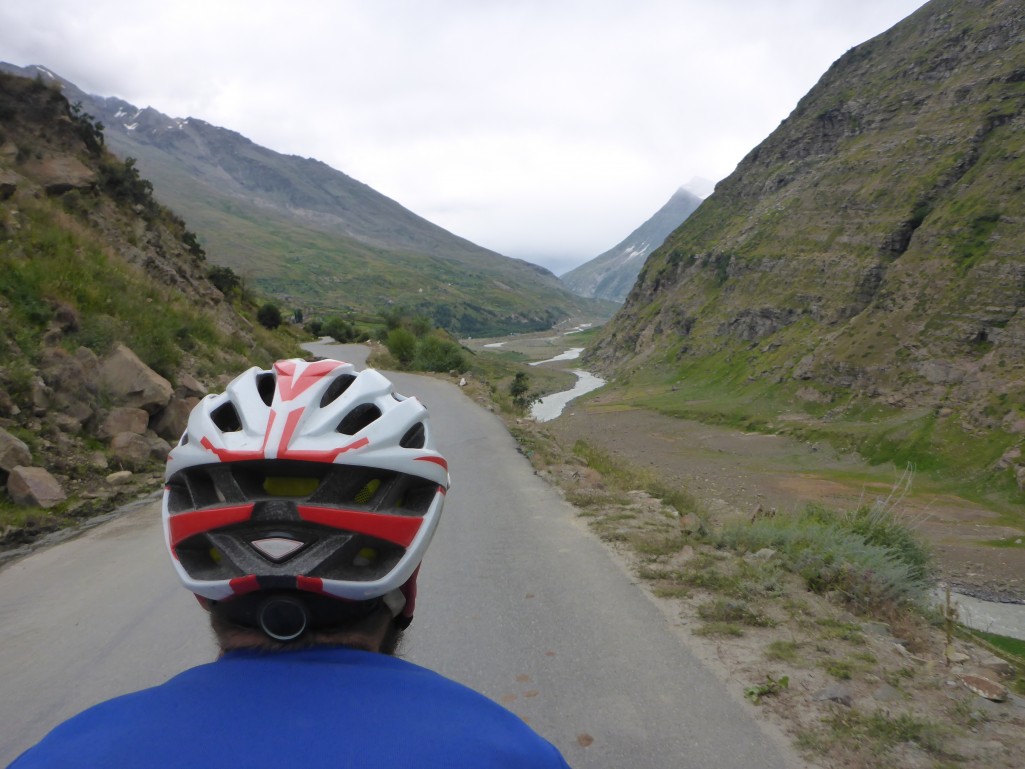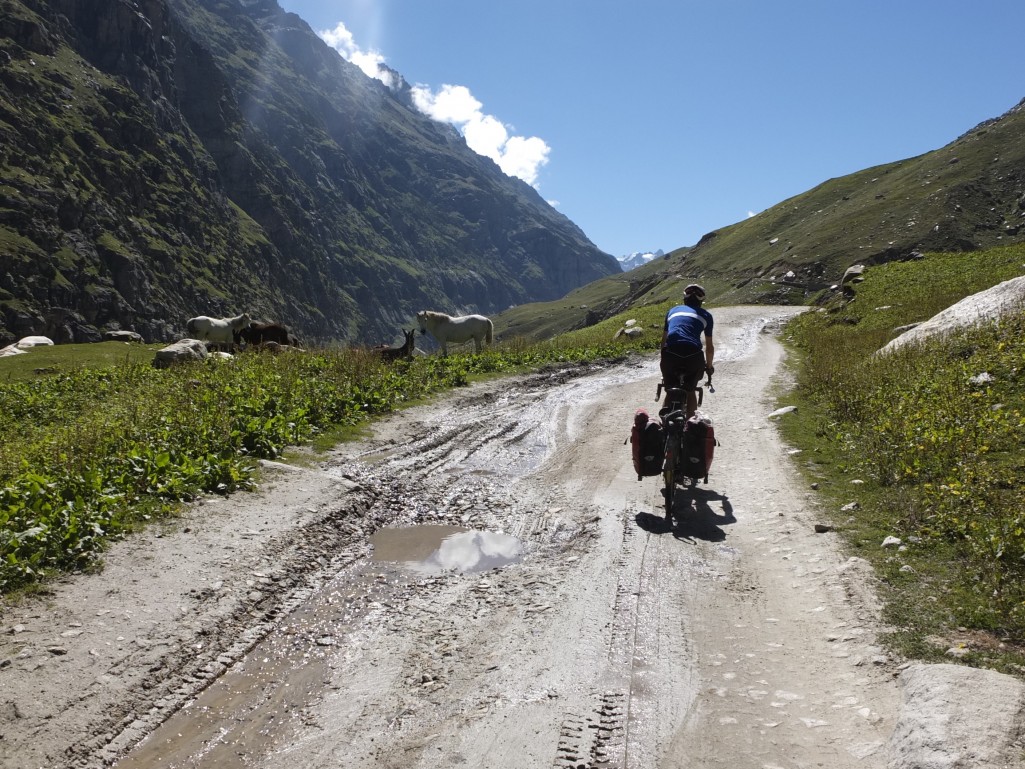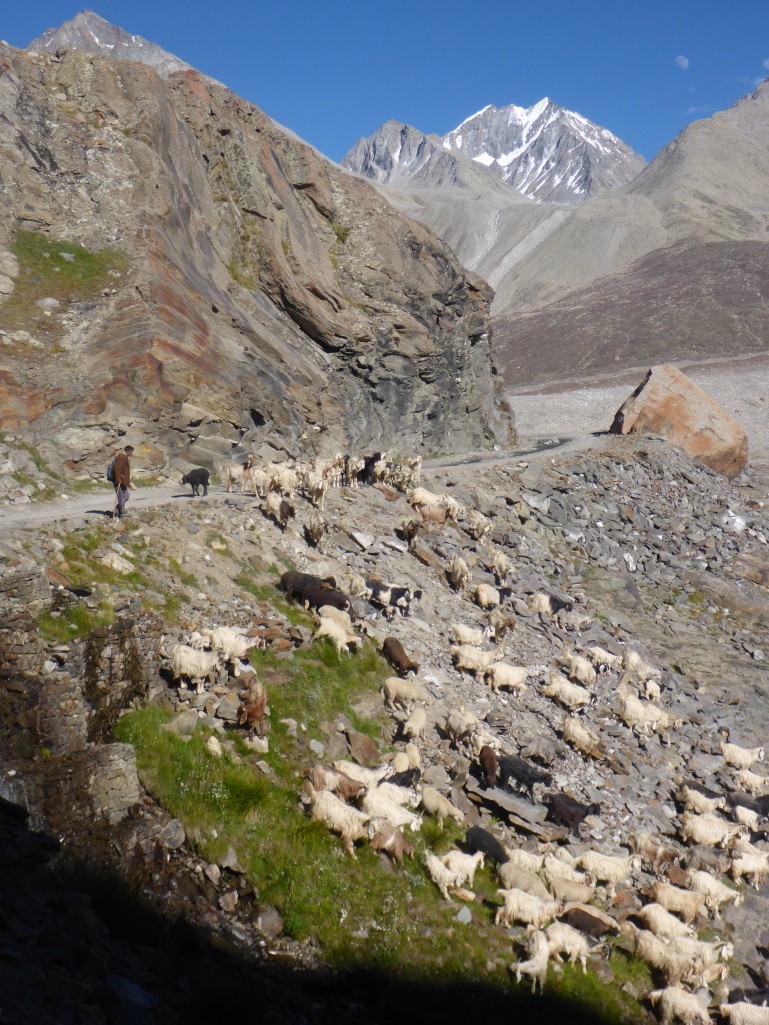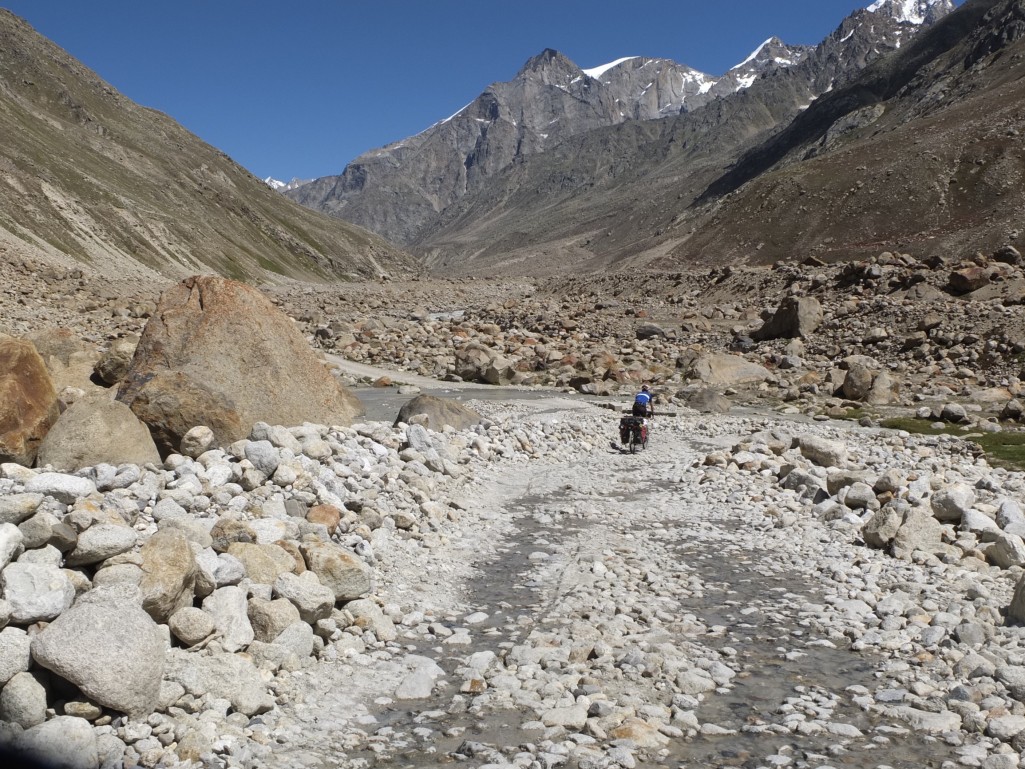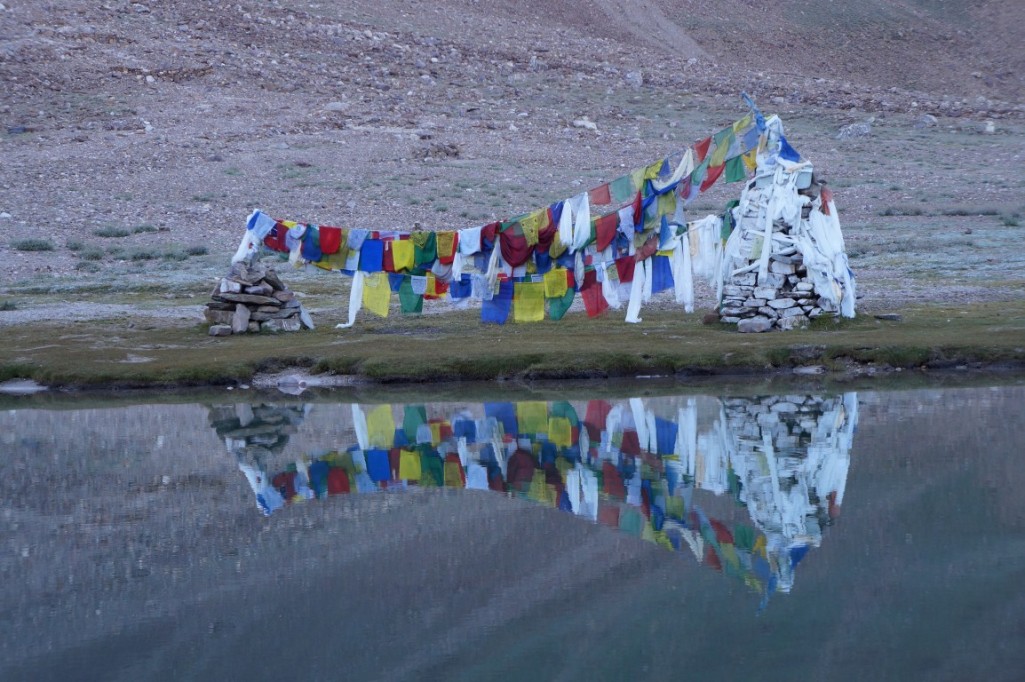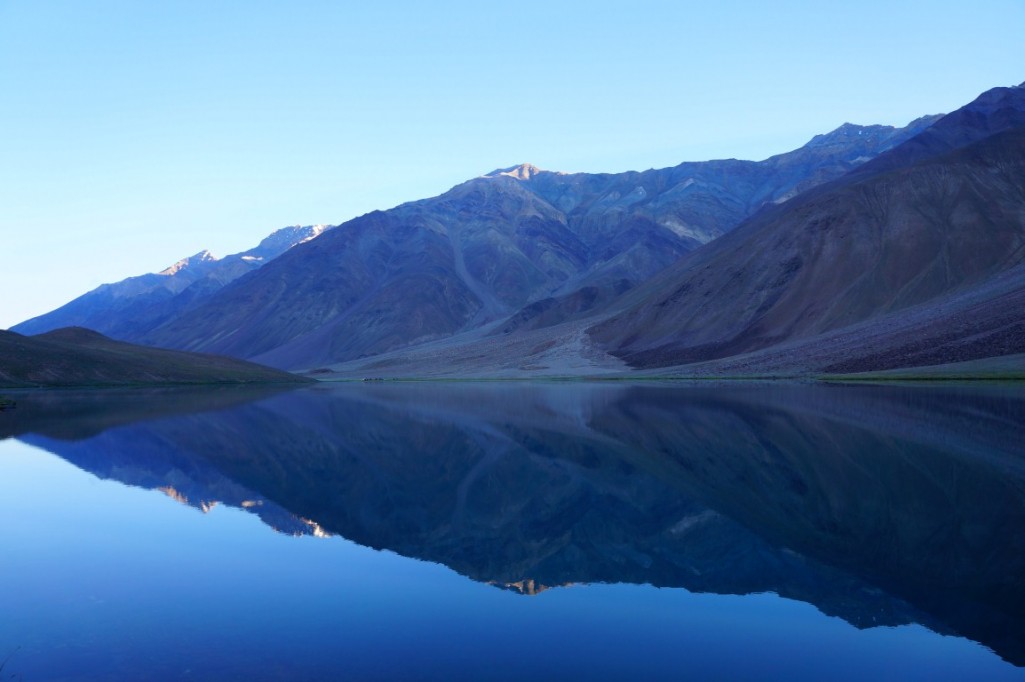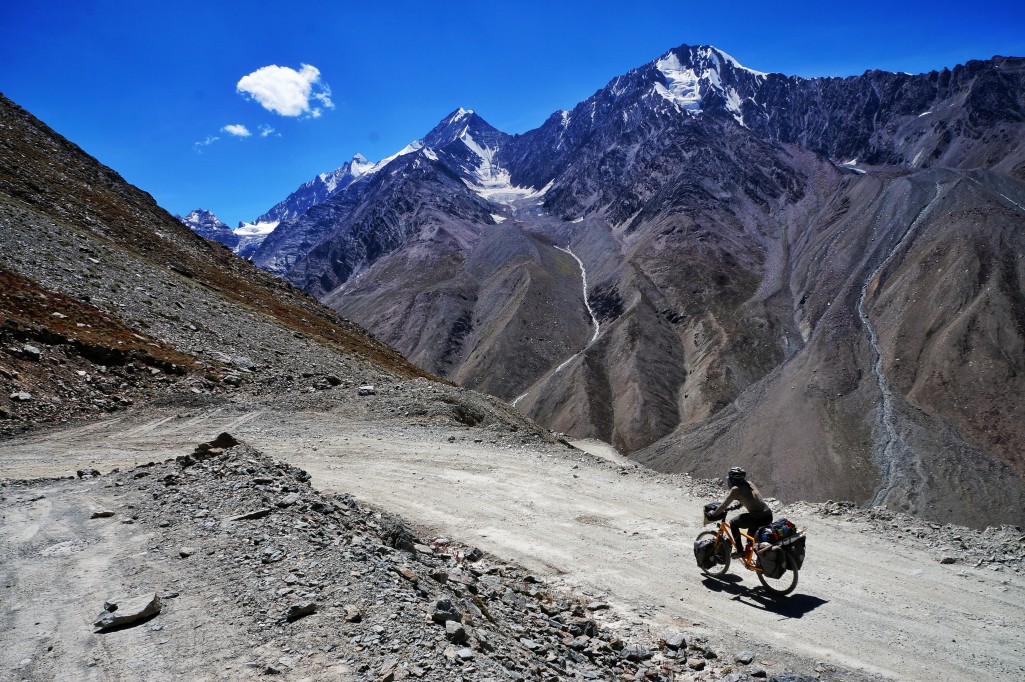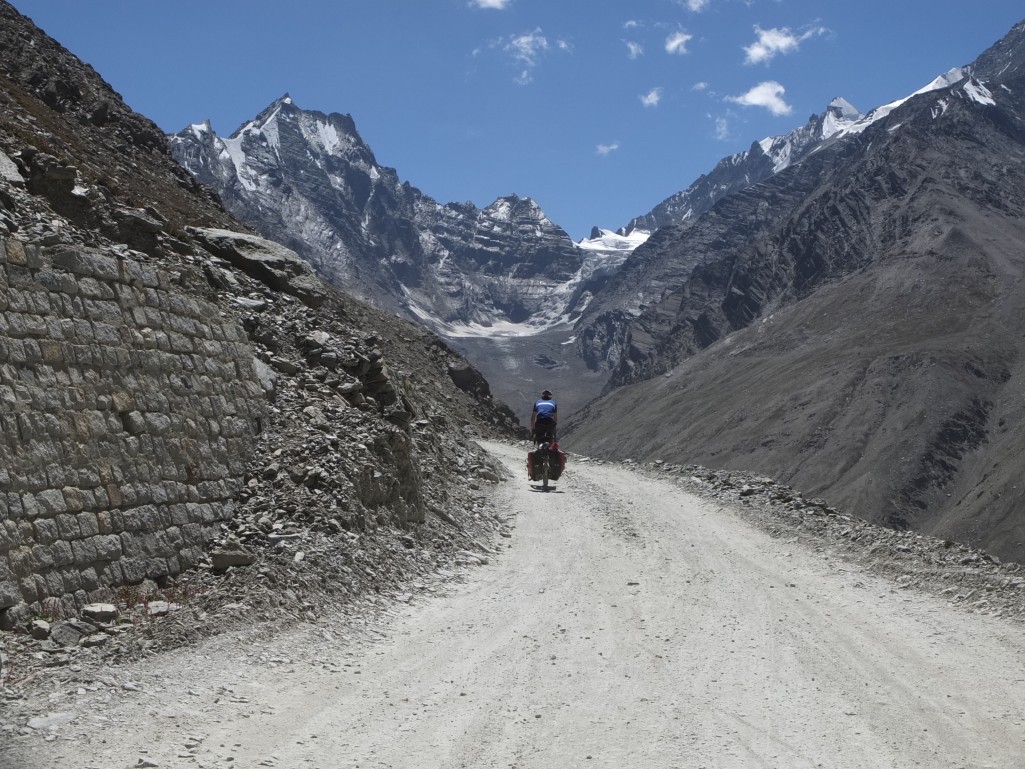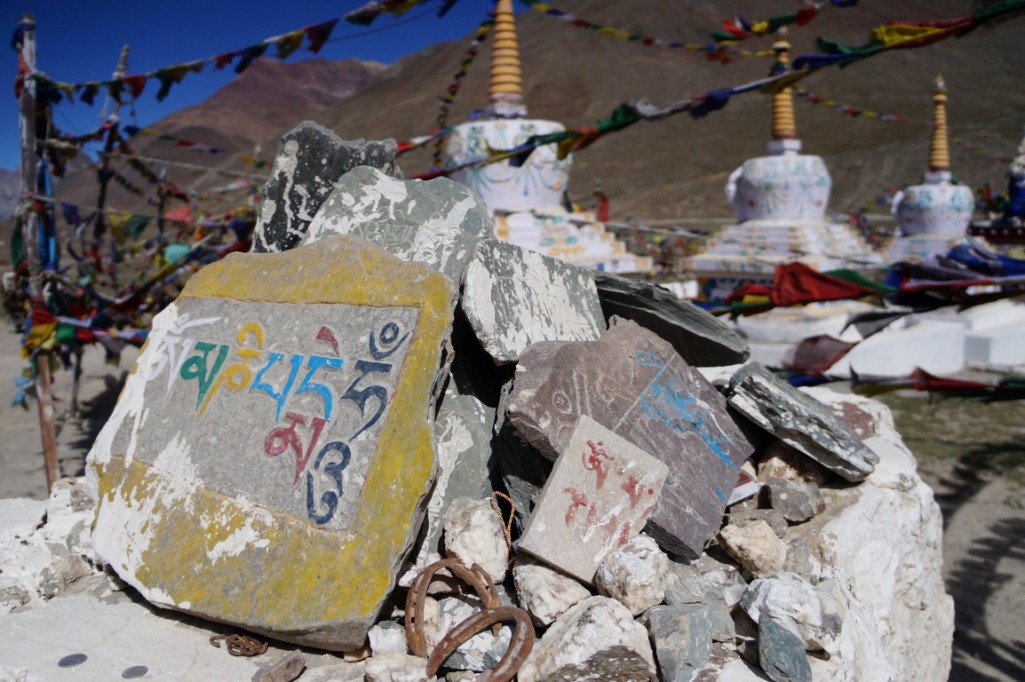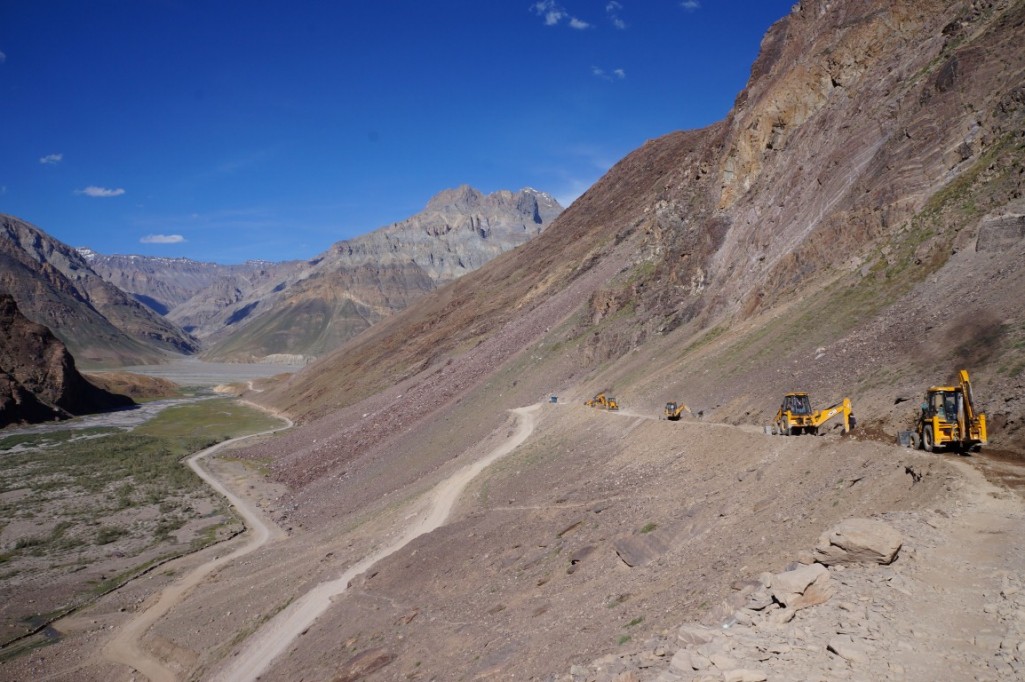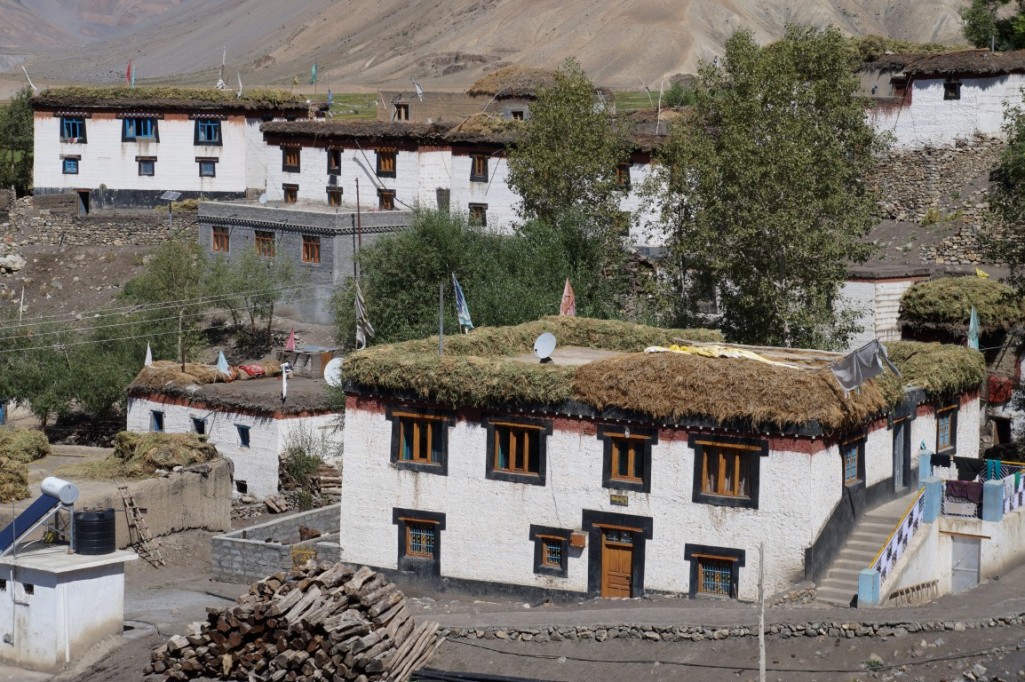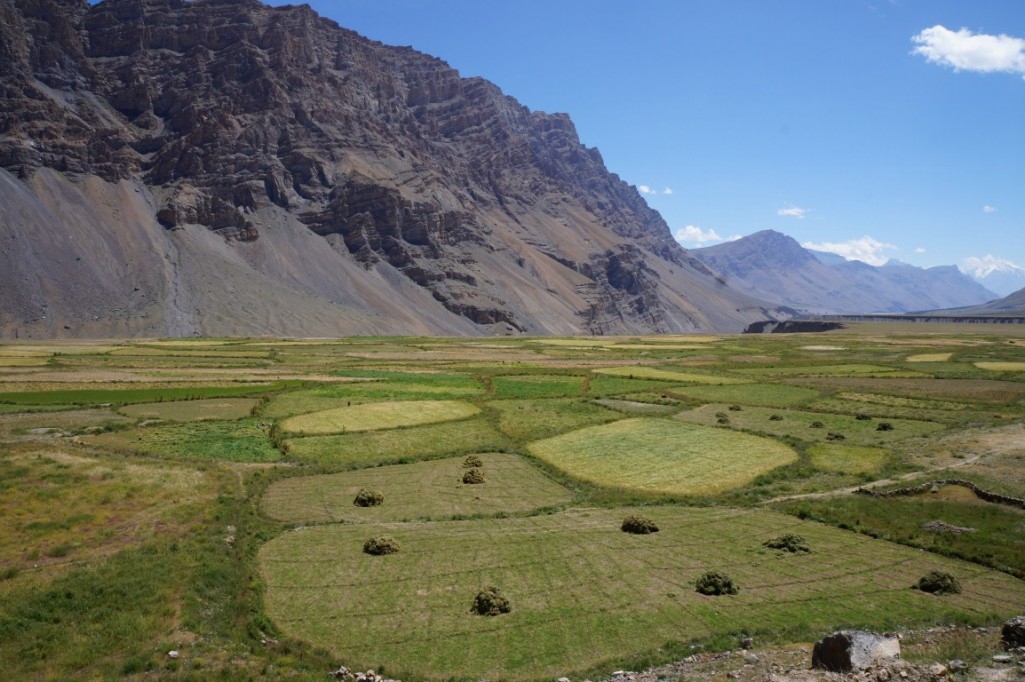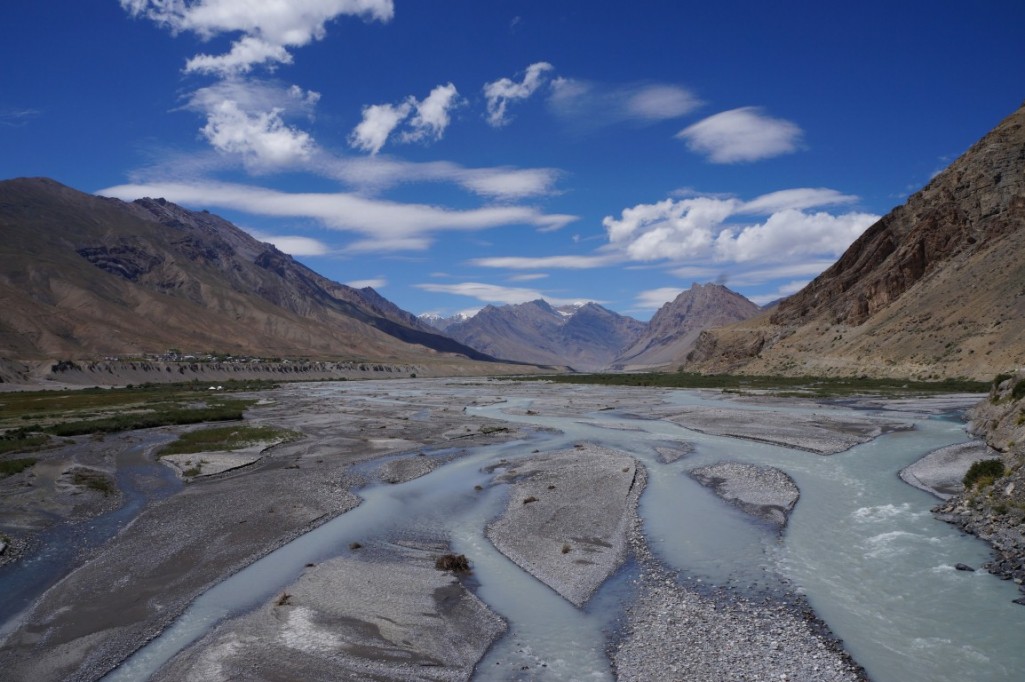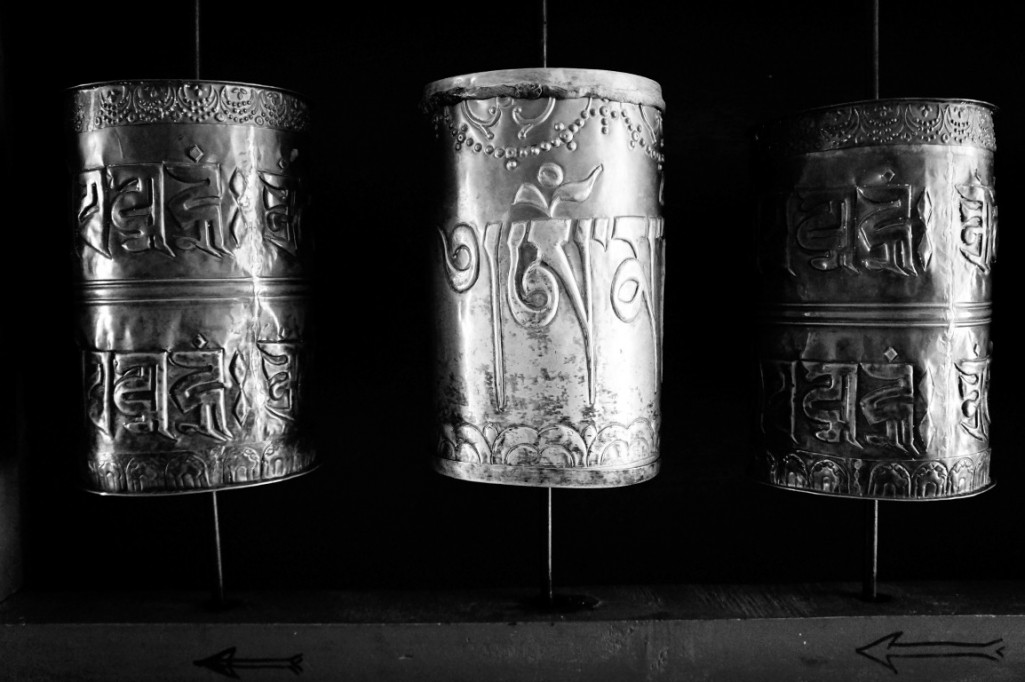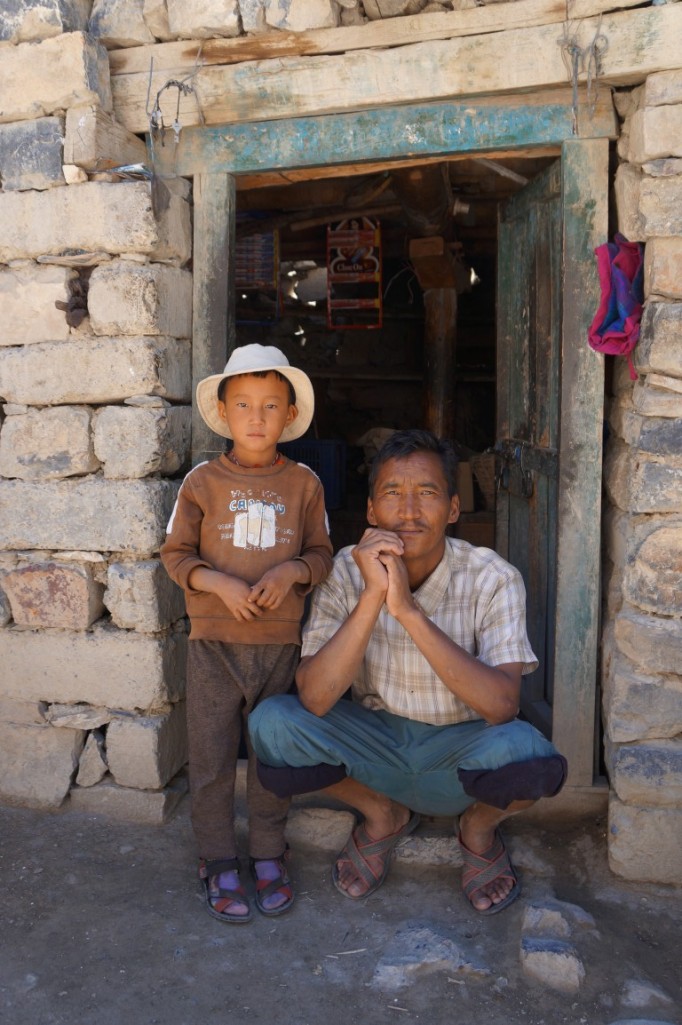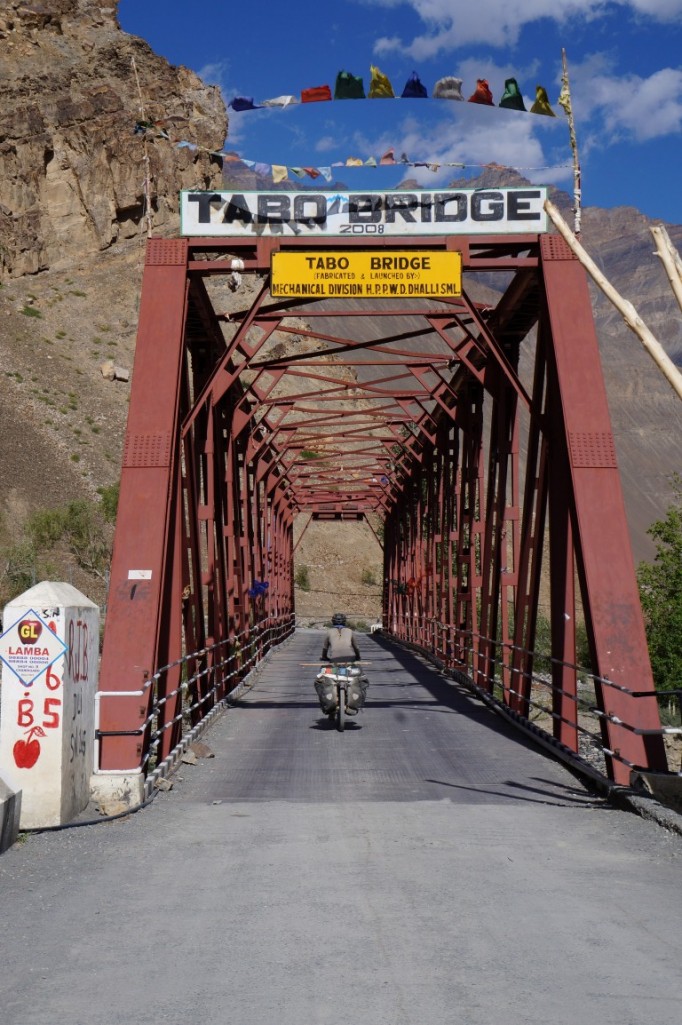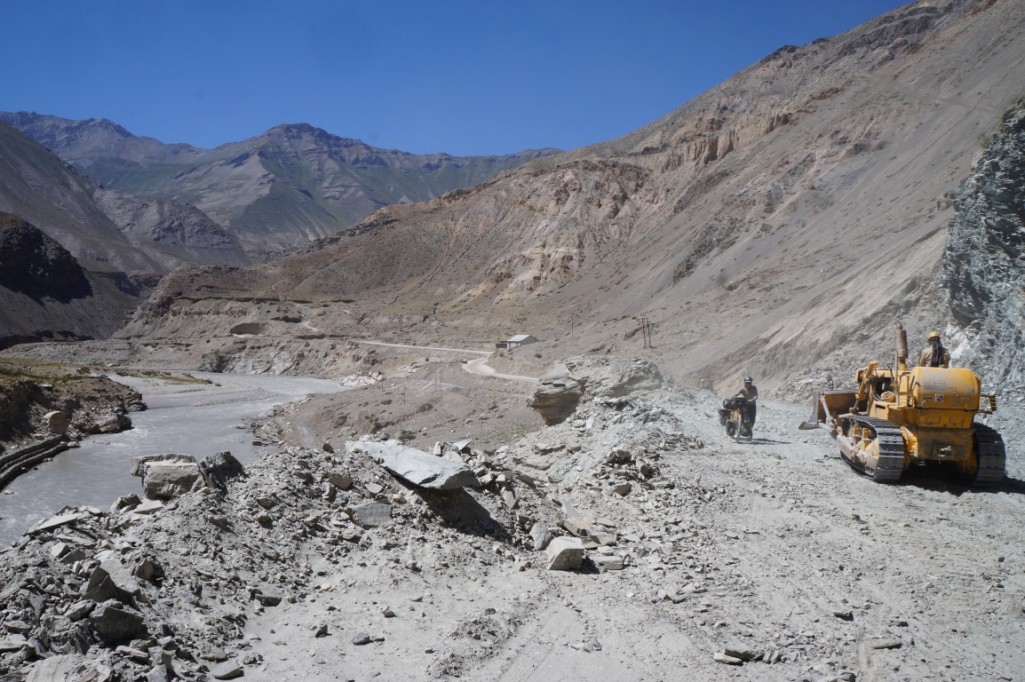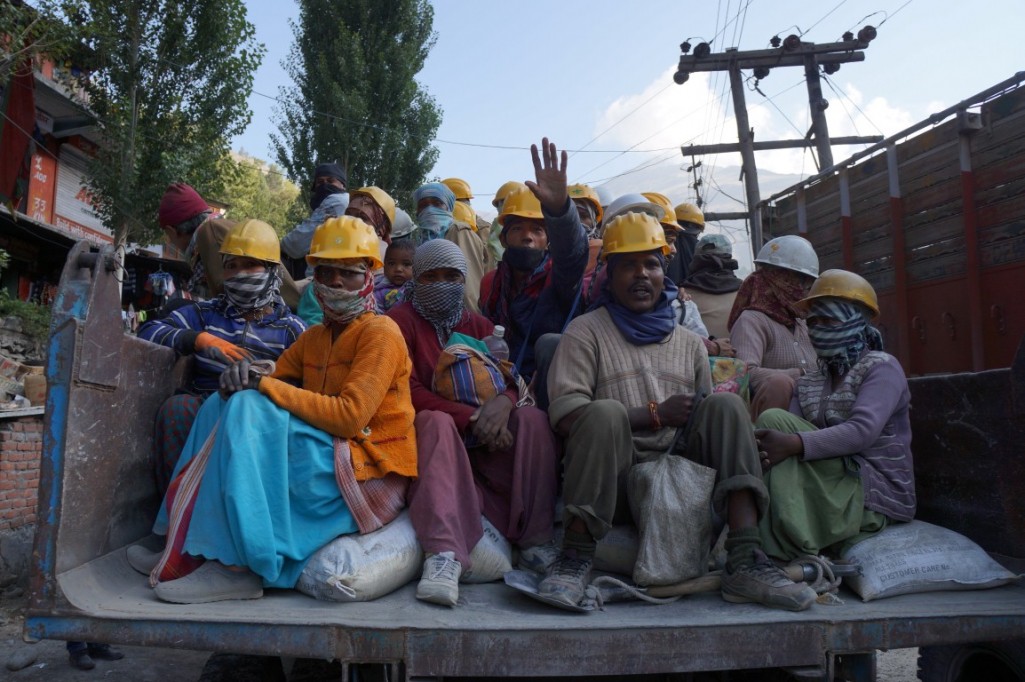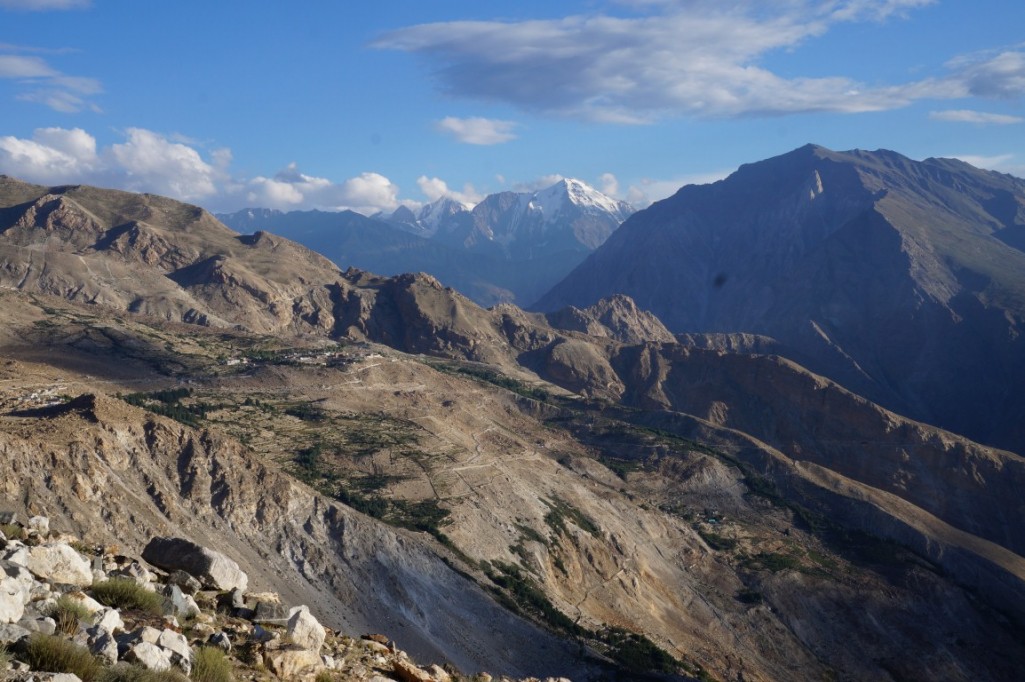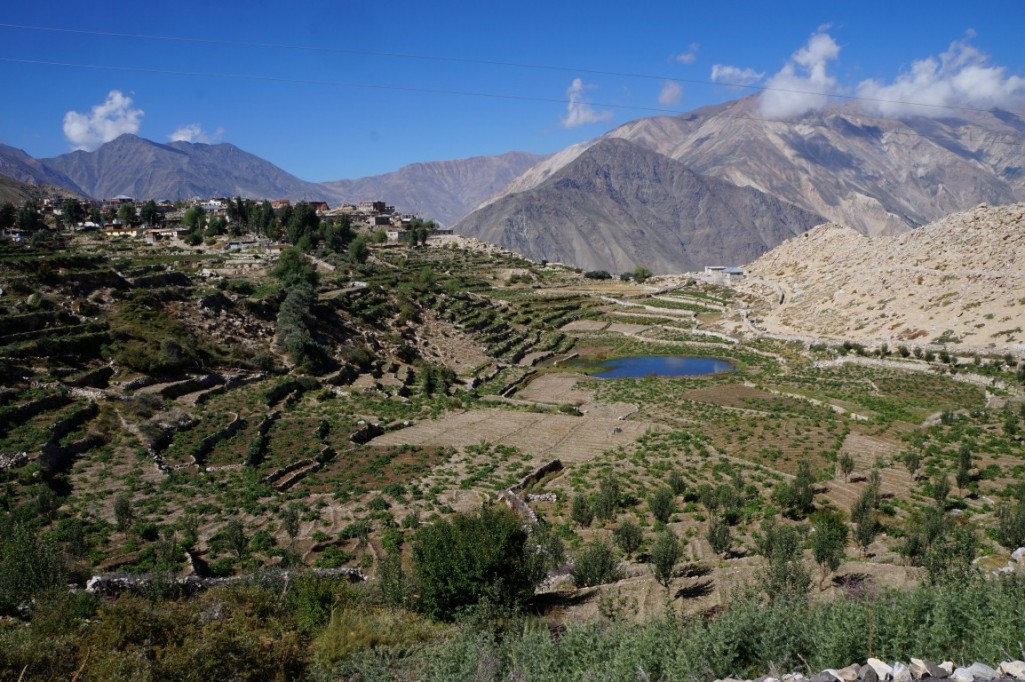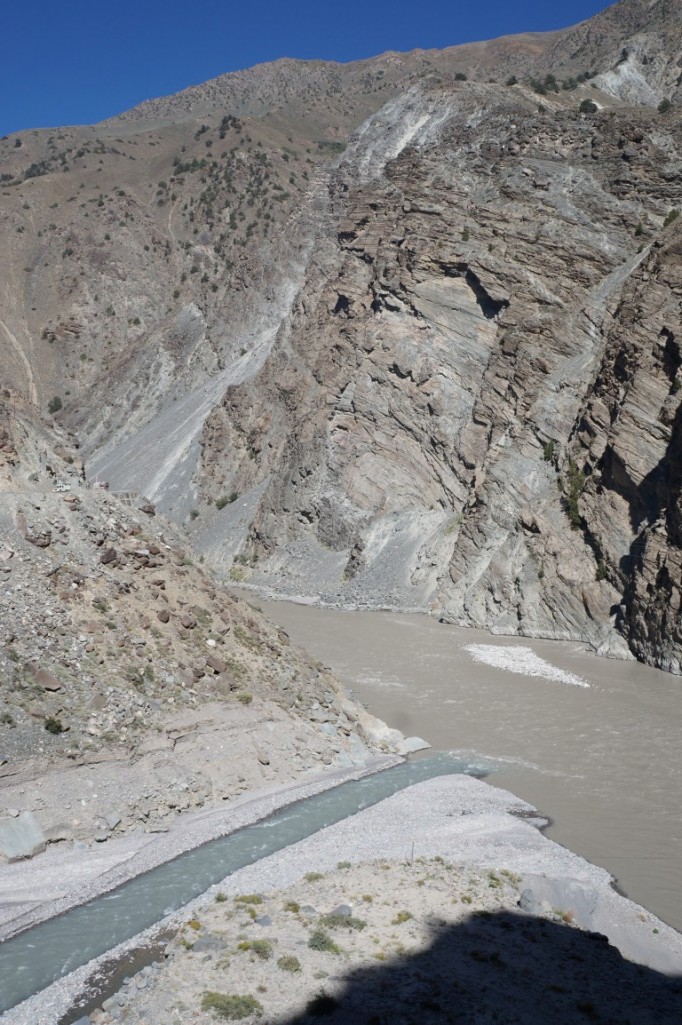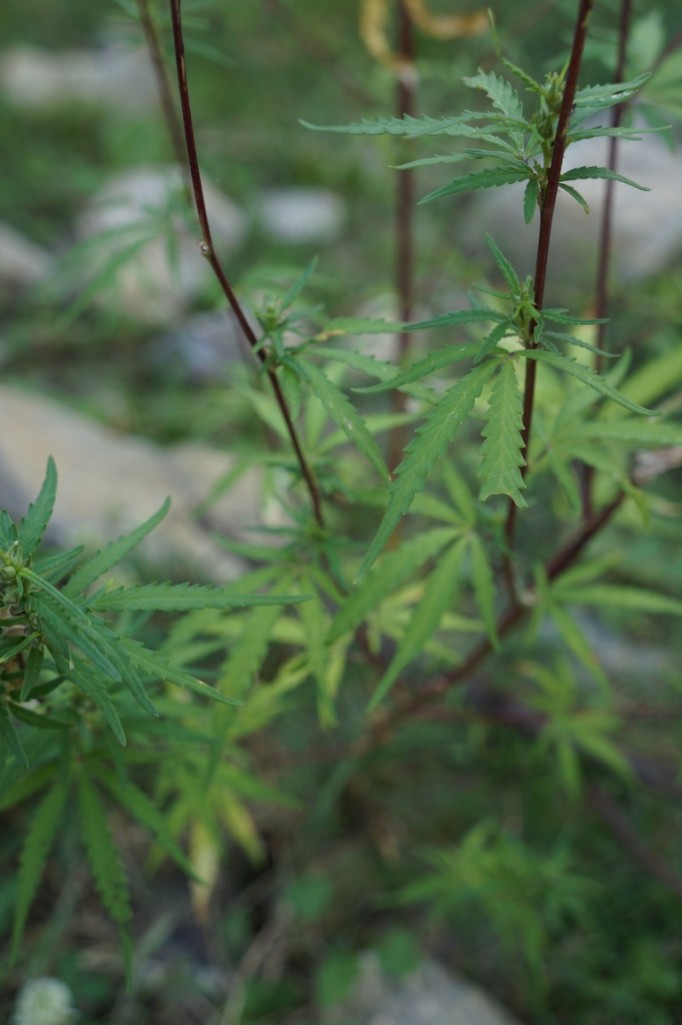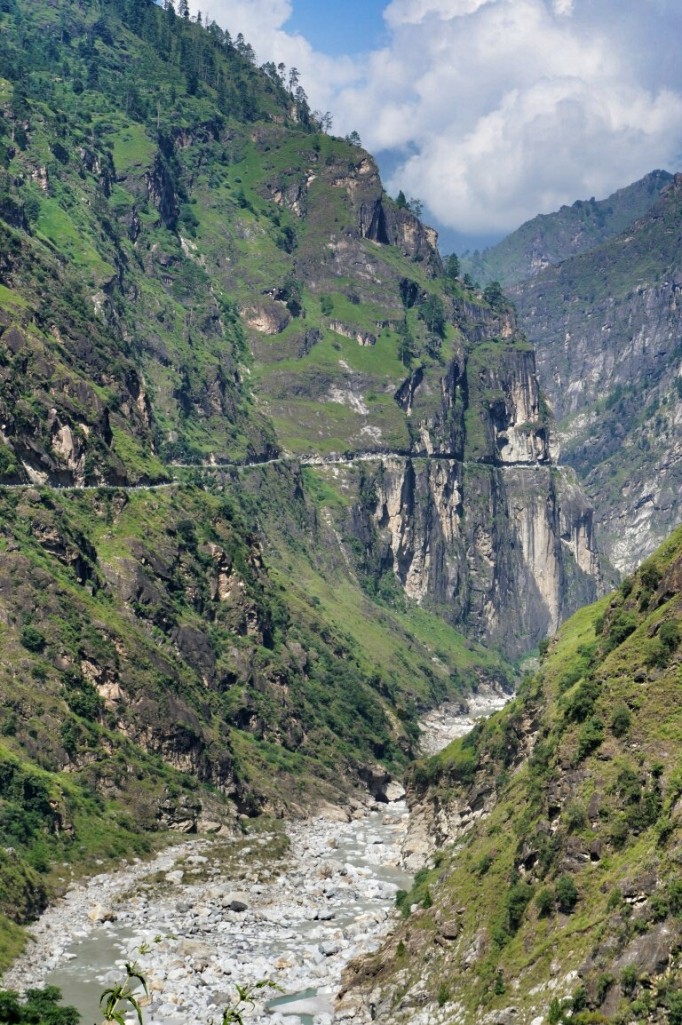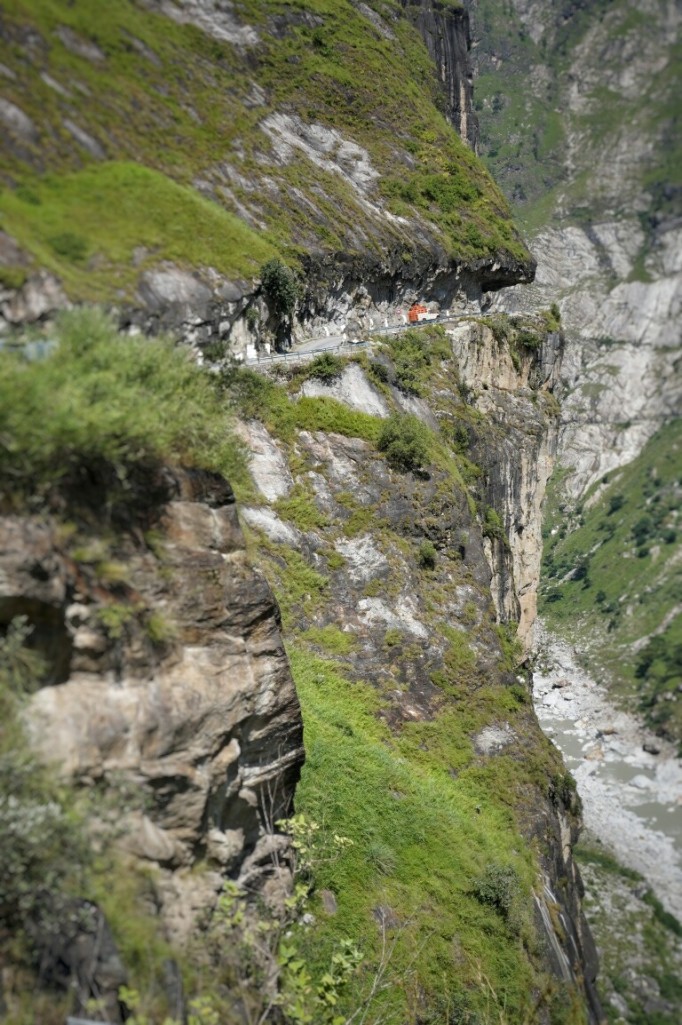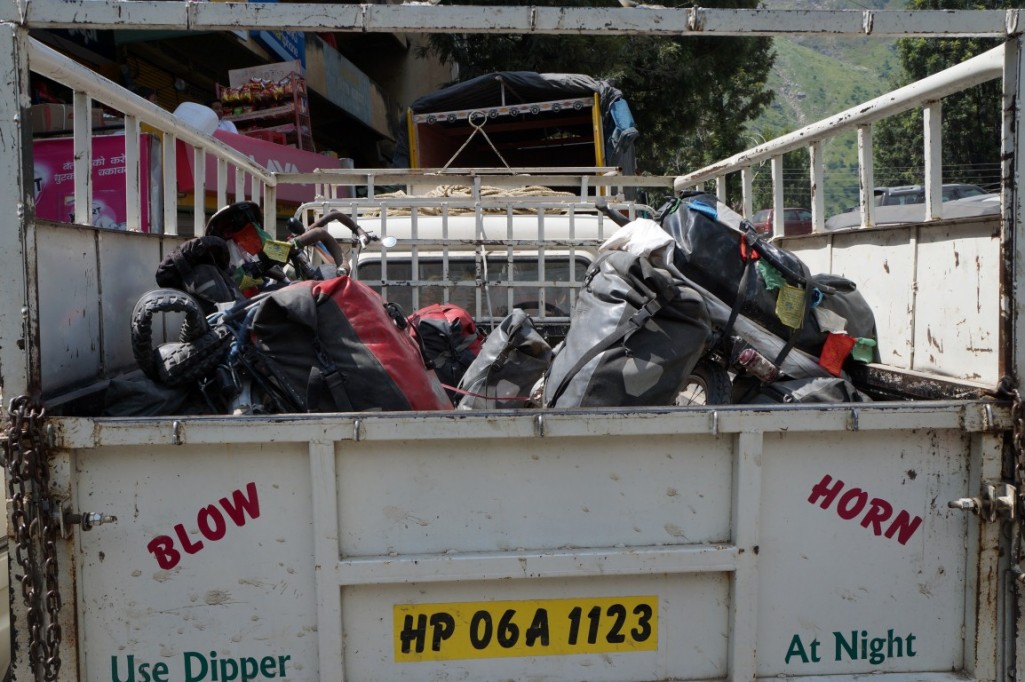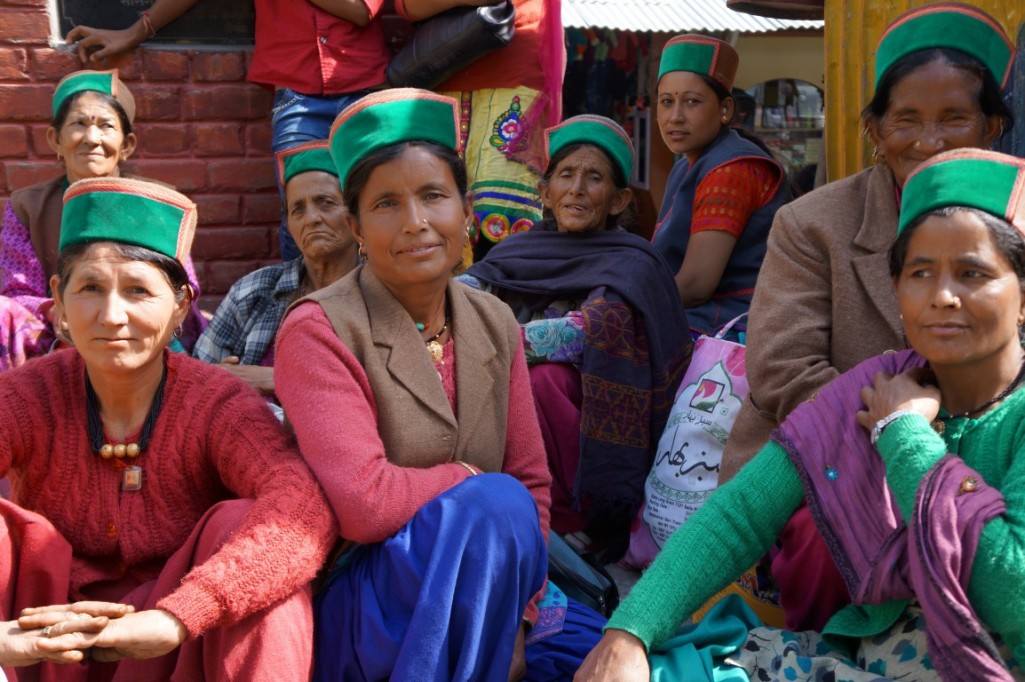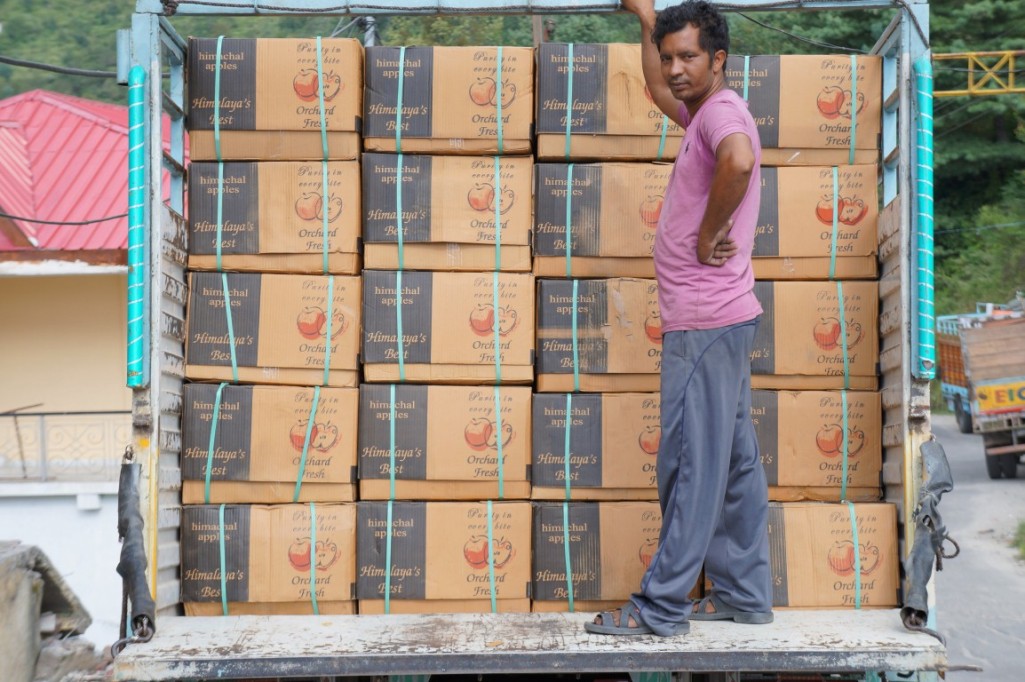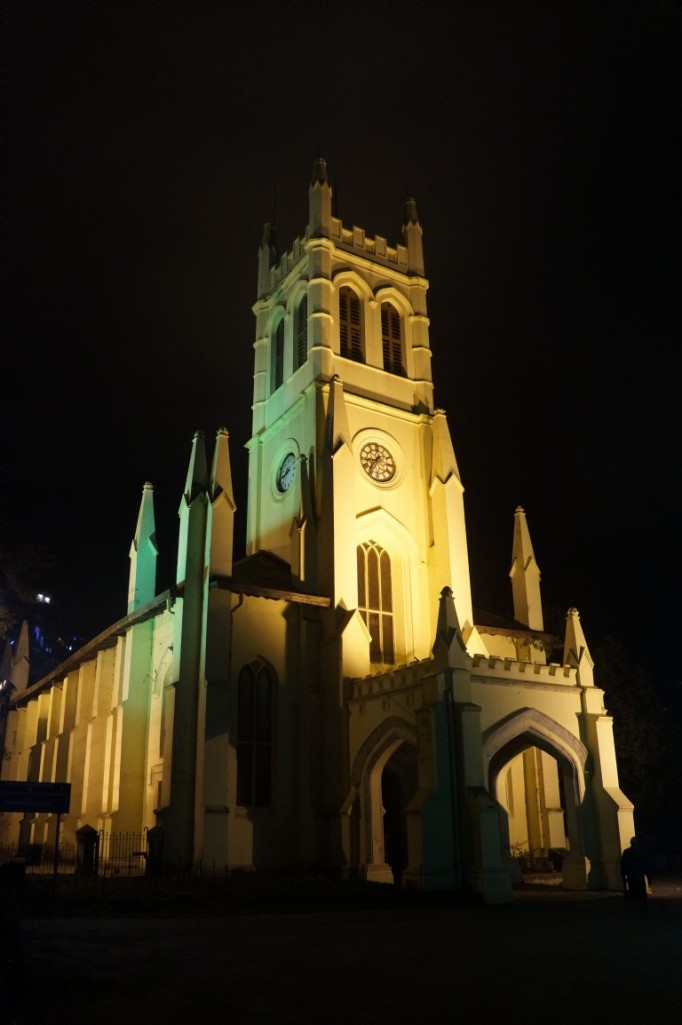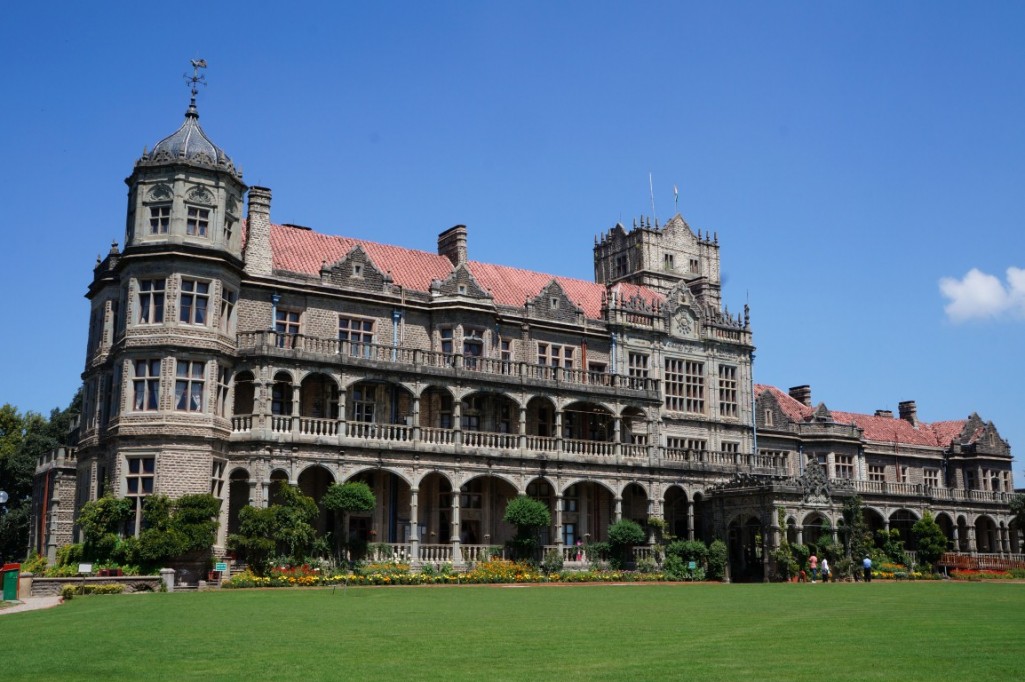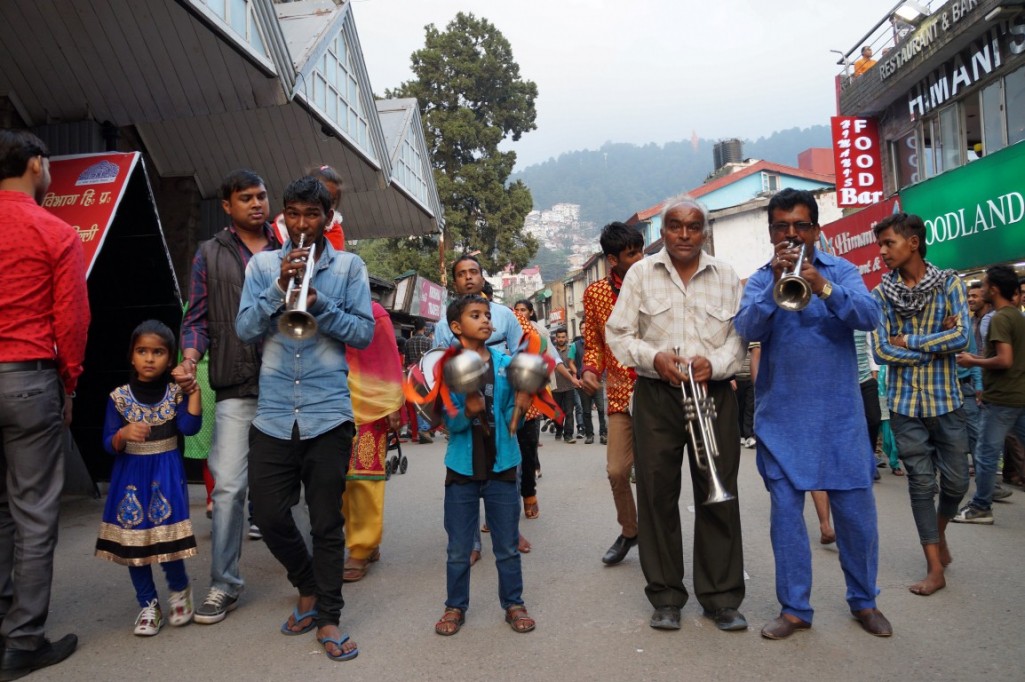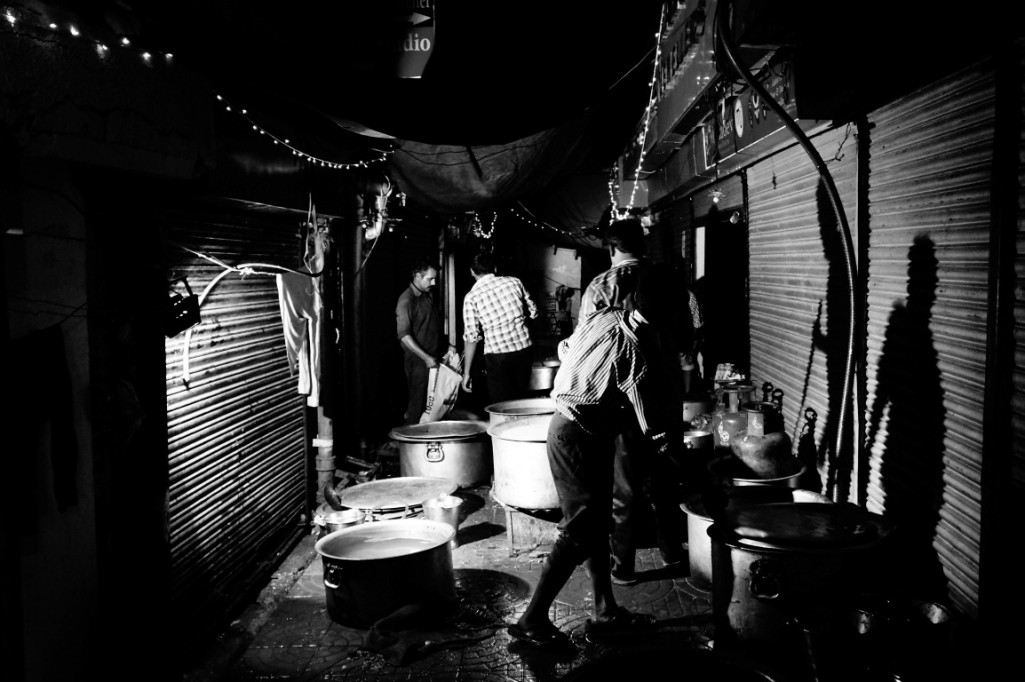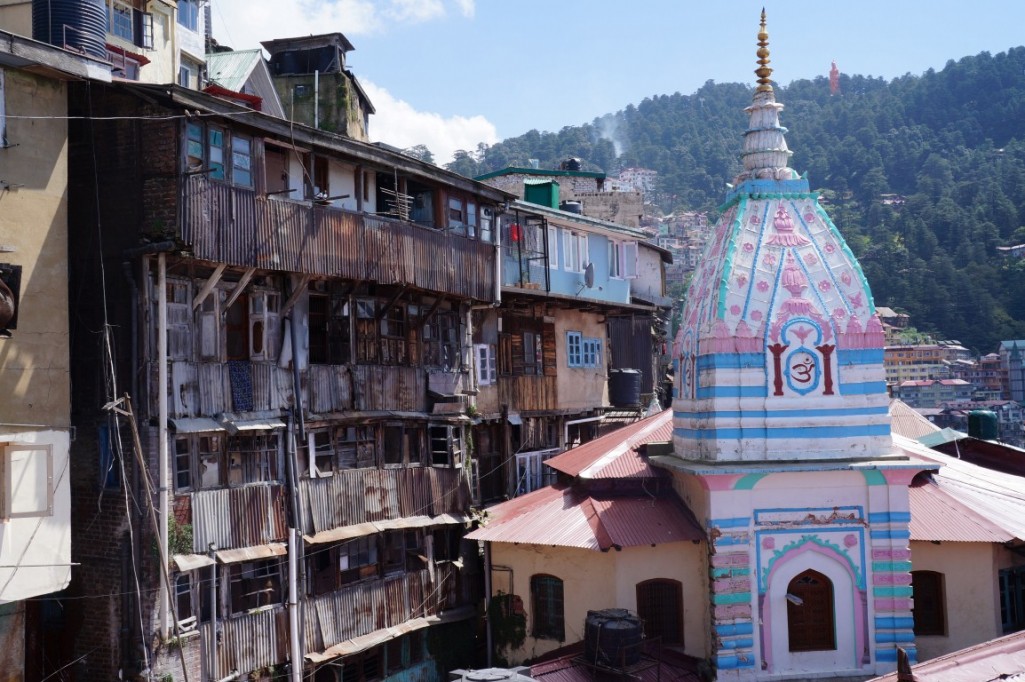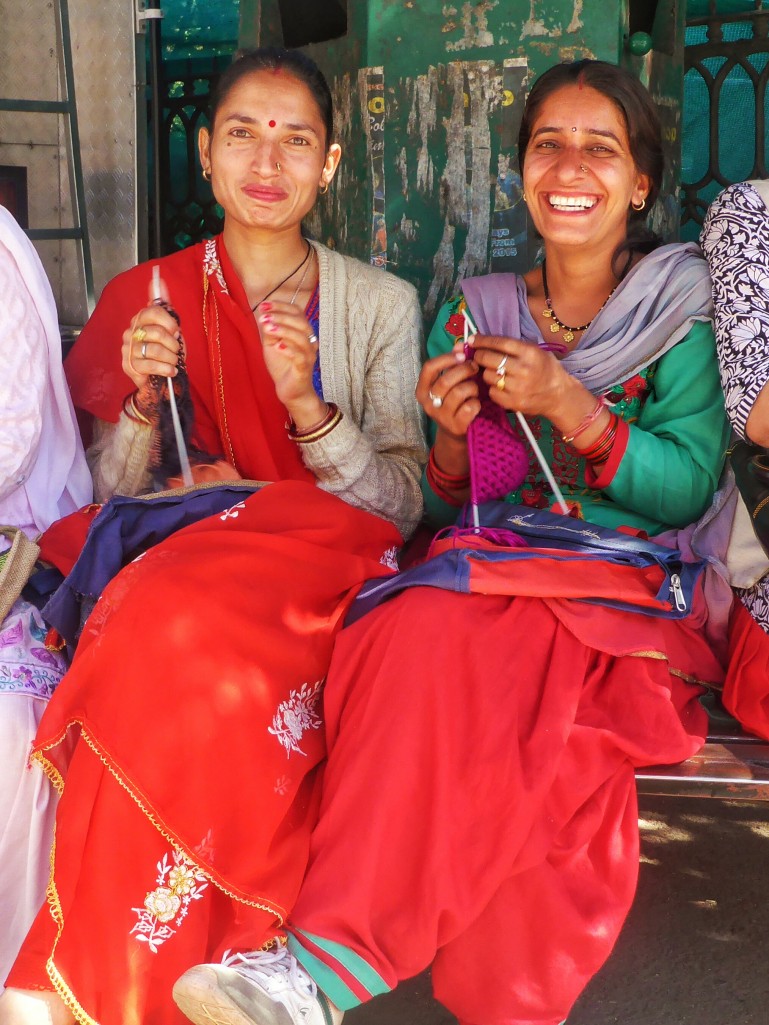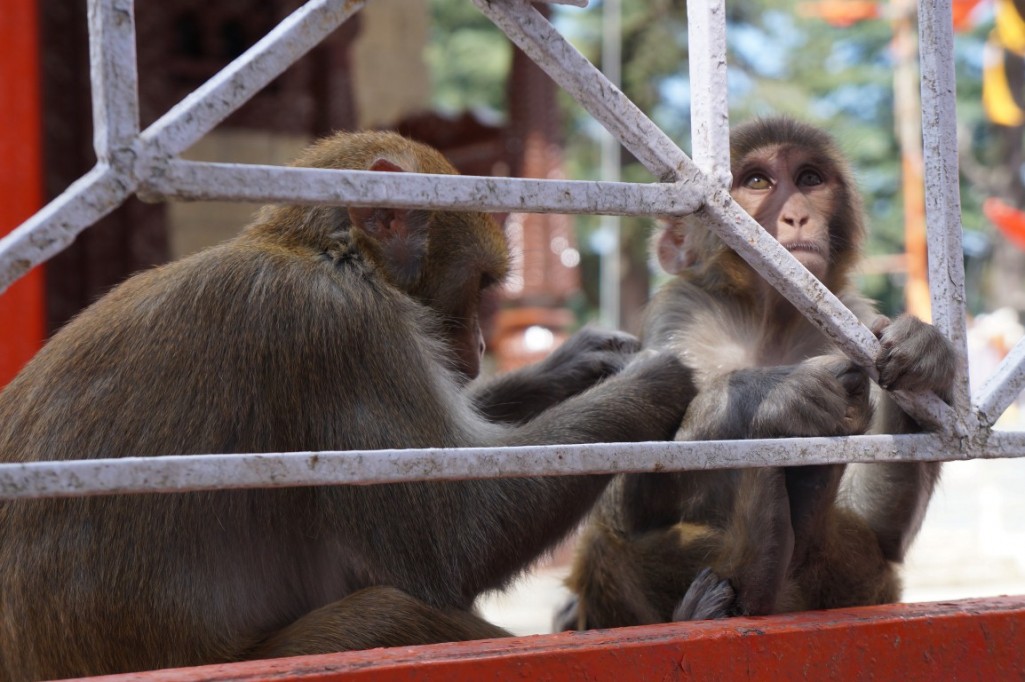Shimla to Kathmandu

“Where are you going?”
“Kathmandu!”
“On this bicycle?”
“Yes!”
“I do not think that this is possible.”
For as long as I can remember, almost universally the first question we’ve been asked by the people we encounter on this trip is “Where are you from?”. Admittedly this has varied slightly with the relentless “Atkuda, atkuda?” through Central Asia and “What-is-your-country-sir?”, “Ah-England-is-a-very-fine-country-sir-and-Alistair-Cook-is-very-fine-cricket-player” in India. But the Nepalese seem to be more concerned about looking forward rather than back, and everyone seems keen to know where we are going and not where we’ve come from. Looking to the future is a useful trait for a country that has had a difficult year after the terrible earthquakes in April, now compounded by a further crisis that we were about to arrive right in the middle of. More on that later, first we had to leave India.
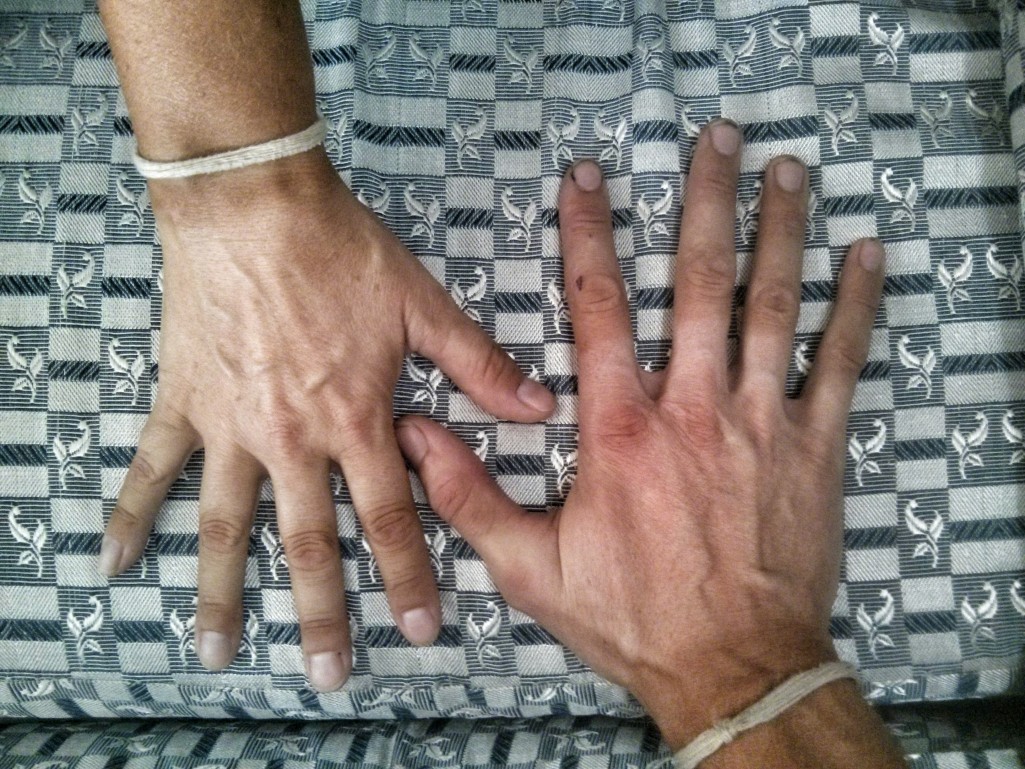
10 days of rest in Shimla have brought Kirsty back to a position where she can contemplate riding the bike again. Our prolonged stay has put us on first name terms with the local cafe staff and they tell us they’ll be sorry to see us go (along with the thousands of rupees we’ve spent there). The monkeys see us off too by snatching a bag with our lunch in it right from Kirsty’s hands.
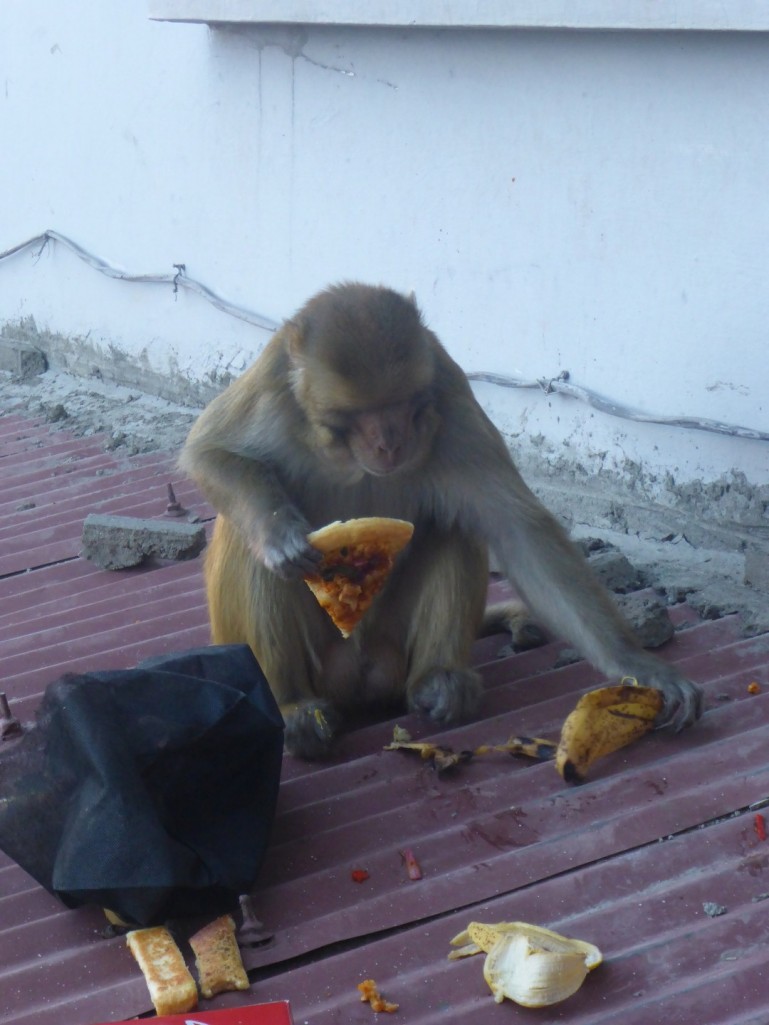
To ease Kirsty’s legs back into cycling mode again without too much of a shock we take the ‘Toy Train’ off the ridge to avoid more difficult mountainous terrain. This picturesque narrow gauge line is a legacy of the British Raj and is one of the world’s classic rail journeys. It winds around the hills through 100 tunnels and over several hundred bridges, stopping at various stations to allow the purchase of samosas and chai due to the lack of a buffet car. We disembark at Kumarhatti and stop there for the night.
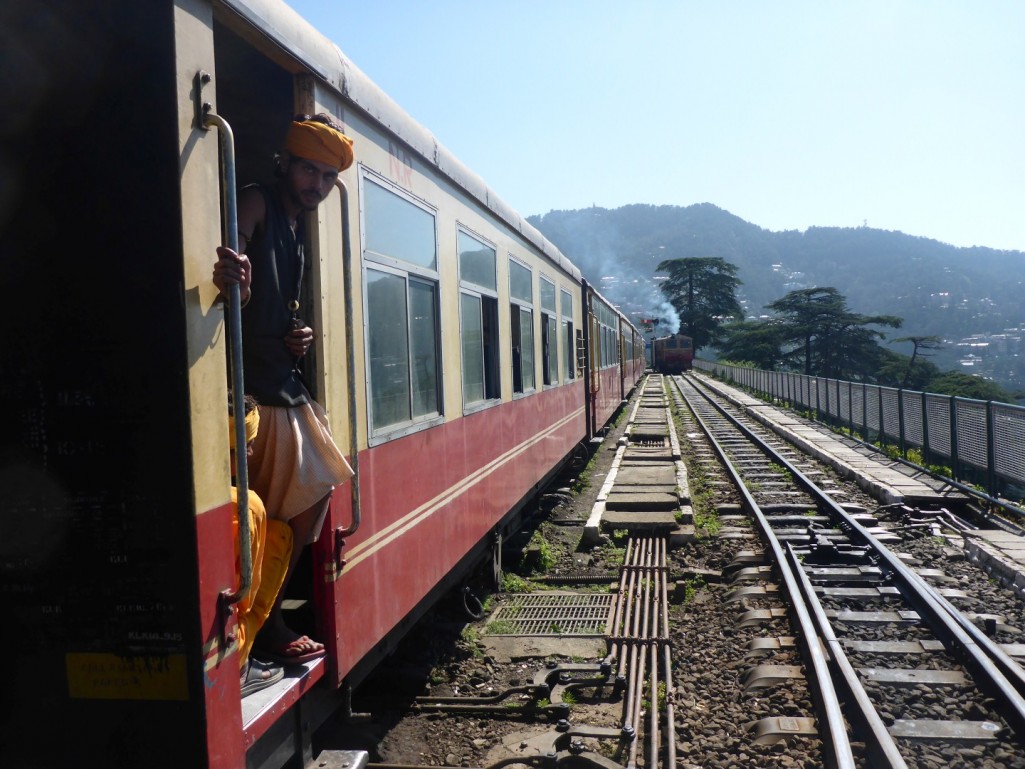
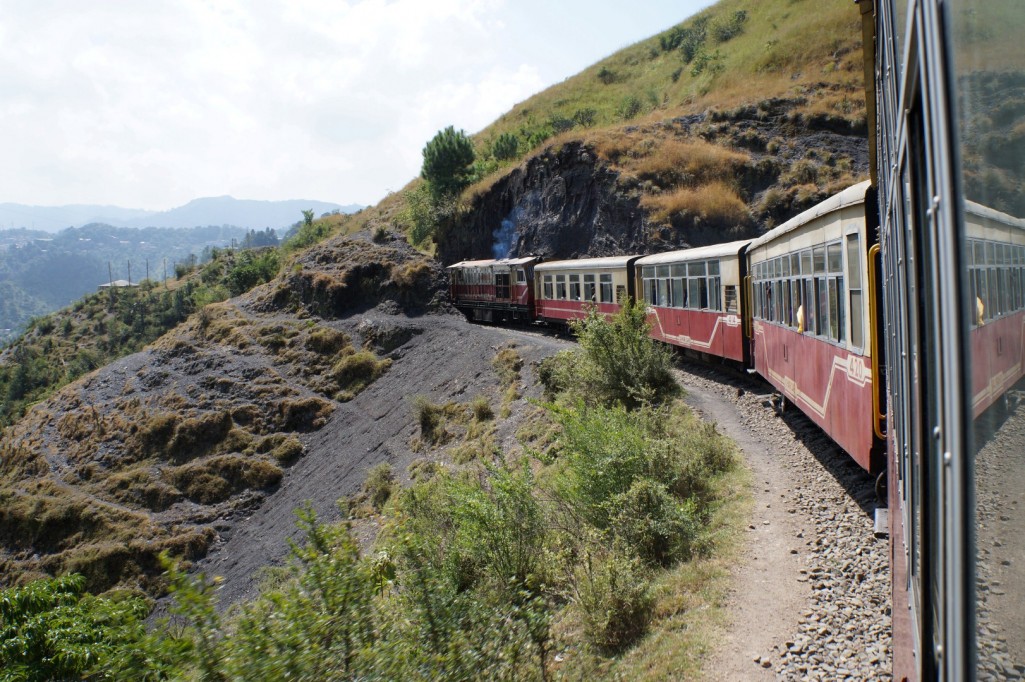
Then we’re both back on the bike after 23 days of either 1 or both of us not riding. The day begins with a gentle descent followed by a steady climb. All crew members seem to be functioning correctly and we enjoy some more ups but mostly downs through to mid afternoon. The annoying macaques and curious grey langur monkeys are still in abundance in the trees so we keep our food safely packed away. On the final drop we’re accompanied by a small car with a man hanging out of it to film us.
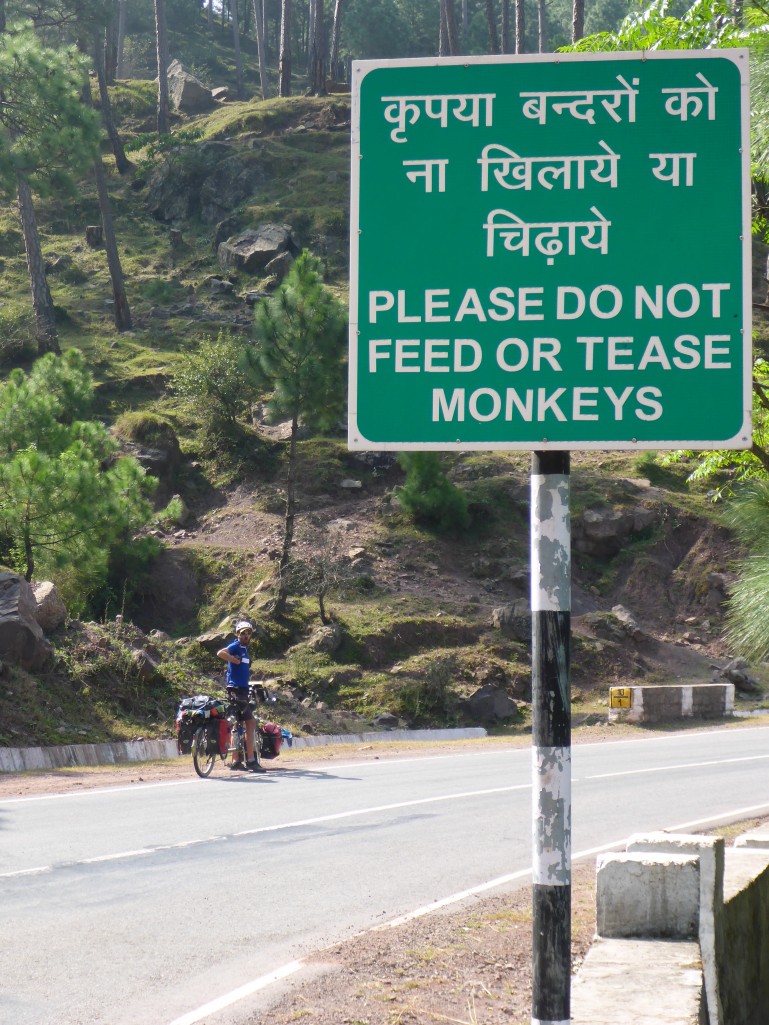
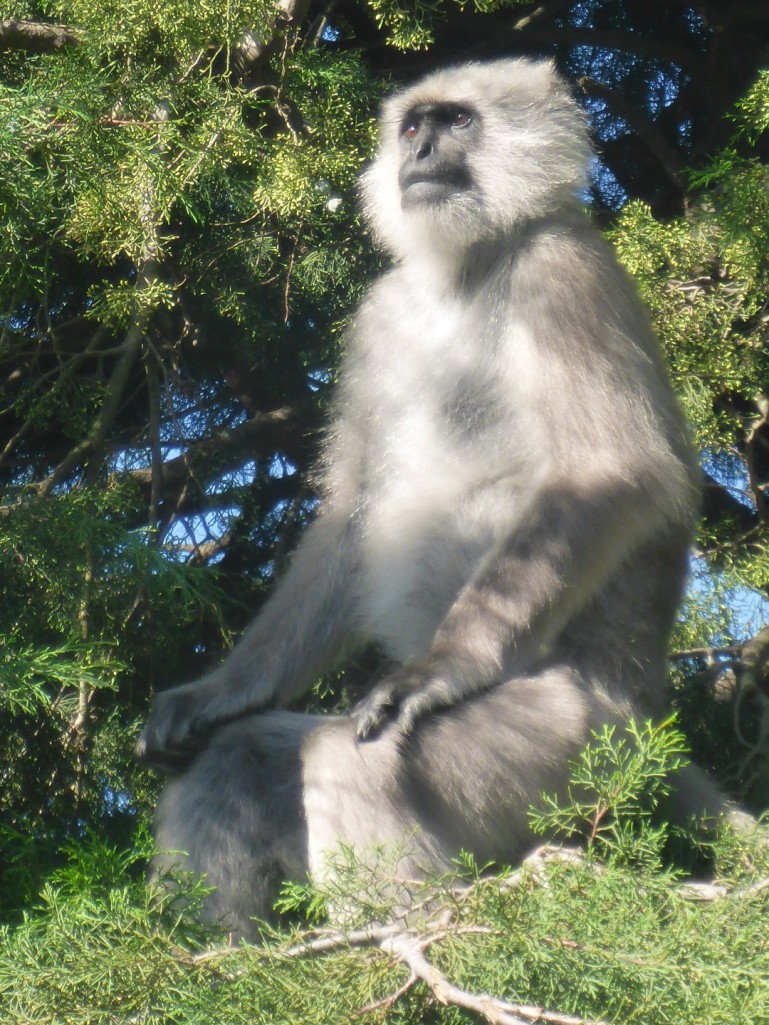
Then we hit a brutal climb before Nahan to end the day. We’d joked on our way down that the town would be at the top of the steep hill in front of us and sure enough it is. Our hill climbing legs have lost some of their power but we just about manage to winch to the top. There’s a scout jamboree taking place and we catch a few of them playing a furious game of kibadi in front of the Sikh temple.
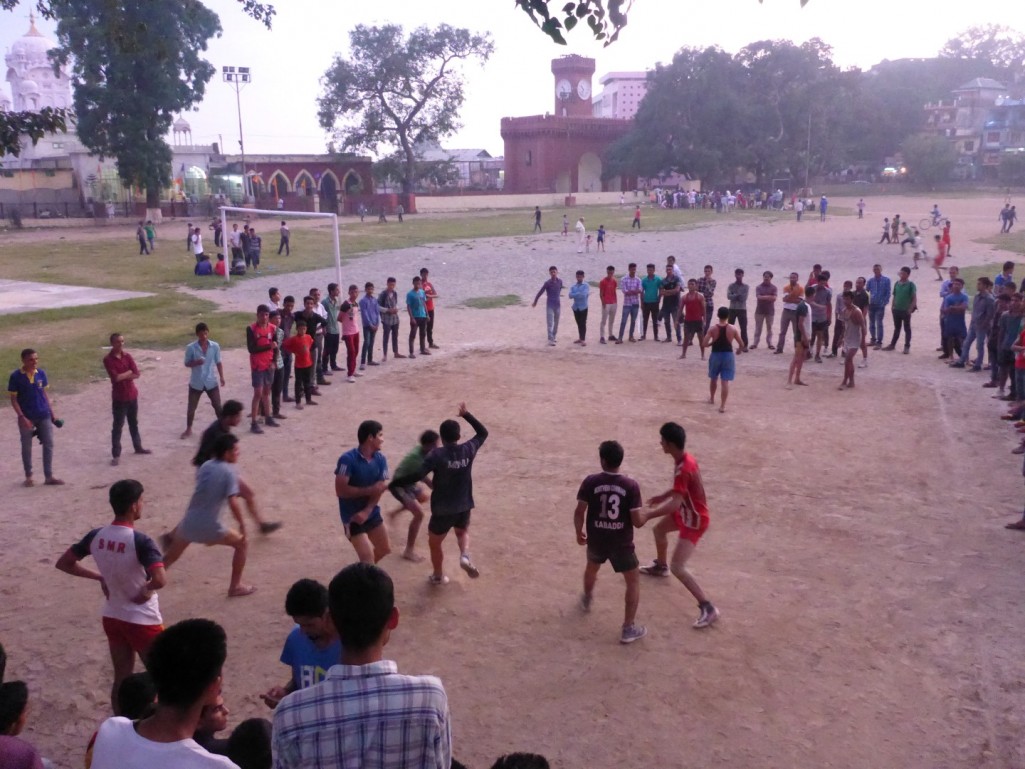
While refueling in the evening we’re joined briefly by Shibu. He seems a little odd but is keen to show us round so we agree to meet in the morning.
“English people get up very early, yes? Shall I meet you at 5:30?”
“Better make it 8:30, thanks Shibu”.
At the allotted time we venture out and Shibu is already waiting for us, he’d been there since 8. We’re greeted with a big hug as his ” Brother and sister” then he leads us out hand in hand. It’s perfectly normal for men to hold hands in this part of the world and men and boys do it as a sign of friendship just as couples would do in the west. I’m keen to show acceptance of their culture so have no problem when he shifts his arm onto my shoulder.
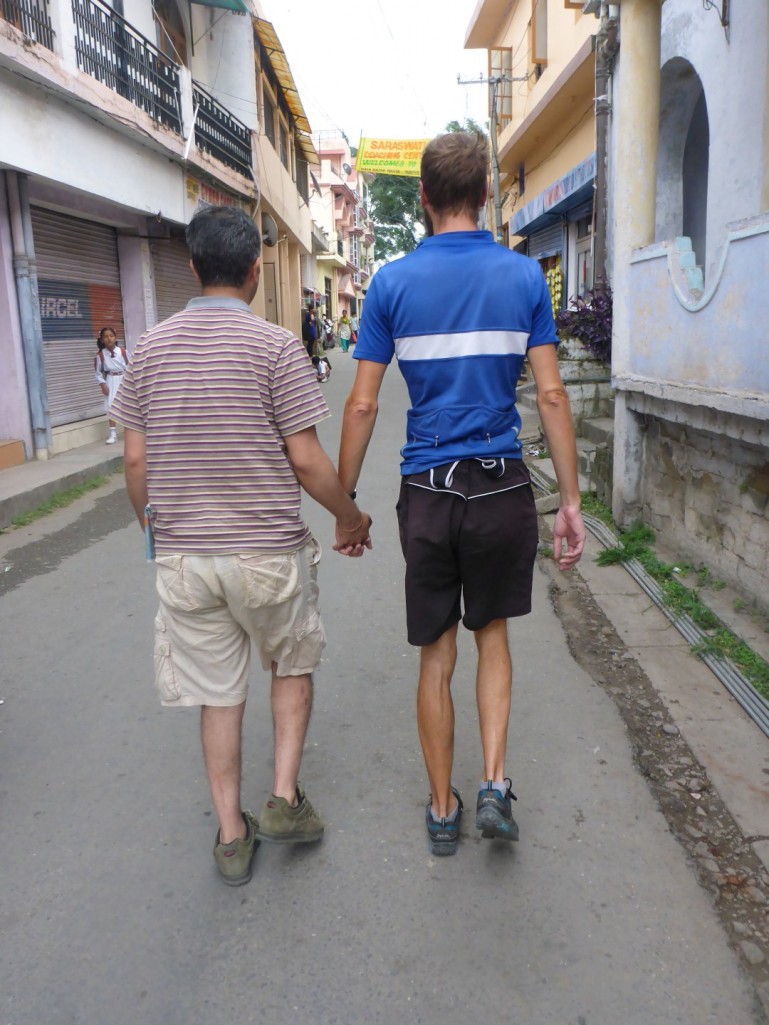
We walk through the bustling, narrow streets with the typical Indian hive of activity cranking up at the start of a new day. Shibu’s arm drops down and he begins rubbing my back as we walk, but he’s just showing that he wants us to be good friends I suppose. Kirsty isn’t so relaxed when he begins to do the same to her with his hand creeping under the back of her shirt, so we have to draw the line at back massage. This is beyond normal behaviour even in India.
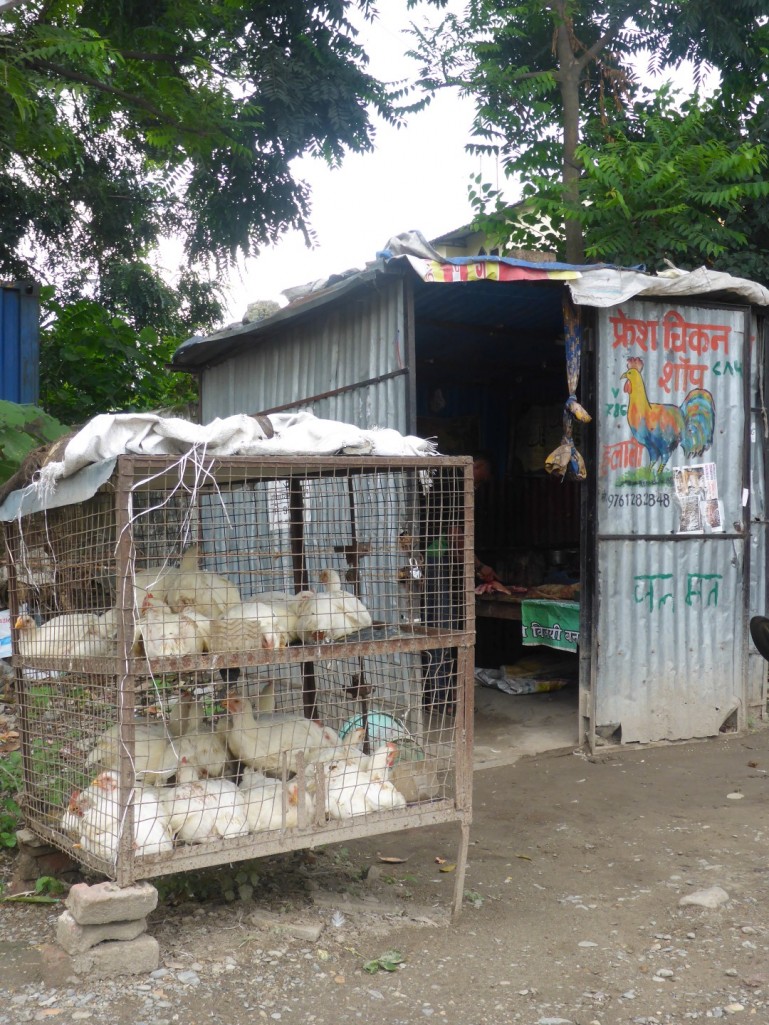
We assumed we were being led to his house but it’s actually a wild goose chase and we zig zag all over town, always “just another 5 minutes” to his home. When we start trudging down the steep hill while he talks about feeding each other apples, spending the rest of the day together and asking us “Do you like fun?” we have to make our apologies and make our escape. The poor chap is clearly upset that we’re leaving but we’re not sure we’d have ever been able to leave if and when we got to his house.
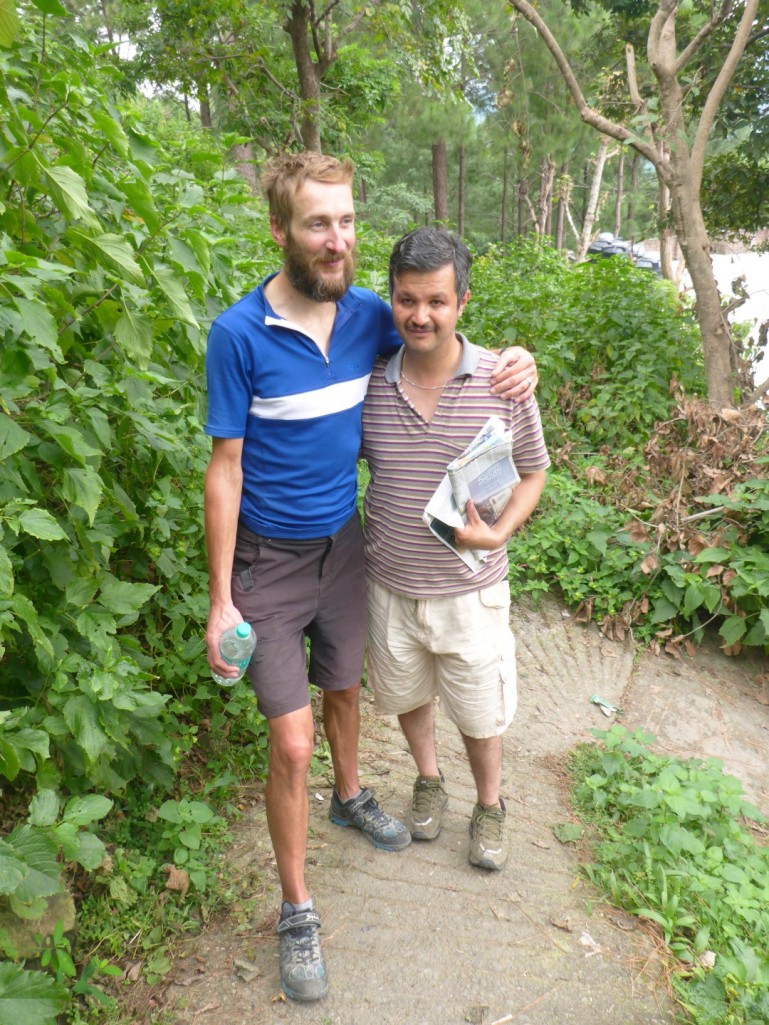
We quickly fetch the bike and with gravity on our side we plummet down the hill laughing about our curious new friend.
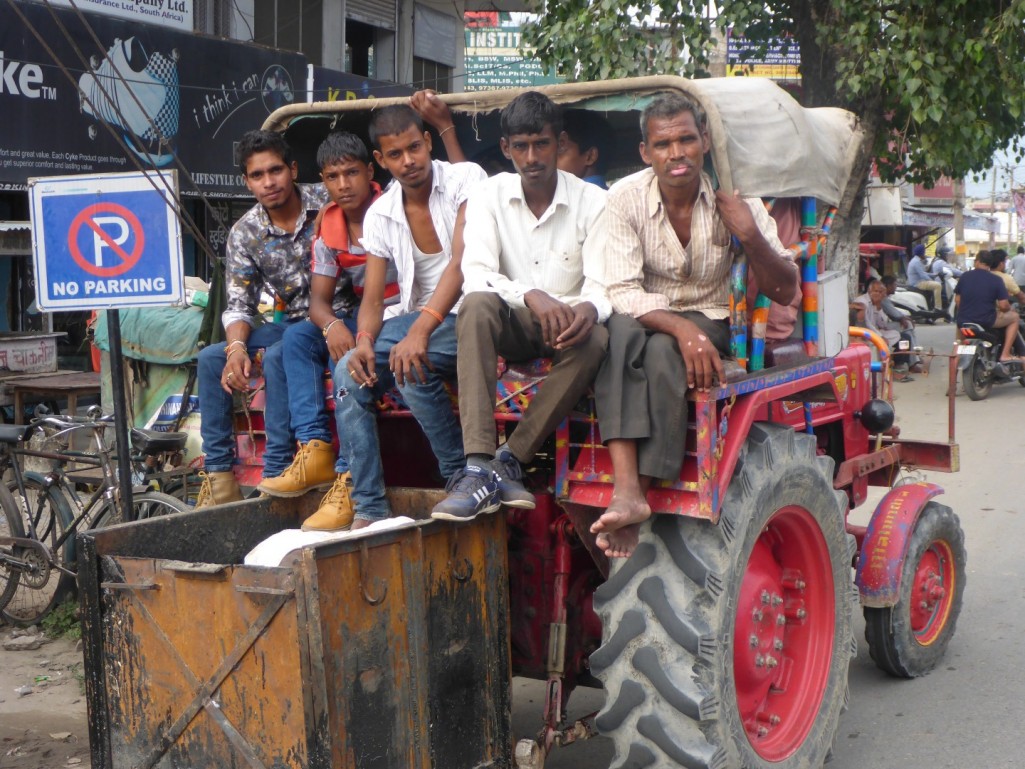
Soon we’ve made it to the flat lands at the edge of Himachal Province and pedal alongside water buffalo, scooters and bikes. It’s hot, humid and harder than it should be. The dysentry seems to be making a comeback and sapping the energy out of both of us again. We can’t believe it hasn’t been killed off yet.
By the evening we roll into Paonta Sahib and up to the gates of another Sikh temple, the Gurudwara Paonta Sahib. Like the Golden Temple in Amritsar there is a free hostel here and we’re given a prime riverside room complete with ensuite bathroom (squat toilet and bucket of water for washing). It also comes with 2 lizards that have to be chased for half an hour before they get the message that they’re not welcome and scuttle out the window.
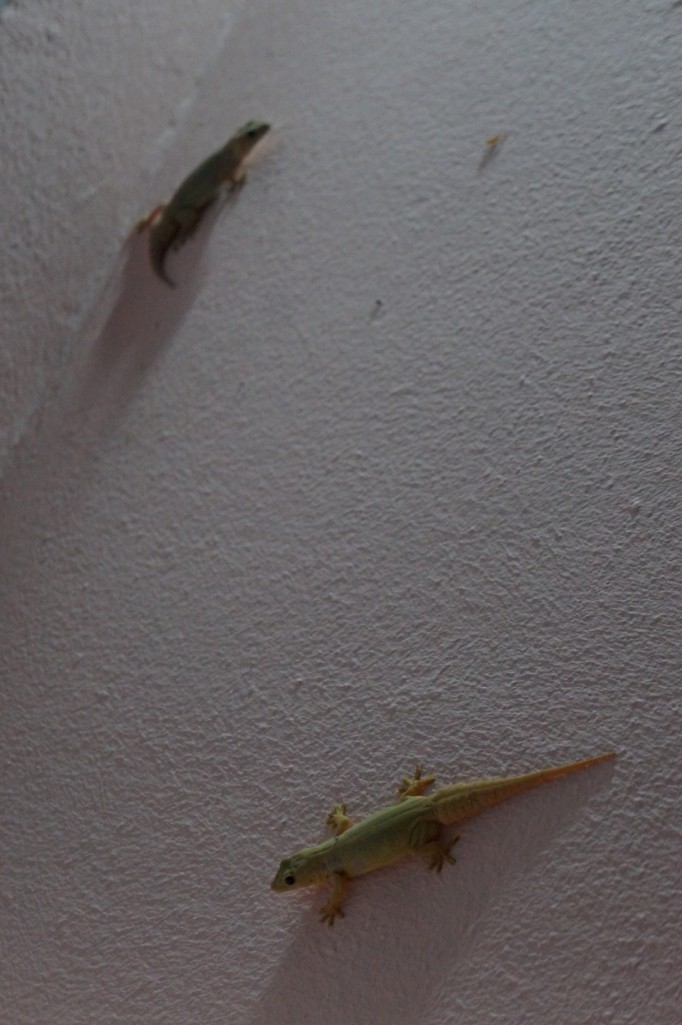
We join the devotees in the temple where the Guru Granth Sahib is being sung. Legend has it that the holy book was written here giving this location special significance as a place of pilgrimage for Sikhs from all over the world.
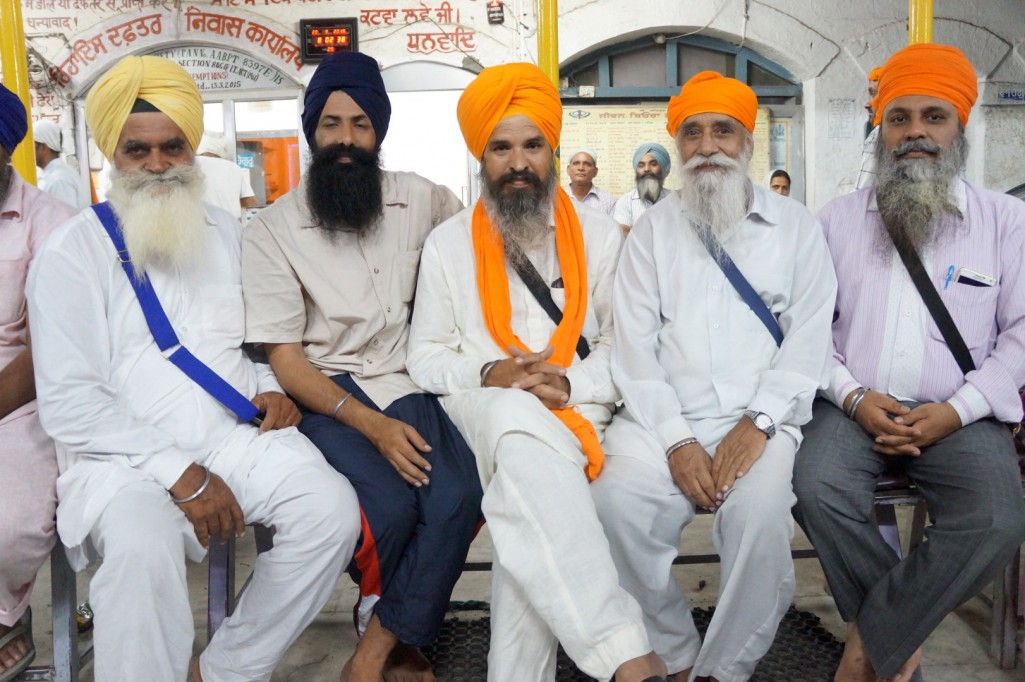
After the prayers we head to the canteen to sit cross legged on the floor with our serving of chapati and dahl in a tin tray. Sikh hospitality is always tasty.
Next day we keep the pace easy and use rain showers as a good excuse to stop for chai, sweets, then pomelos, a delicious giant citrus fruit that tastes like a sweet pink grapefruit.
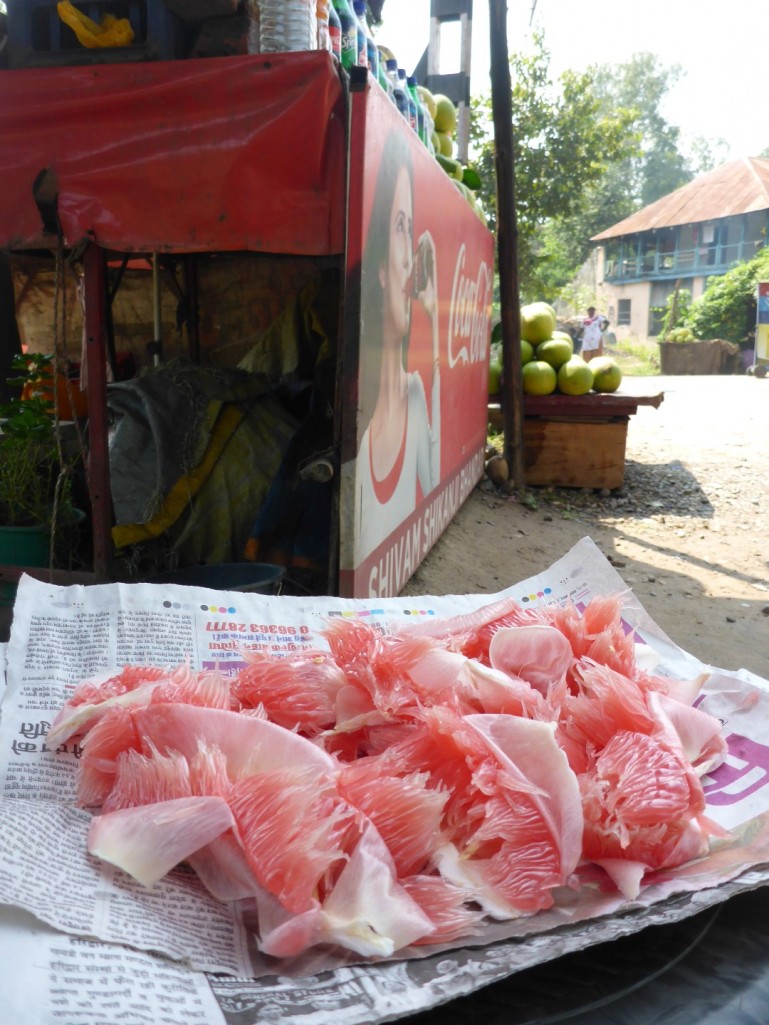
By late afternoon we’ve crossed into Utarrakhand Province and arrive in Dehradun. The rain has set in. A scooter pulls alongside and its rider asks us where we’re from in an American accent. A short conversation of explanation as to why we’re on a tandem in the pouring rain in India and we’ve been invited to follow him home. Stephen is from Michigan but his wife, Nalini is Indian so they now live here with their youngest daughter Sabina and son Stephen Jnr. They have built their own house on the edge of the jungle which serves as a wonderful place for us to stay for the night. While being shown where we can sleep Stephen nonchalantly mentions that we shouldn’t go outside after dark on account of the leopards that roam around looking for dinner. We think he’s joking at first but his face says otherwise and he even tells us a story about some people who had been attacked down near the river not long ago. Of course there’s the usual risk of bears, cobras and pythons too. The doors and windows will be firmly locked tonight.

We are served a tasty meal and have an interesting conversation about life in India and its north/south divide. Bizarrely Nalini had read about my ‘Marathon World Record Dressed as a Toilet’ in the Indian Times last year.
Then the topic turns to religion. Stephen is what is usually termed a ‘born again Christian’ having had a real road to Damascus moment that turned him around from being well off the rails to being firmly back on track. His passion for his faith and the effect it’s had on his life is fascinating to hear about.
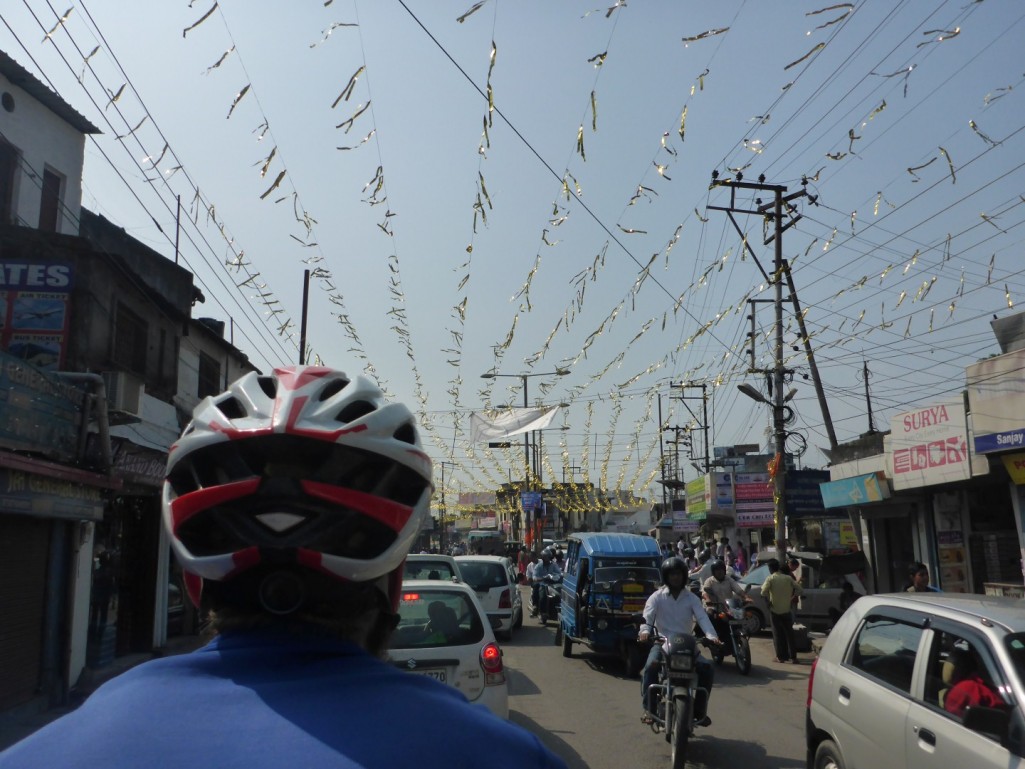
Our spiritual journey then continues into Haridwar, our destination for the next day and one of the 7 holiest sites for Hindus in India. This town on the banks of the Ganges is supposed to be where drops of Amrit, the elixir of immortality, accidentally spilled over from a pitcher while being carried by the celestial bird Garada. To obtain a long and healthy life I take a holy dip in the river, immersing myself 4 times then nearly getting swept away by the strong current. Garada is already looking after me so I survive.
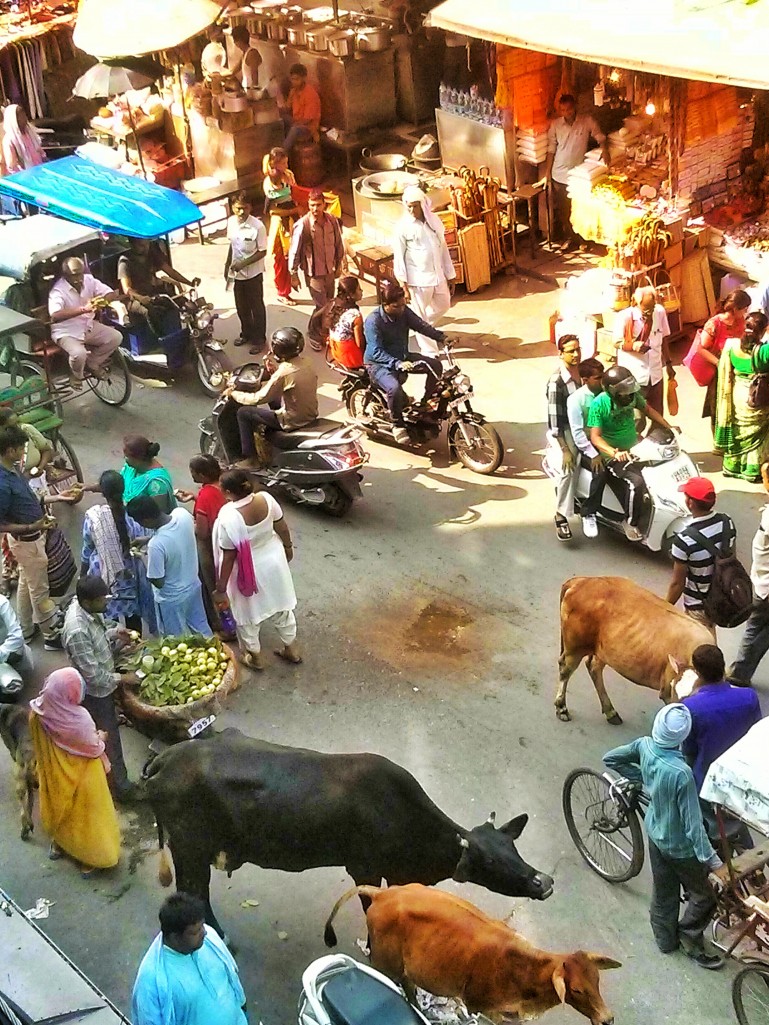
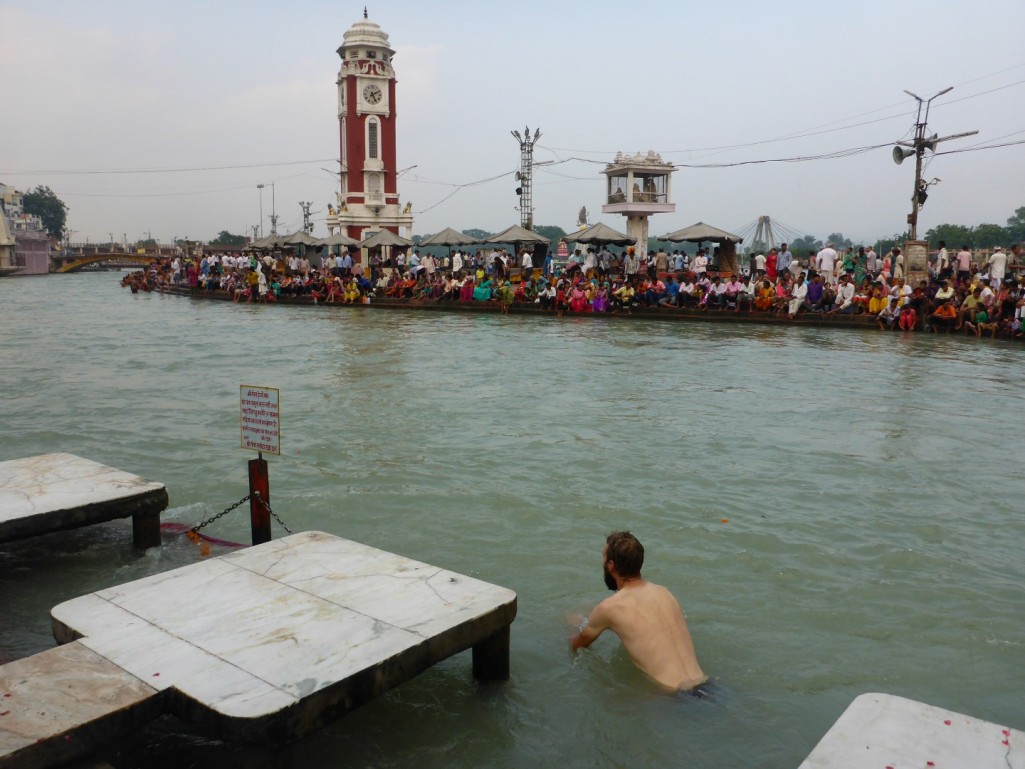
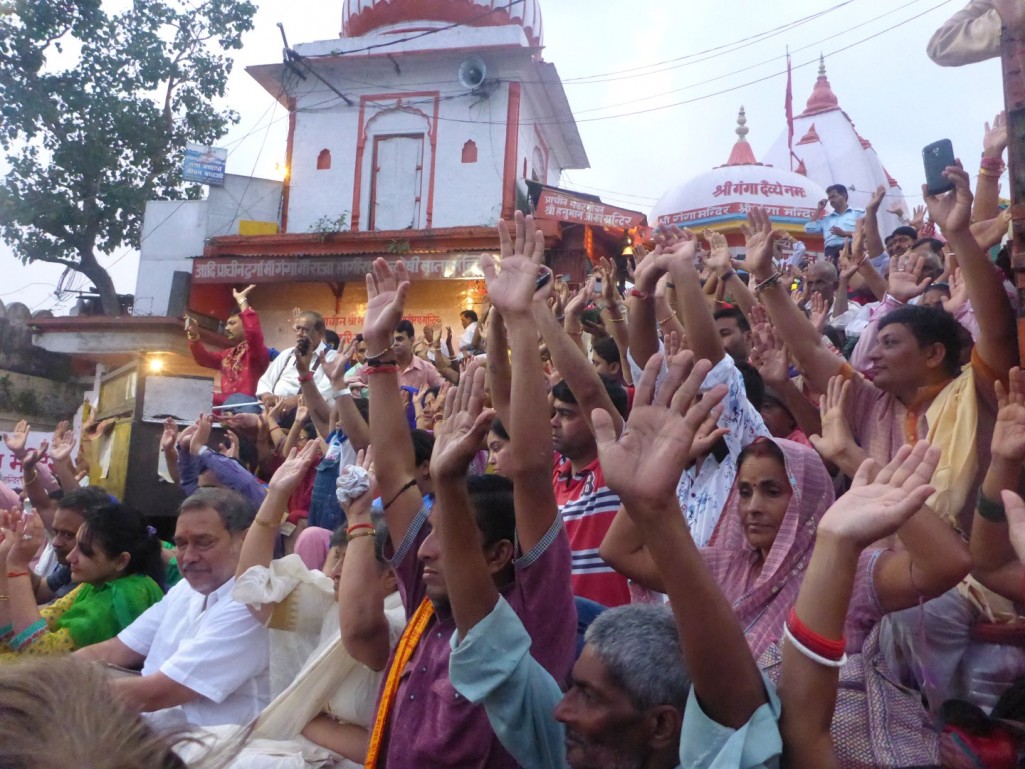
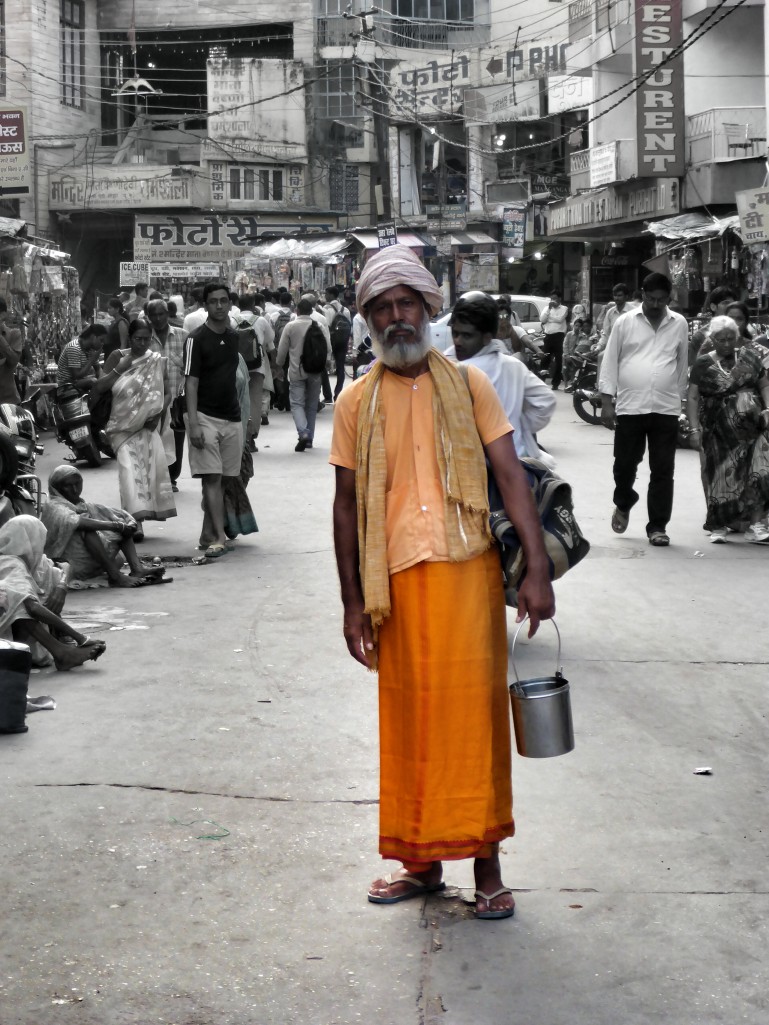
There’s a ceremony each evening that involves lots of fire and singing with a huge crowd gathering to watch. Hundreds of boats made from leaves are filled with flowers and candles before being launched into the river for good luck.
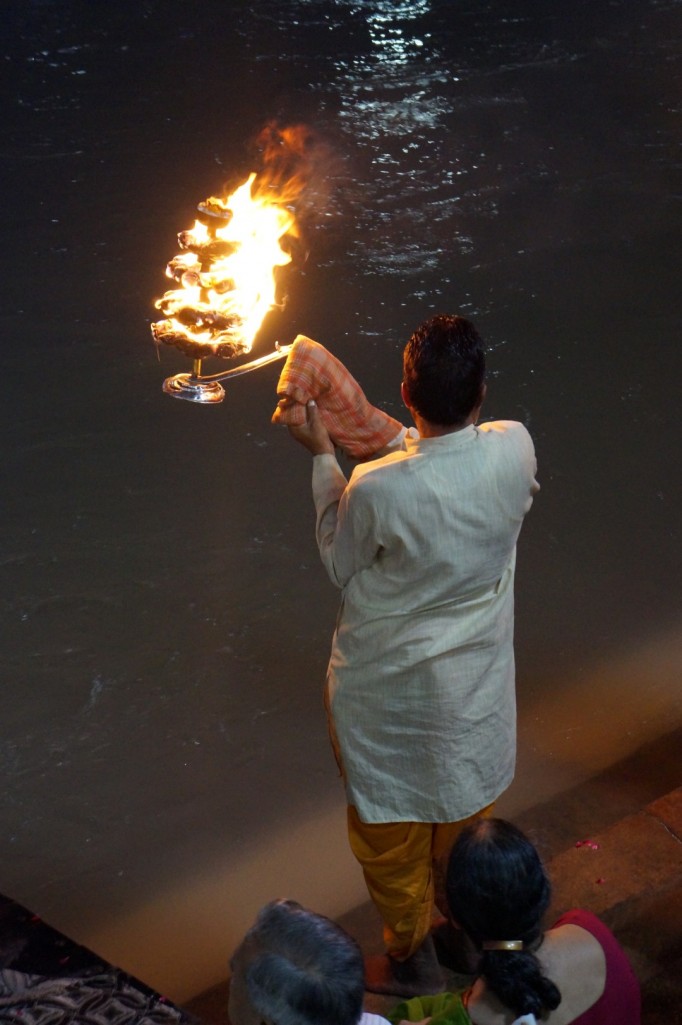
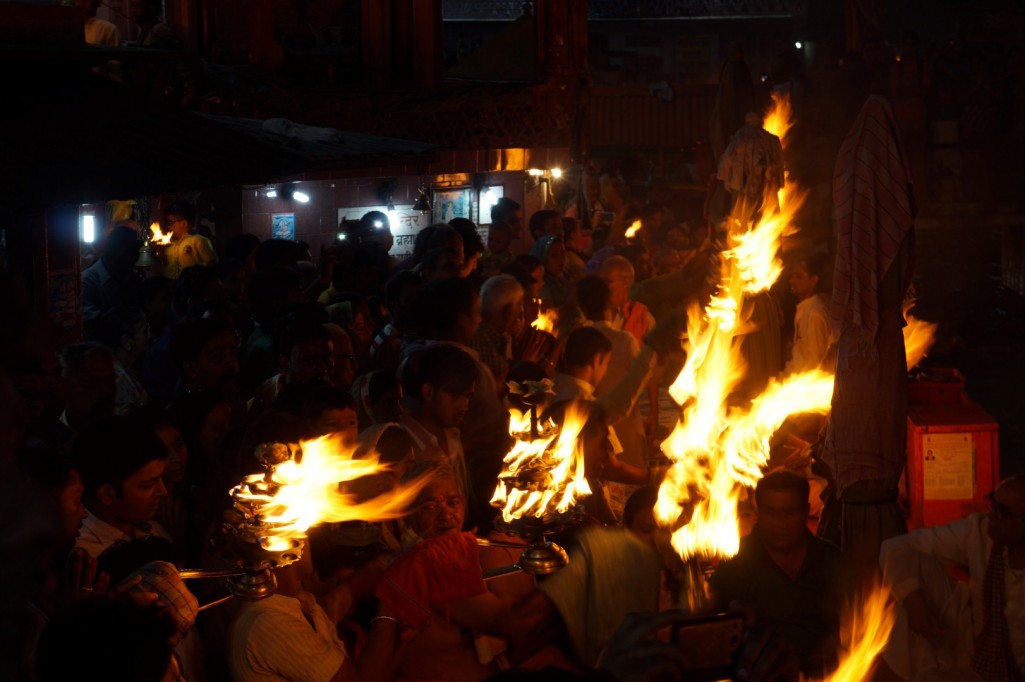
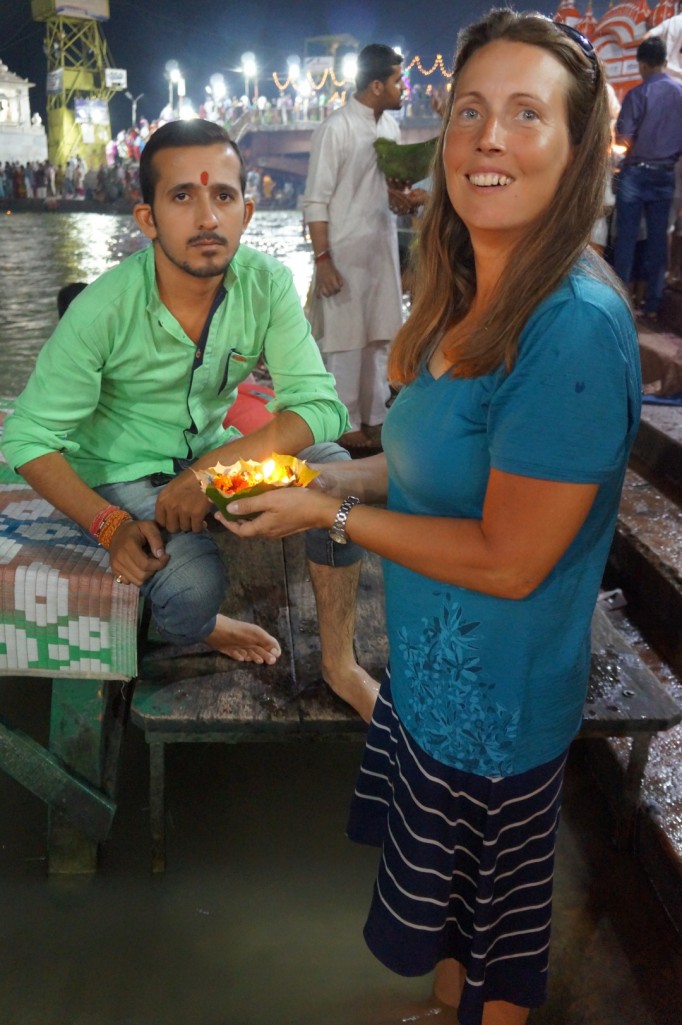
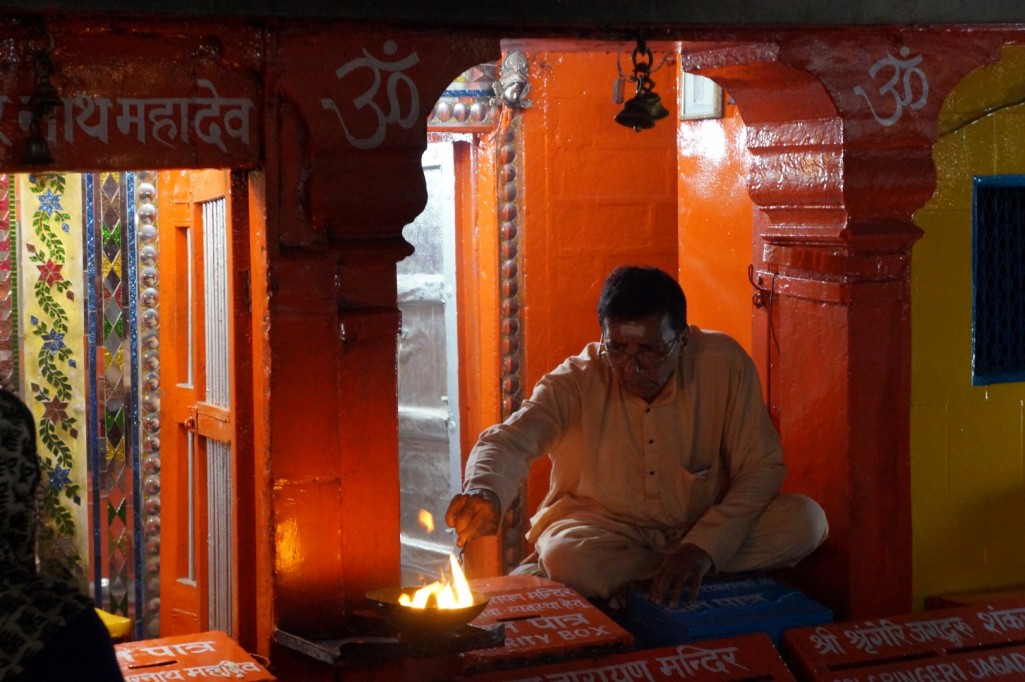
But the celebrations are bigger than usual tonight. By chance we’ve arrived at the culmination of the Ganesh Chaturthi festival, celebrating the birthday of the elephantine god Ganesha. A procession of carnival floats trundle down the street accompanied by energetic drumming, loud music and crowds of dancing revellers being sprayed with coloured powder. Following them is a decorated elephant that takes offerings of money in its trunk and passes it up to the driver. It seems completely unphased by the chaos around it but its glazed eyes suggest this might not be its natural character.
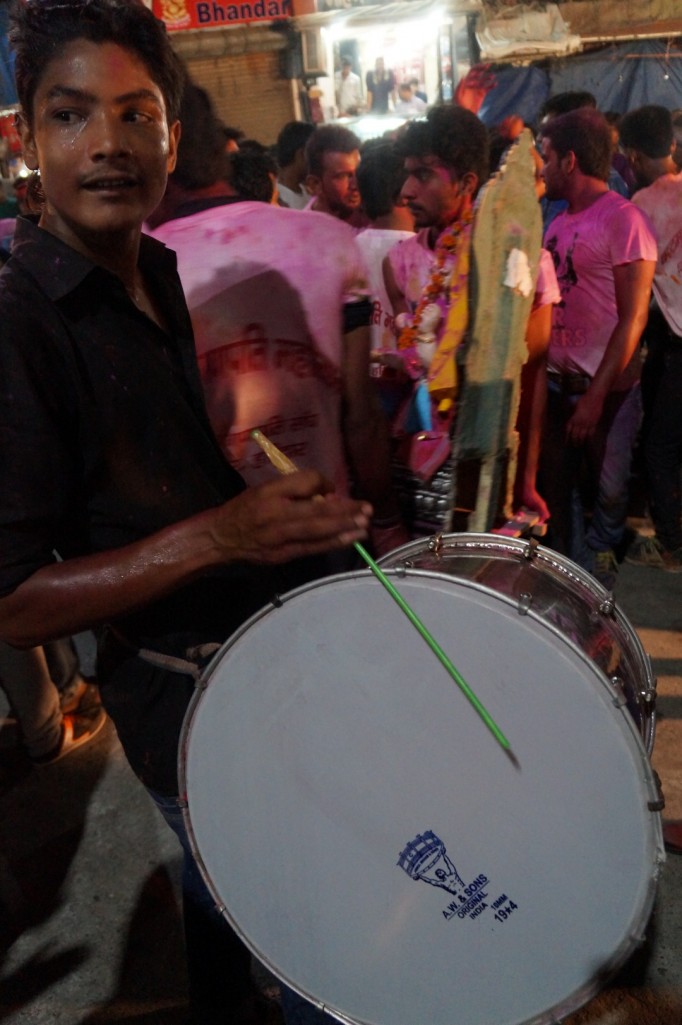
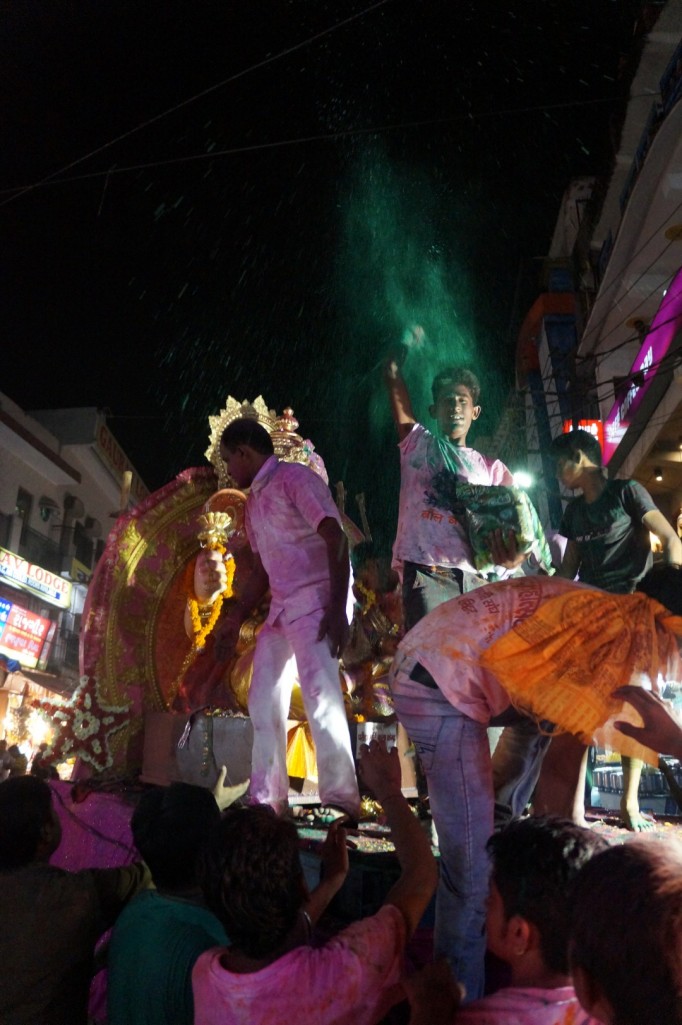
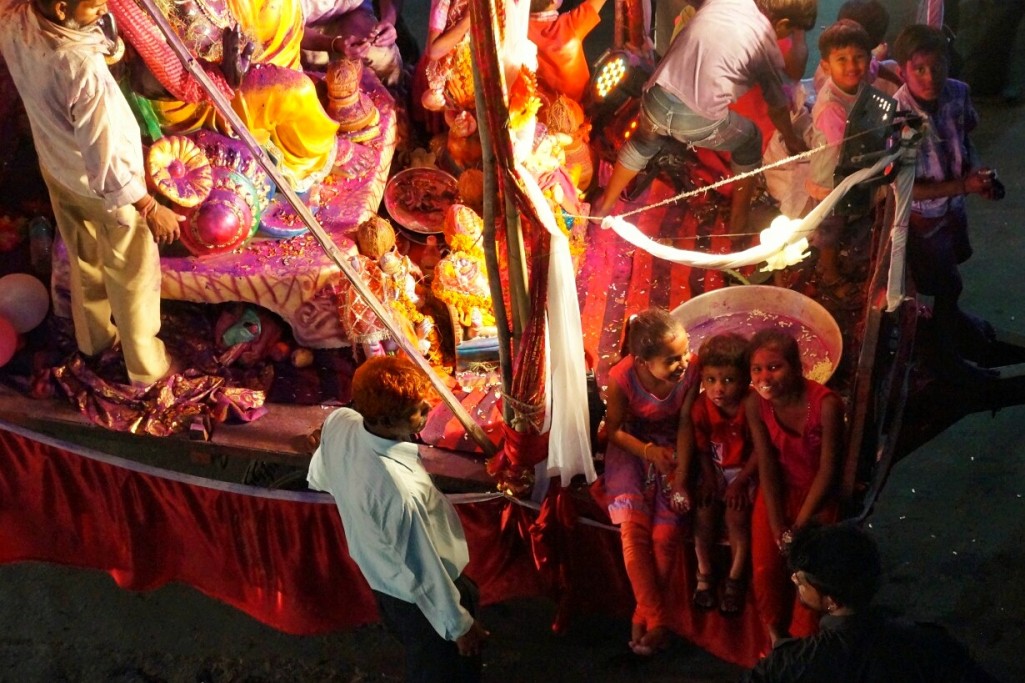
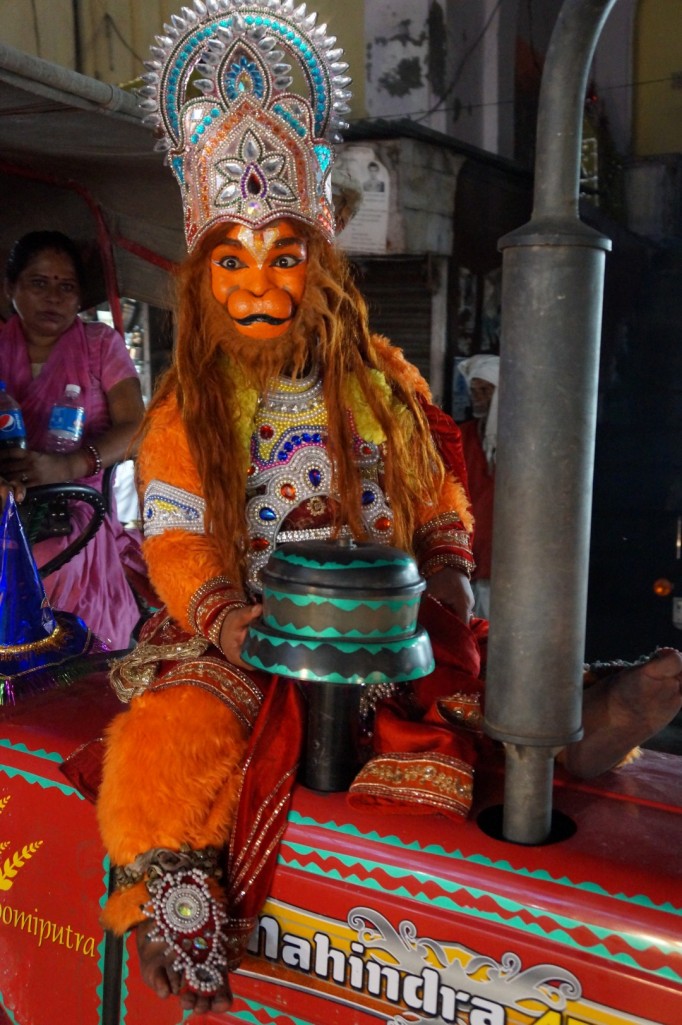
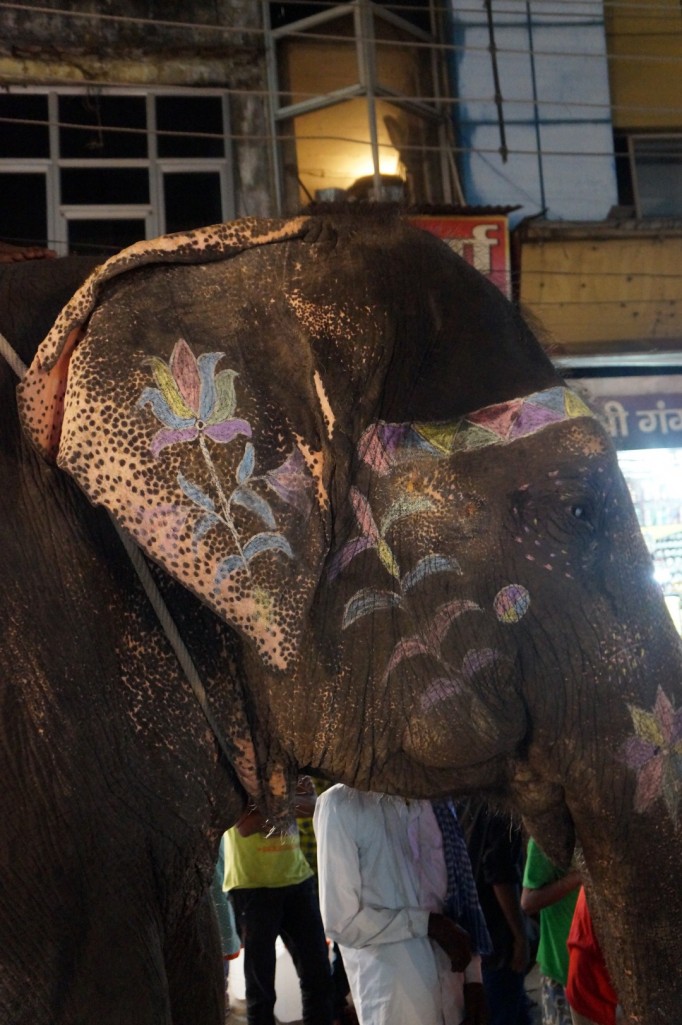
Families bring their idols of Ganesha down to the river and let them float away. It’s said that Ganesha takes all their misfortunes and maladies with him on his journey back to his holy abode on Mt. Kailash.
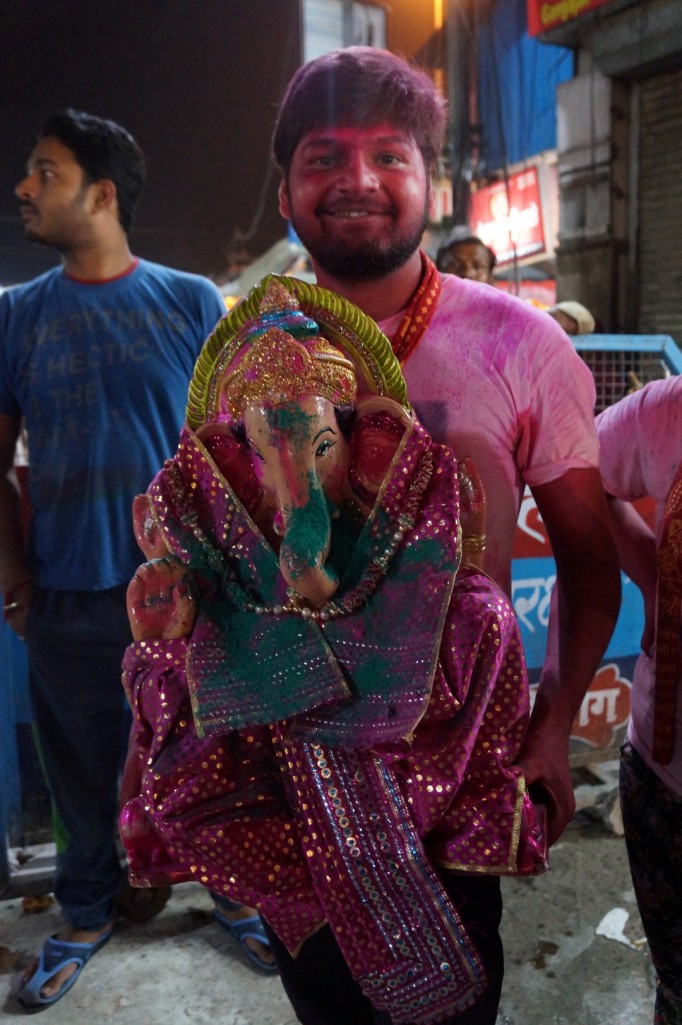
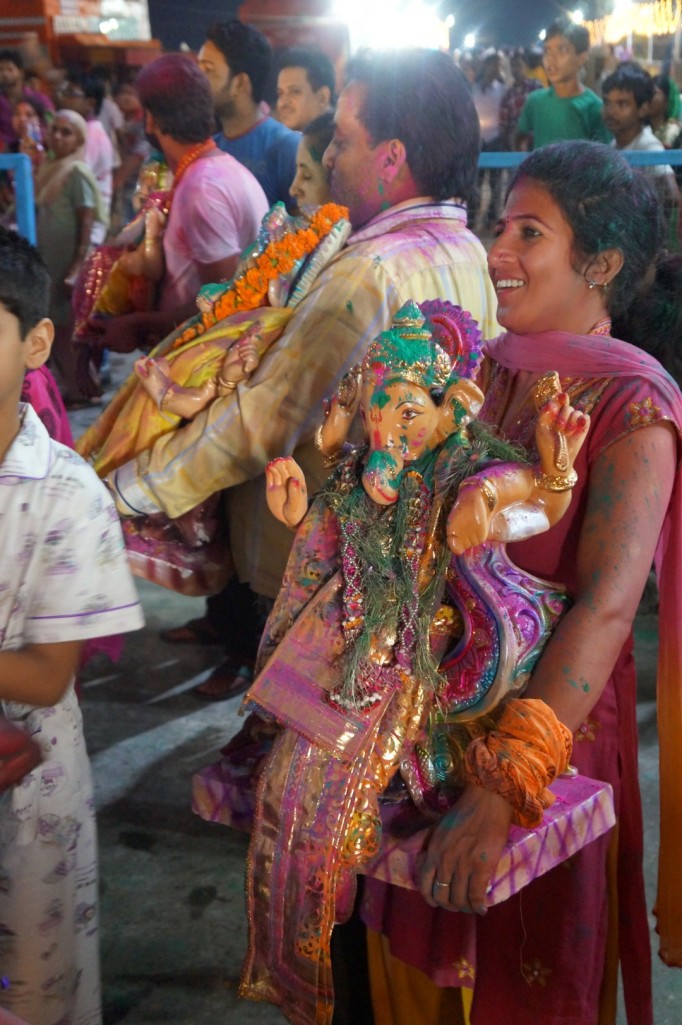
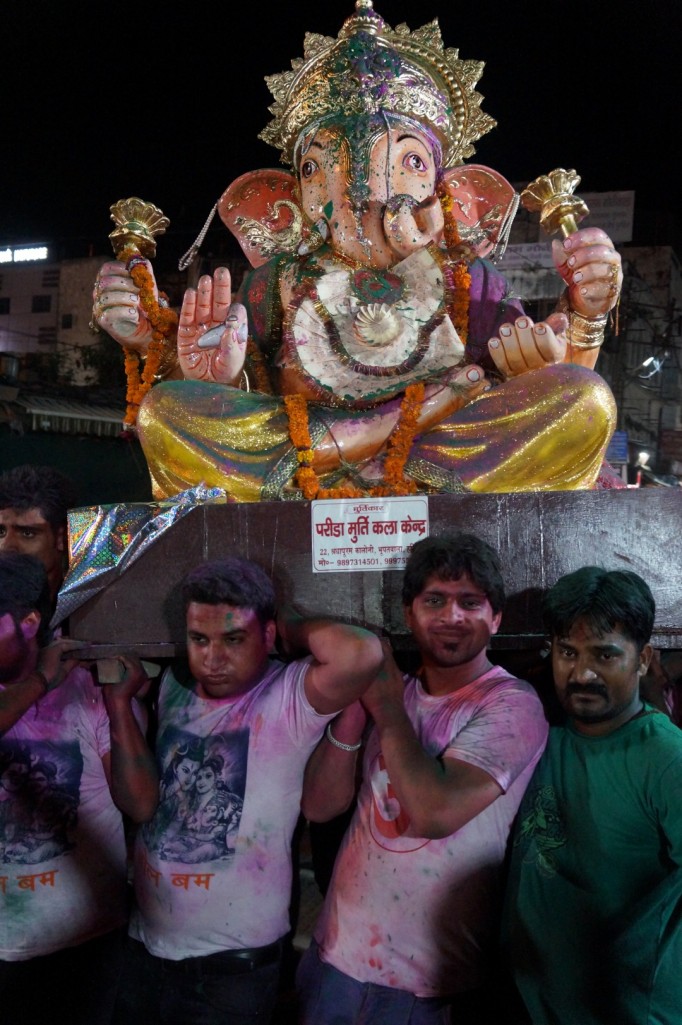
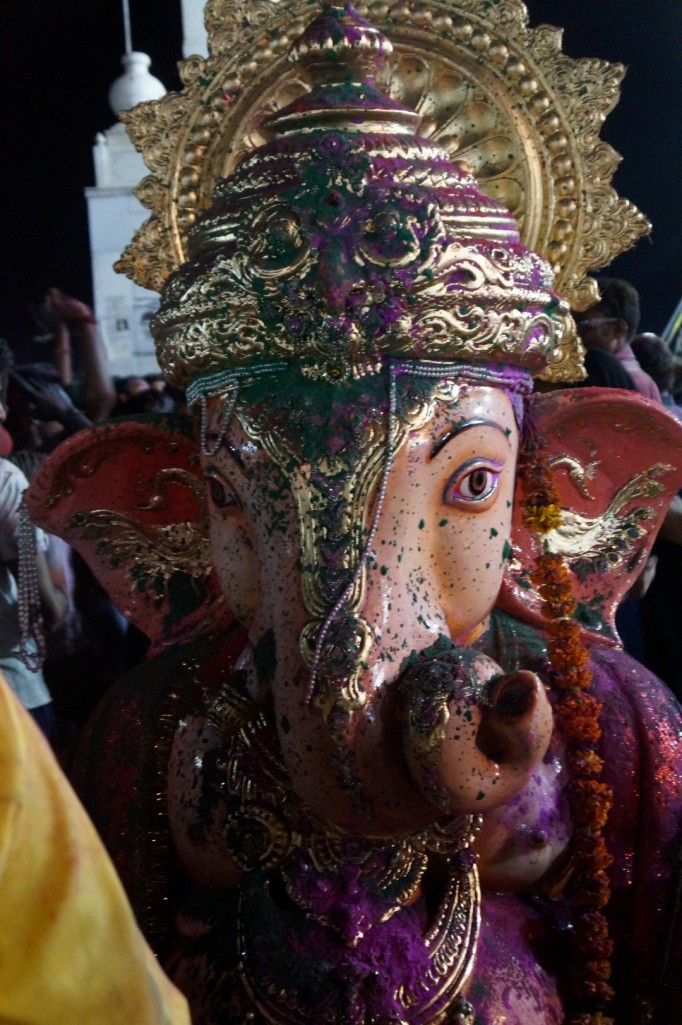
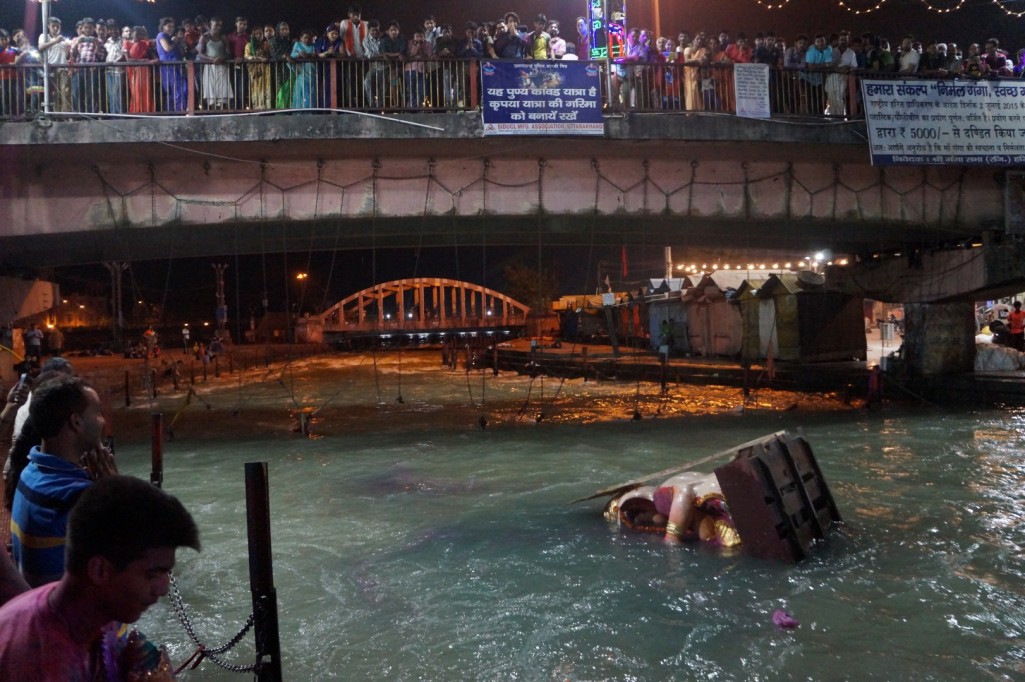
It’s an exciting, vibrant spectacle that leaves me fired up with adrenaline from all the dancing and with multi-coloured face. Kirsty had her own excitement when a firework landed on the balcony outside our room. It also explains why we’d found it so hard to find a hotel with vacancies. Every 12 years, up to 100 million people descend on Haridwar for the Kumbh Mela pilgrimage. It’s hard to imagine that many people in one place and it may well be too much of an intense experience.
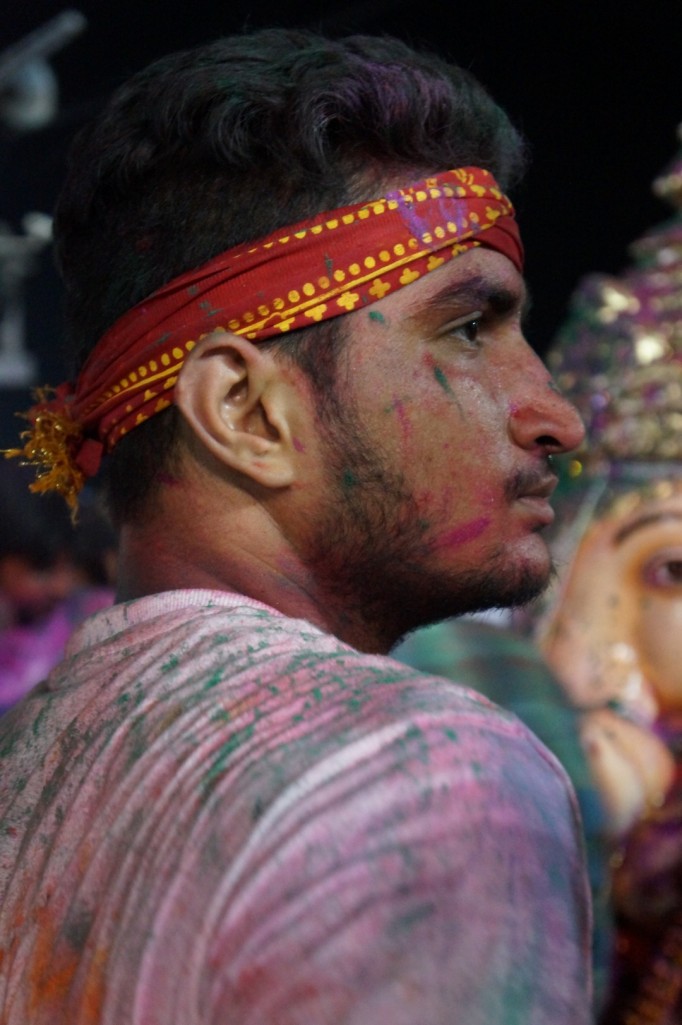
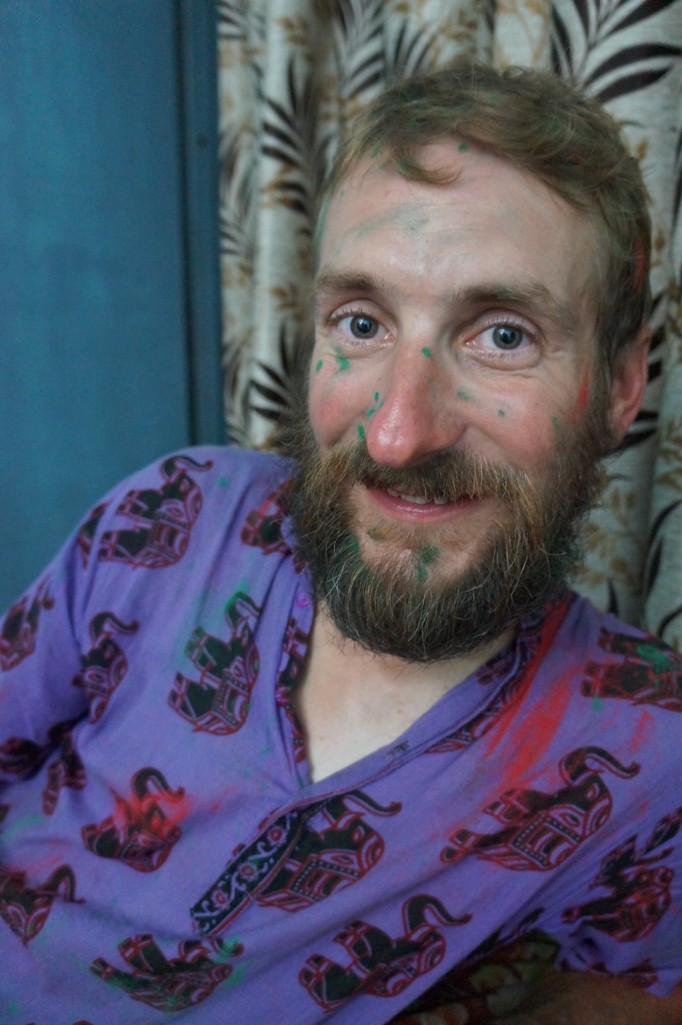
The next three days take us ever eastwards past jungles that are home to elephants and a huge national park that includes the Jim Corbett Tiger Reserve. We pick up more drugs, this time a 10 day course of slightly different antibiotics, antiamaeobas and probiotics on the recommendation of a doctor in Khashipur.
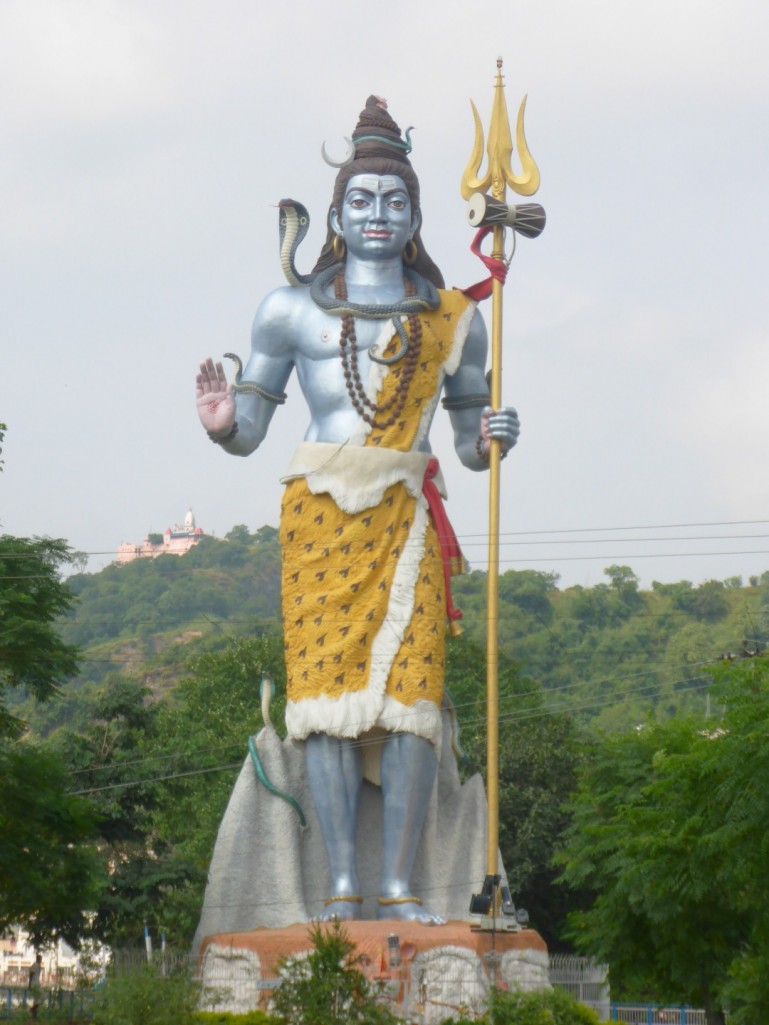
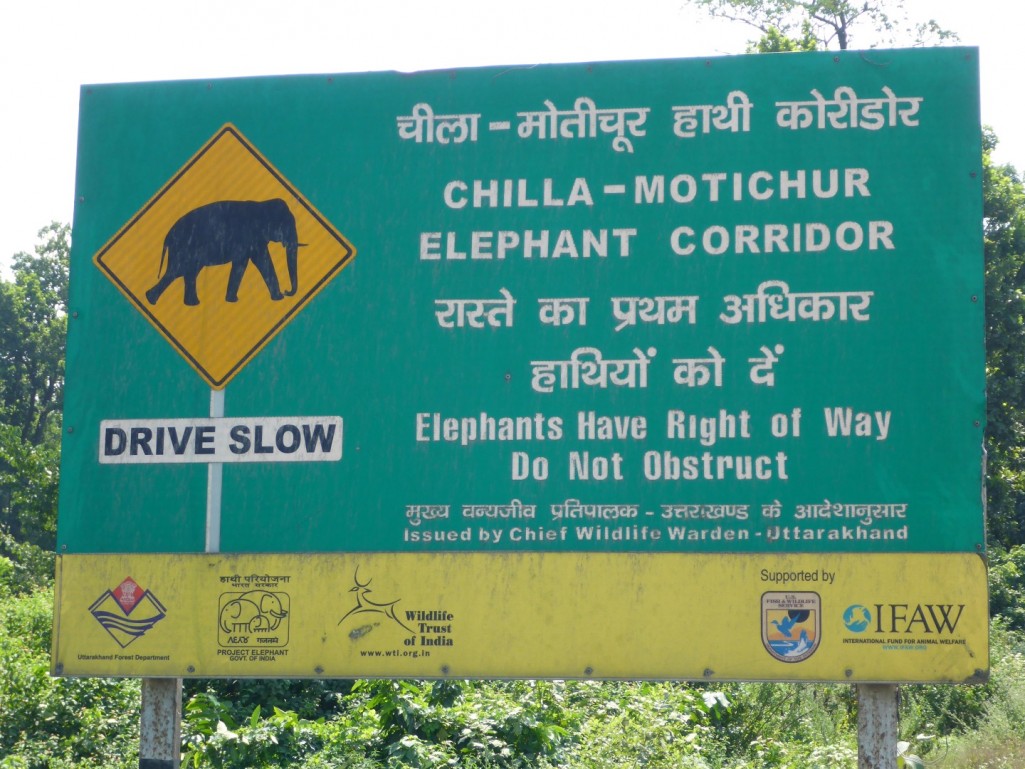
A shortcut takes us alongside a quiet canal with straw hut villages and carts being pulled by water buffalo. The roads vary from smooth asphalt to rocky tracks and at one point another shortcut is completely flooded so we have to turn back to the main road.
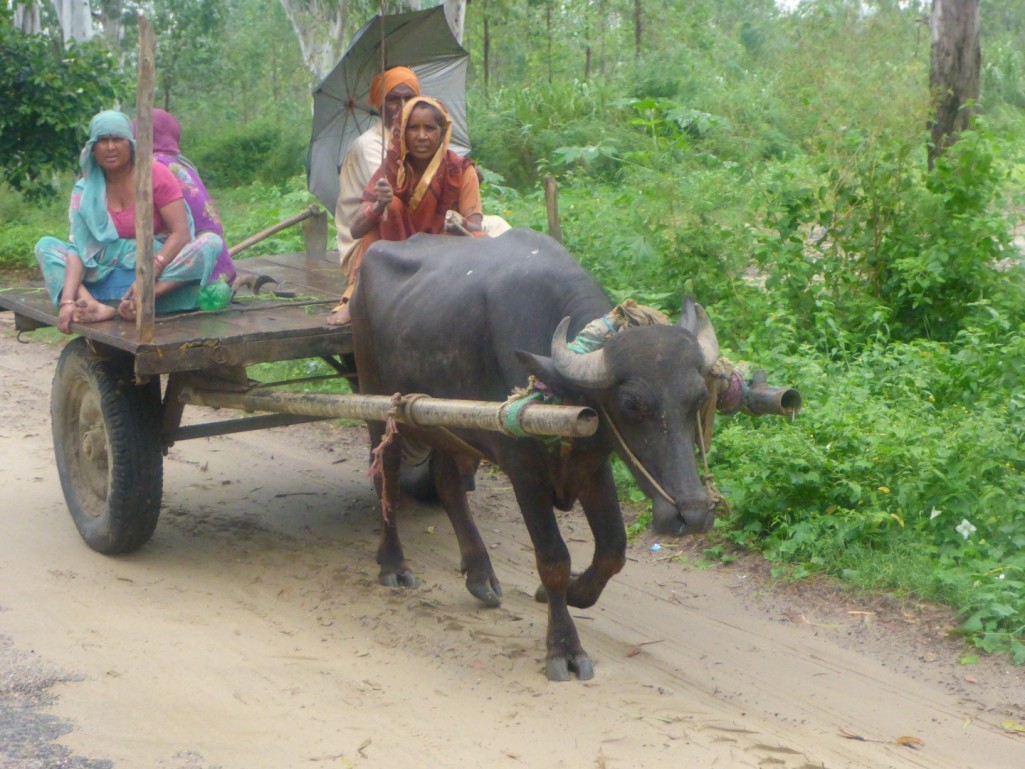
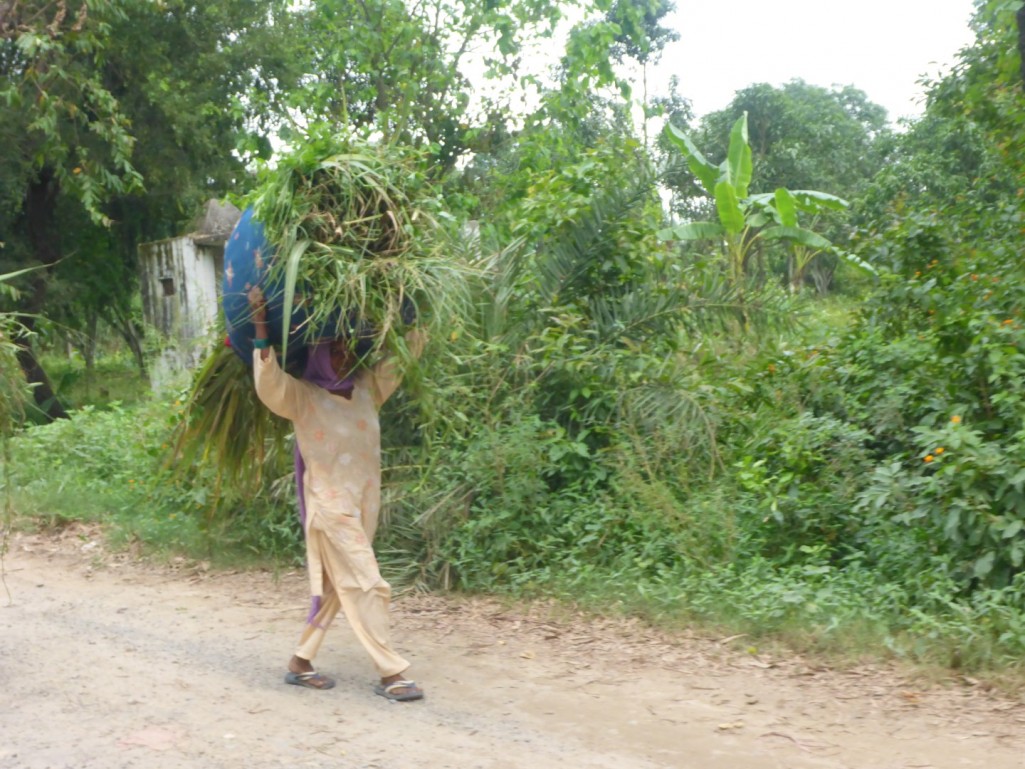
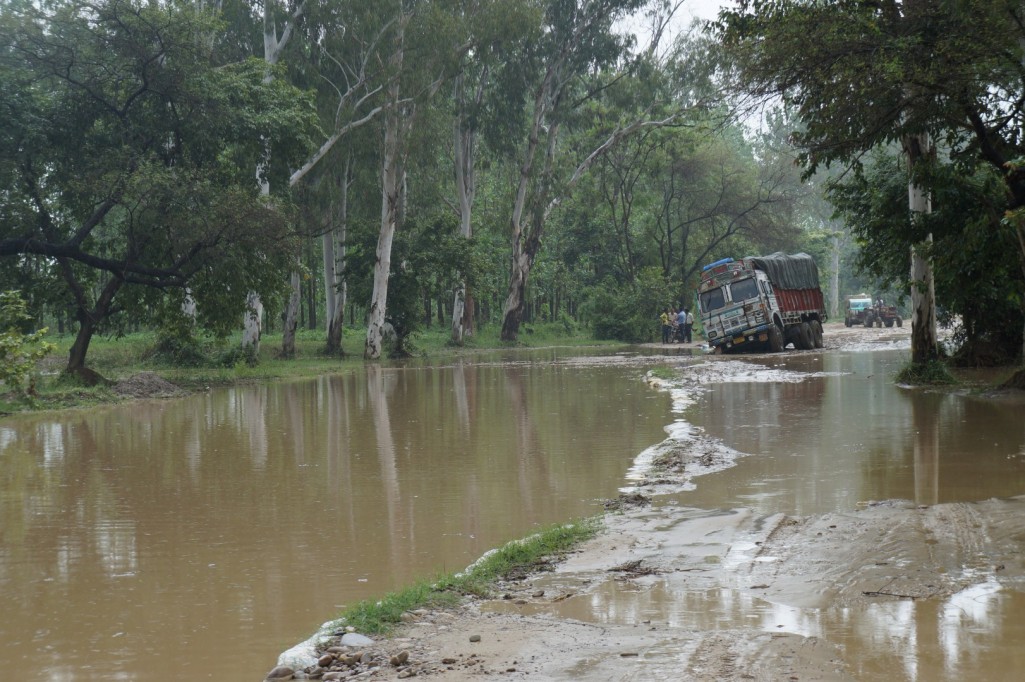
Bicycles are increasingly popular while the scooters and motorbikes become a menace. A westerner on a bike is unusual enough but two on a tandem is something they’ve never seen before so they buzz round us with smartphones set to record and we get repeated cries of “please stop! One selfie sir! One selfie, I beg you sir!”. Usually one of the many passengers is on camera duty but the drivers are busy gawping as well and on several occasions we nearly get ridden into. We can’t stop for everyone so they have to settle for an in flight shot.
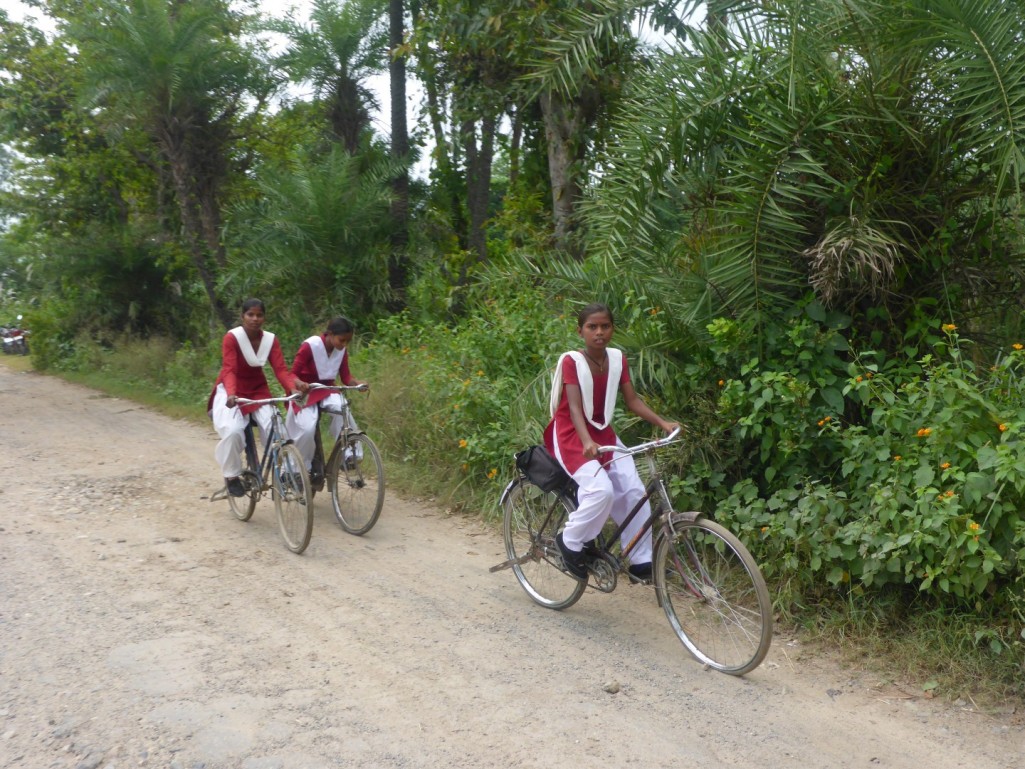
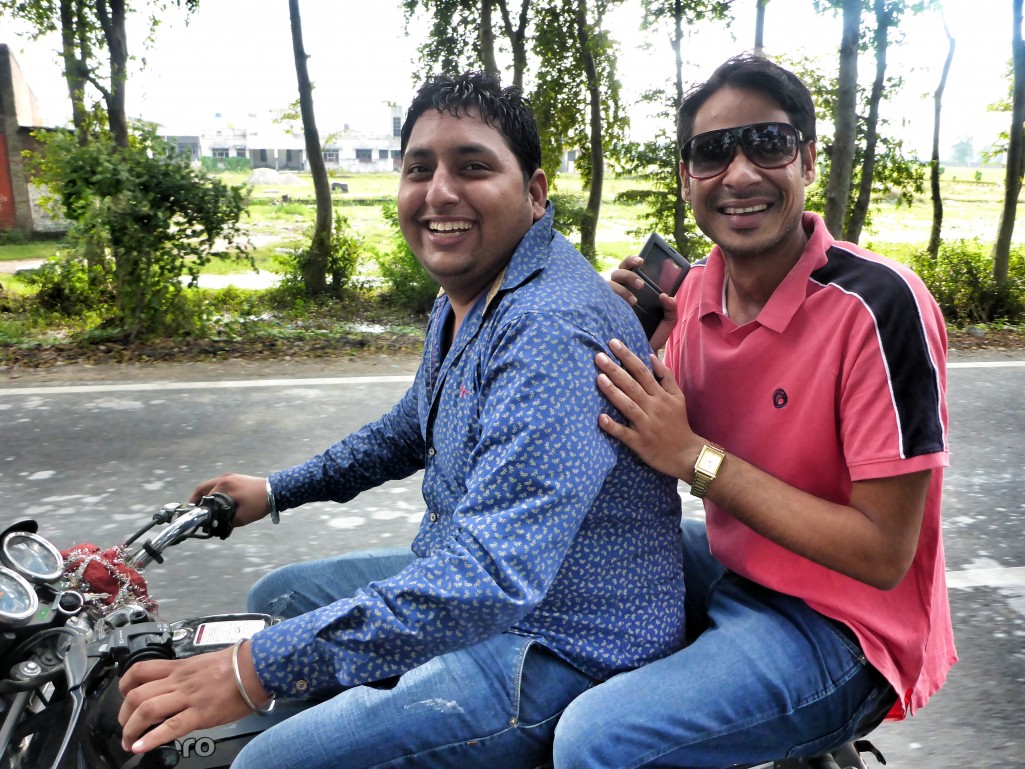
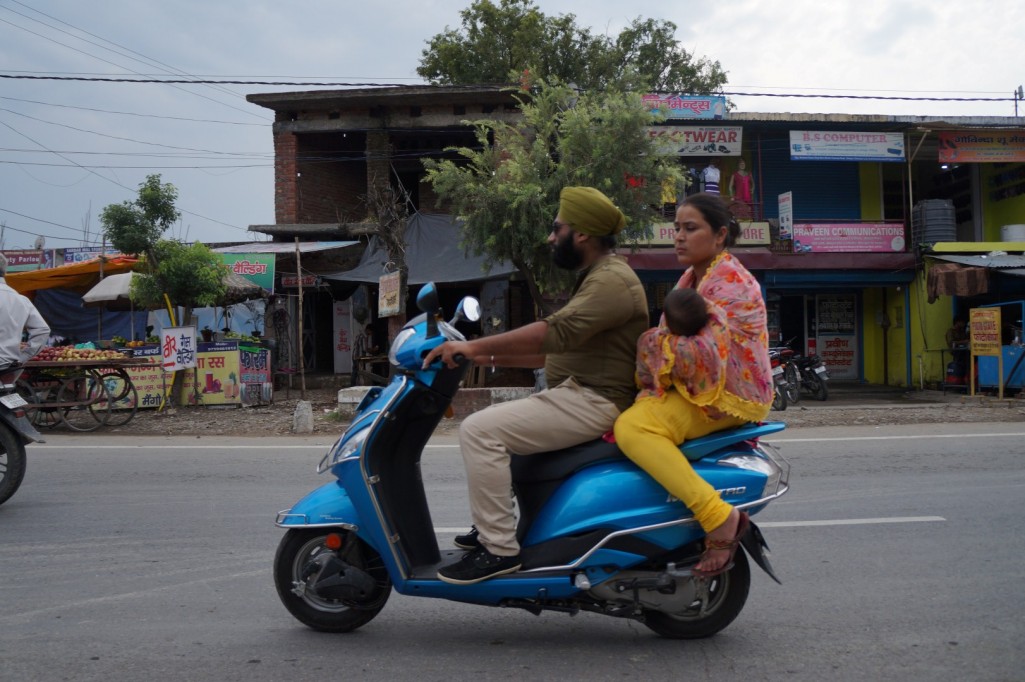
In Rudripur we find ourselves in a strong Muslim area and after a night in a lizard infested room 101 at the Hotel KK we see crowds of men in long salwah kameez and scull caps off to Friday prayers. The women on the back of the scooters now peer out from under hijabs or the full face covering niqab.
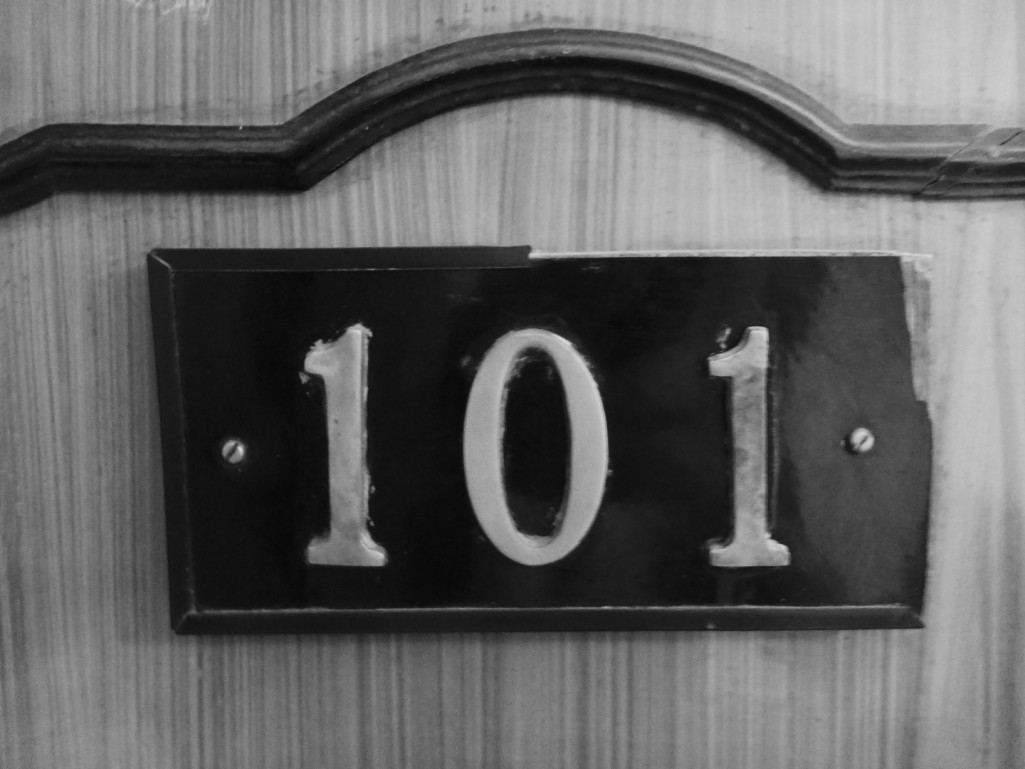
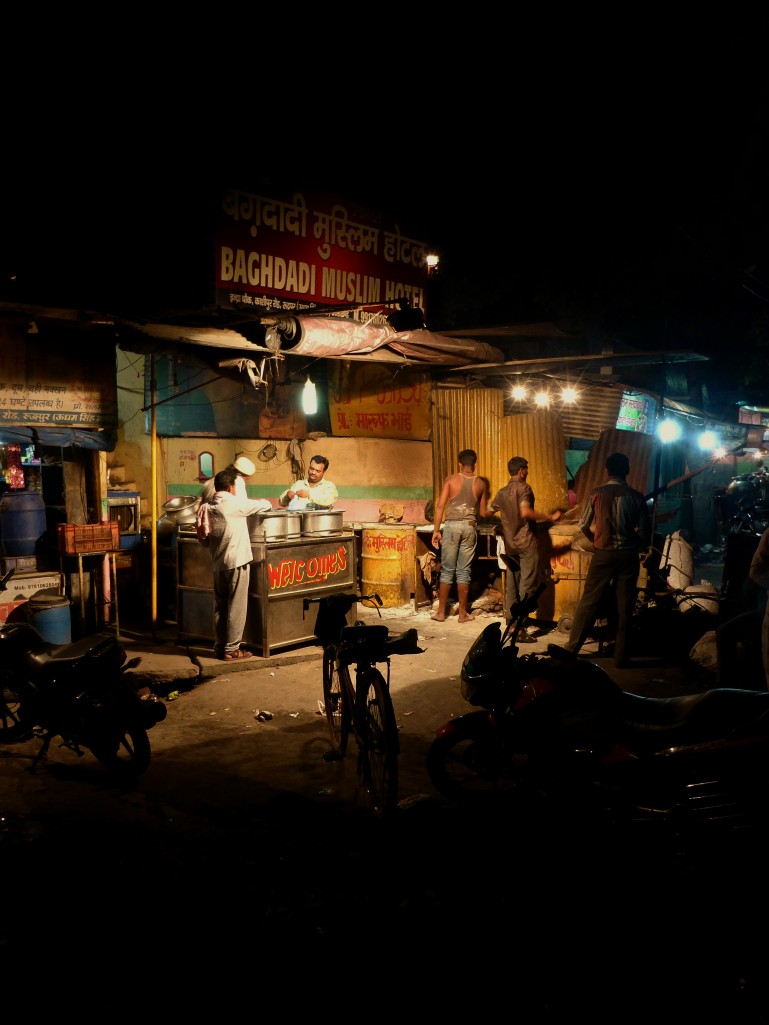
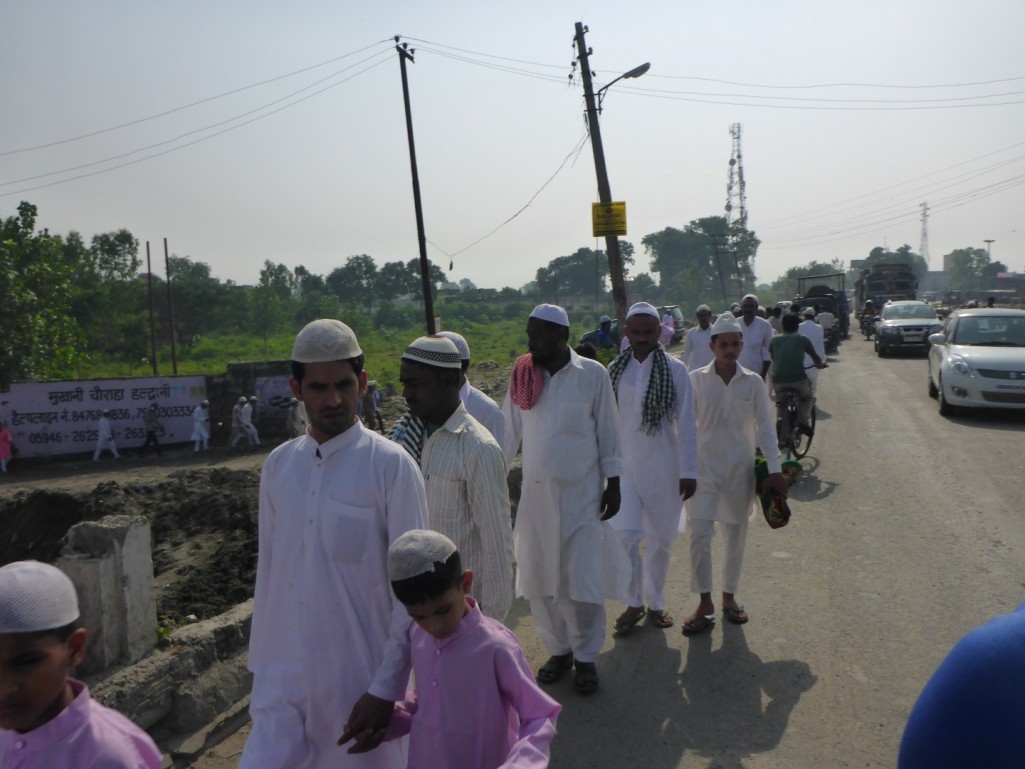
This final stretch before the Nepalese border feels more rundown than most of the regions of India we’ve ridden through so far. Alongside the road huge piles of rubbish are grazed by cattle, pigs, dogs and children. The roadside provisions are sold from basic wooden shacks. Every couple of kilometres a bike mechanic is serving the two wheeled traffic and there are far fewer cars.
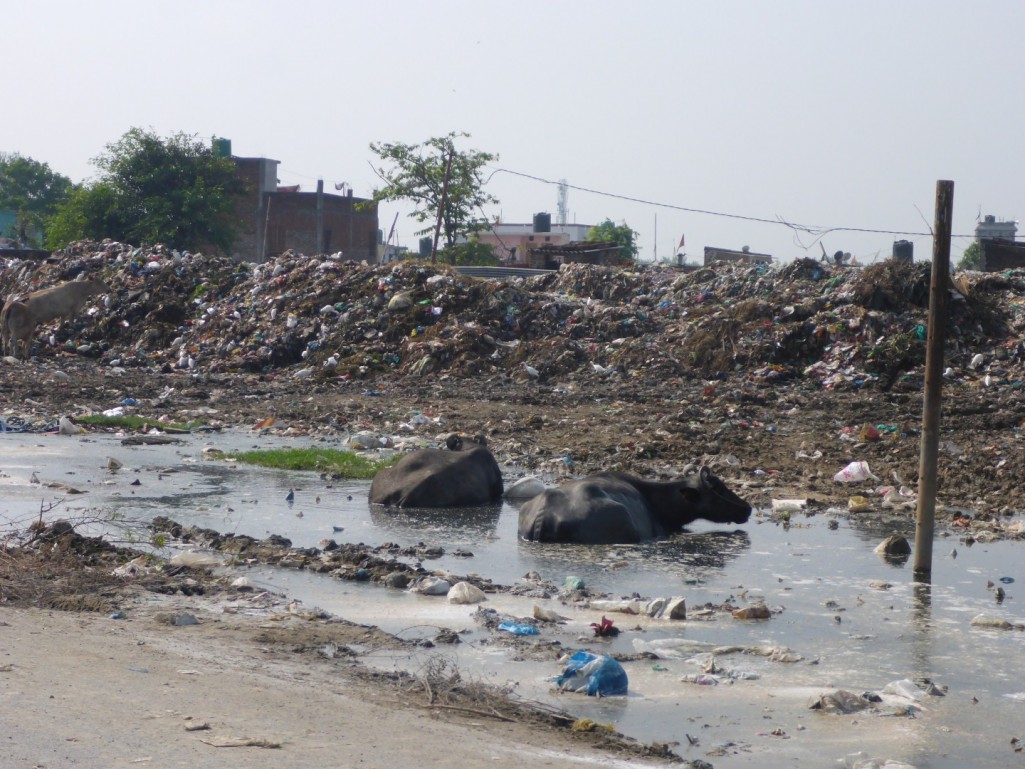

Improvements seem to be on the way with a brand new road in construction to replace the pot holed track we’re picking our way over but there’s very little work going on. The Garmin thinks one of the new bridges should be complete and sends us up to a river bank with a few concrete pilings in place but no way of getting across.
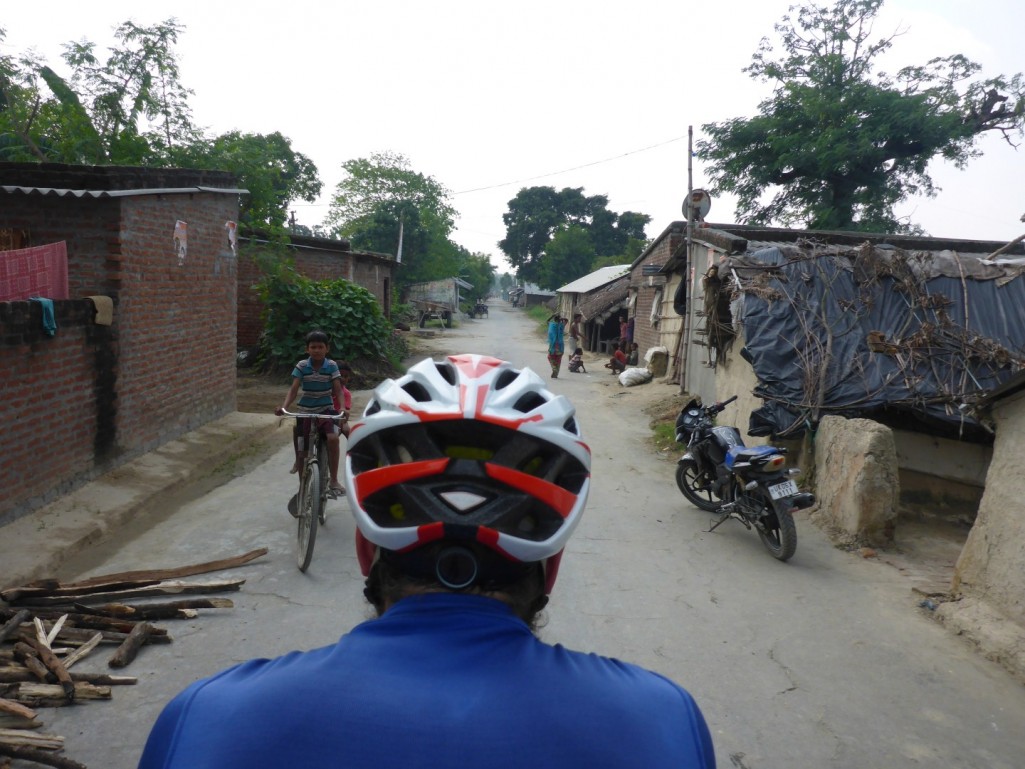
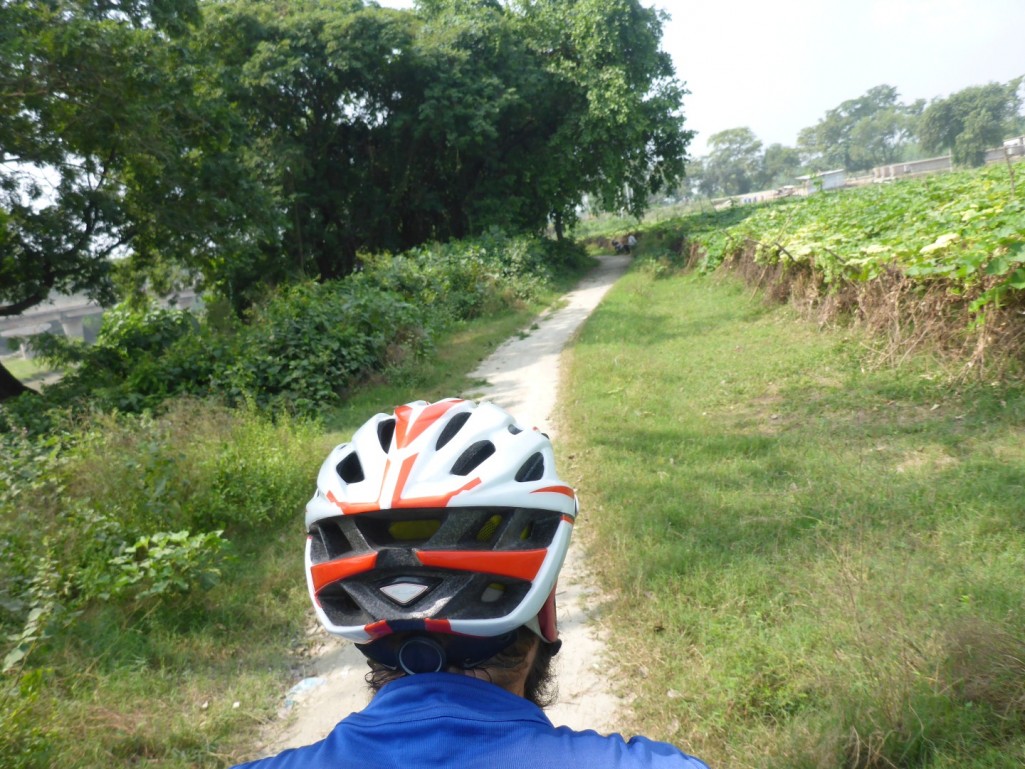
At Banbasa we reach the border and a young Nepalese cyclist called Shiria helps escort us across. Indians and Nepalese can cross without any passport control and as tourist traffic is rare at this point we have to seek out the immigration office to get stamped out. While we wait a monkey takes the bananas that we’d carelessly left on the back of the bike. A short ride further and a relaxed official sells us our Nepalese Visas and then we’re sent off into our 32nd country.
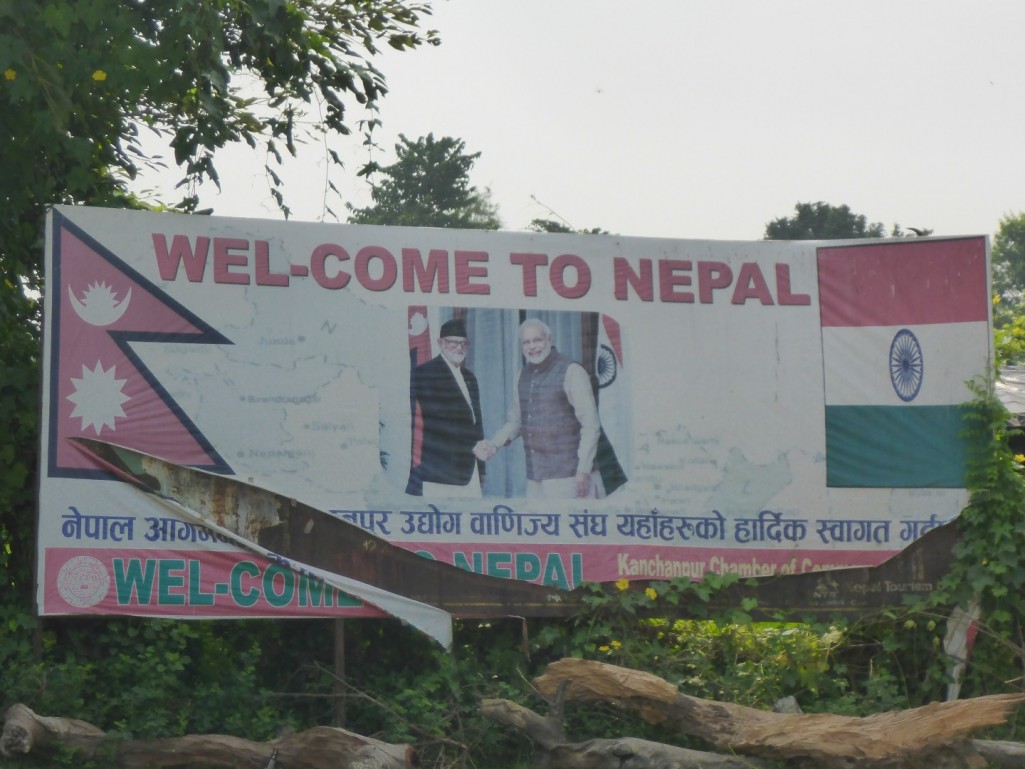
We’d been told to expect a change compared to where we’ve come from and the difference is immediately obvious. A wide smooth road stretches out in front of us and motorised traffic is almost non-existent as most people are either on bicycles or walking. It’s such a refreshing change after the bedlam of India. In the first day of riding not a single person asks us for “one selfie”.
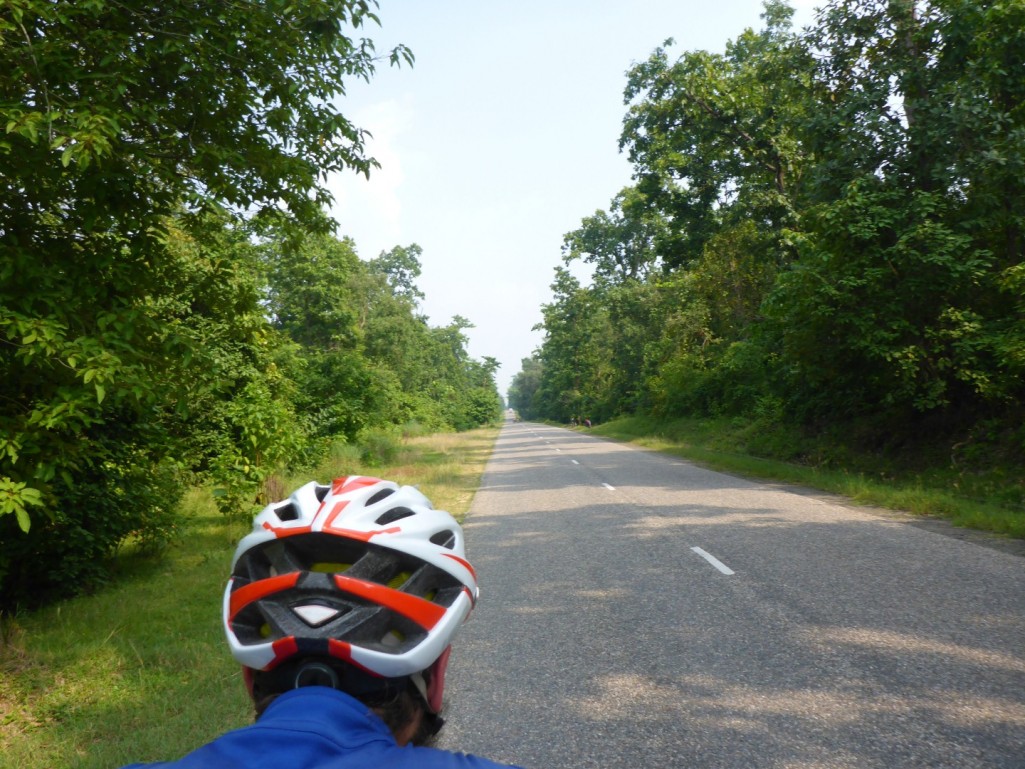
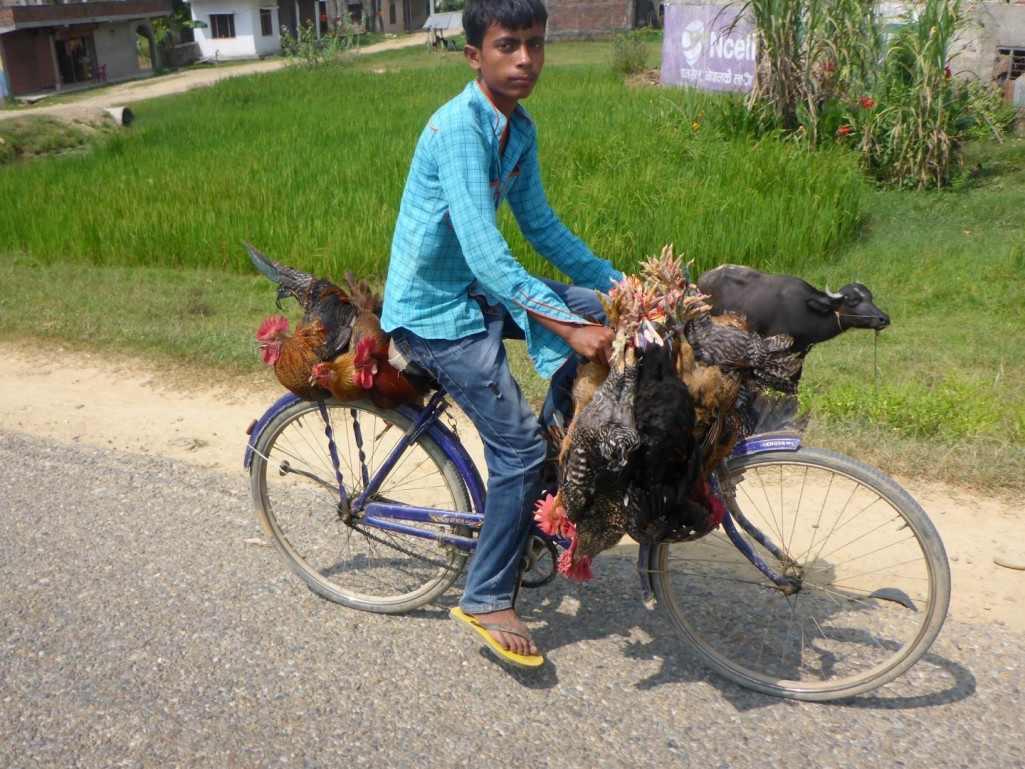
Crowds soon gather when we stop though, especially in the small village of Chaumala where sisters Sumdinu and Madu look after us from their parents’ dhaba. Everyone is curious of the ‘Double Cycle’ but friendly and courteous with it. They’re particularly amused when I purchase the traditional Dhaka Topi hat that I’d seen most of the older men wearing and queue up to have their photo taken with us. Someone tells me “You must be the tallest man in Nepal!” which also means that I fit in none of the beds in Nepal and hit my head on every doorway.
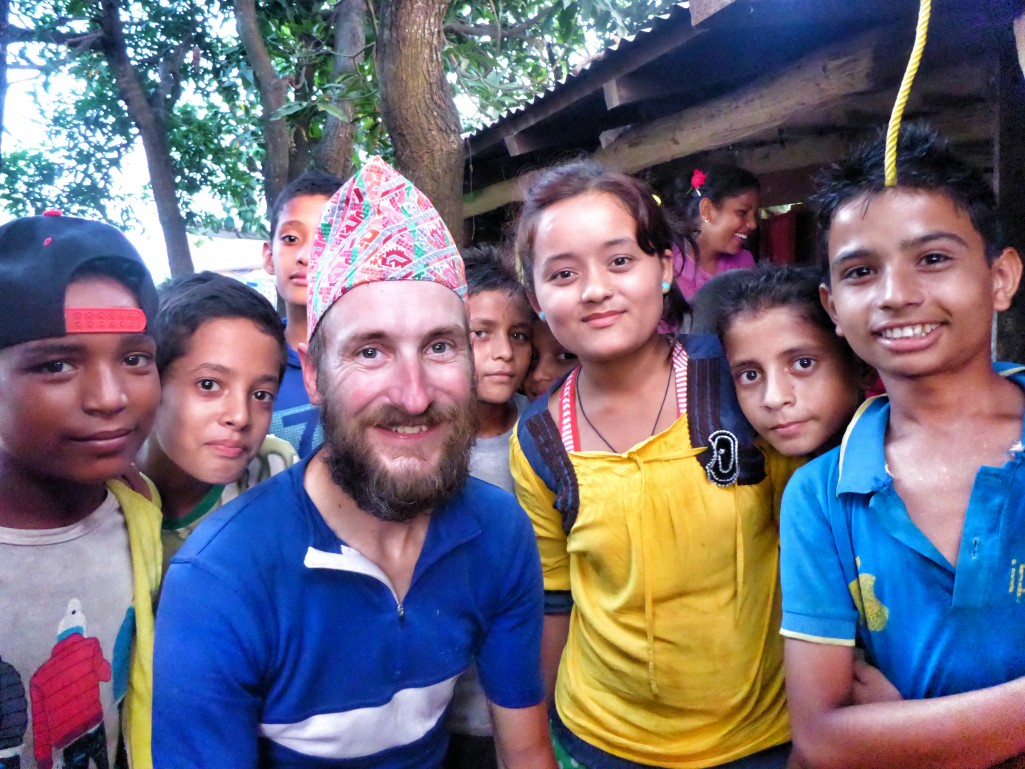
We ride on past neat little straw houses, some tree houses, fields of wheat and barley, over pretty rivers and alongside dense forests. Huge bundles of sticks are carried on heads with more awkward loads slung in a basket on their backs. That’s if a bike or donkey isn’t available.
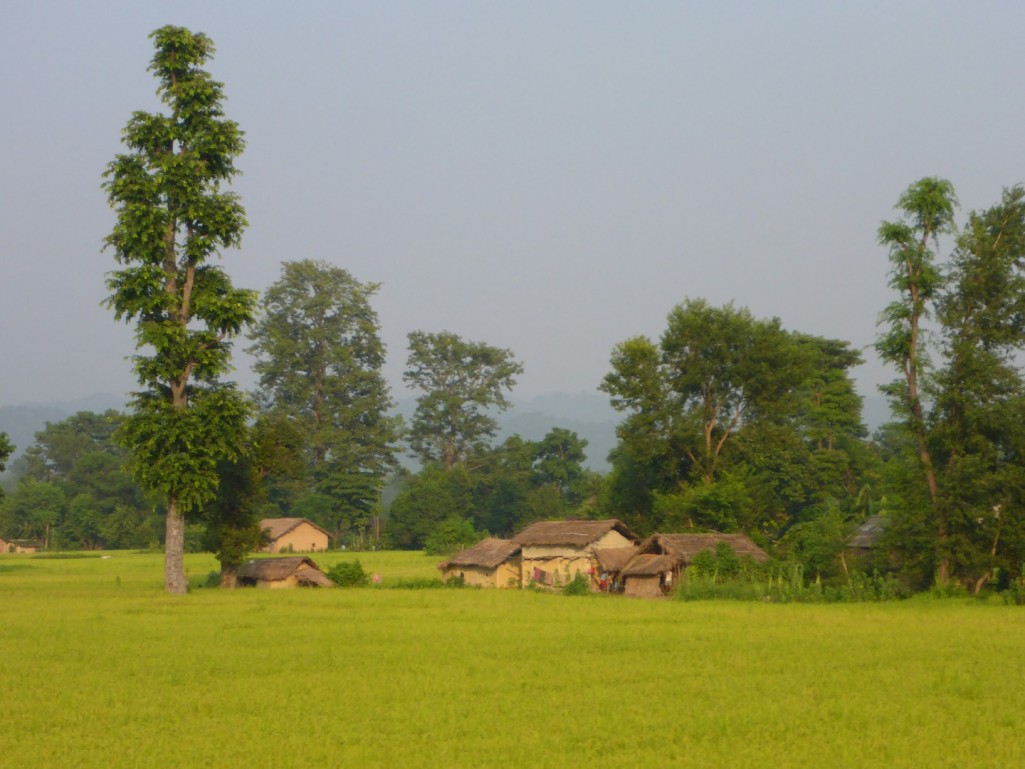
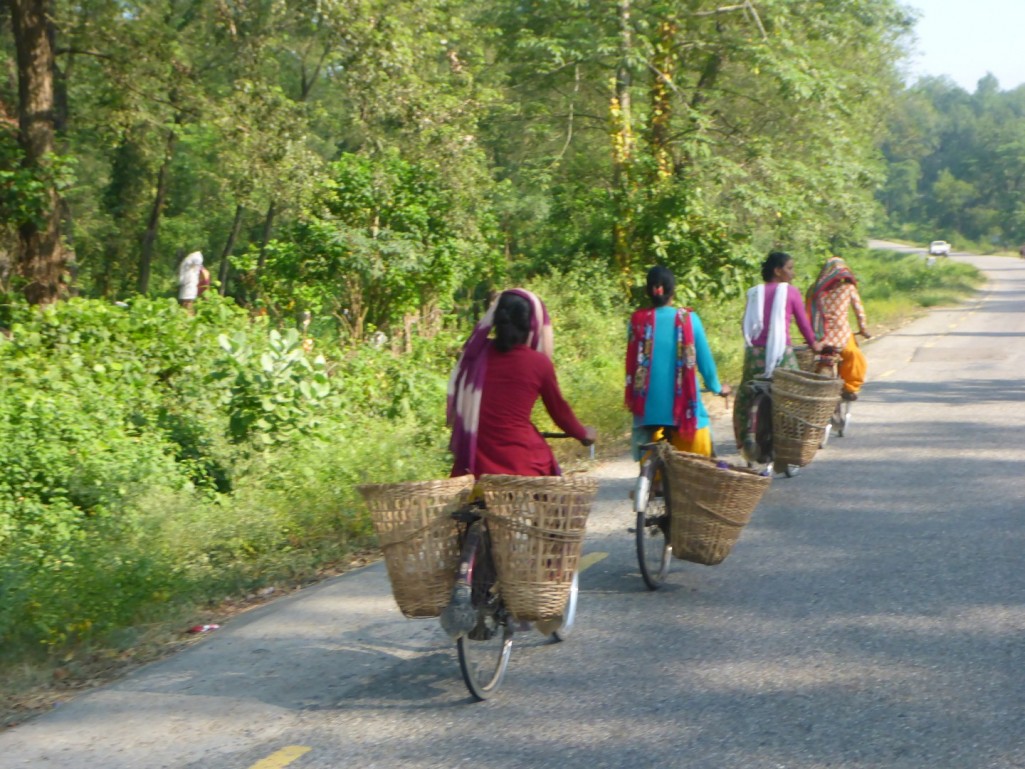
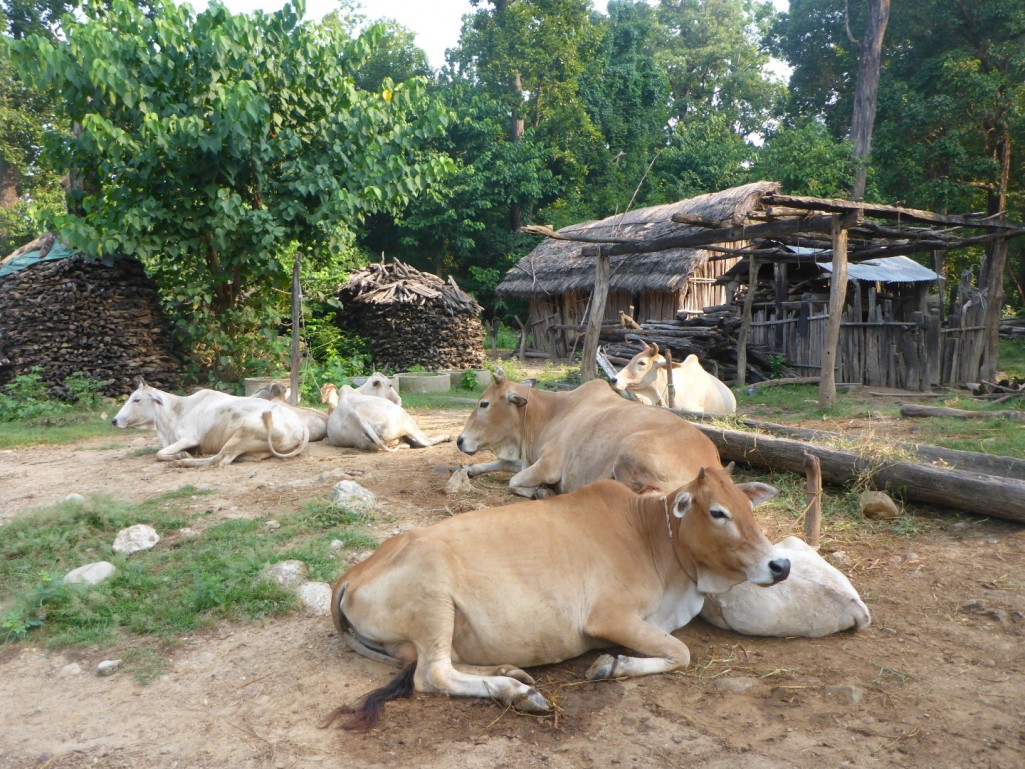
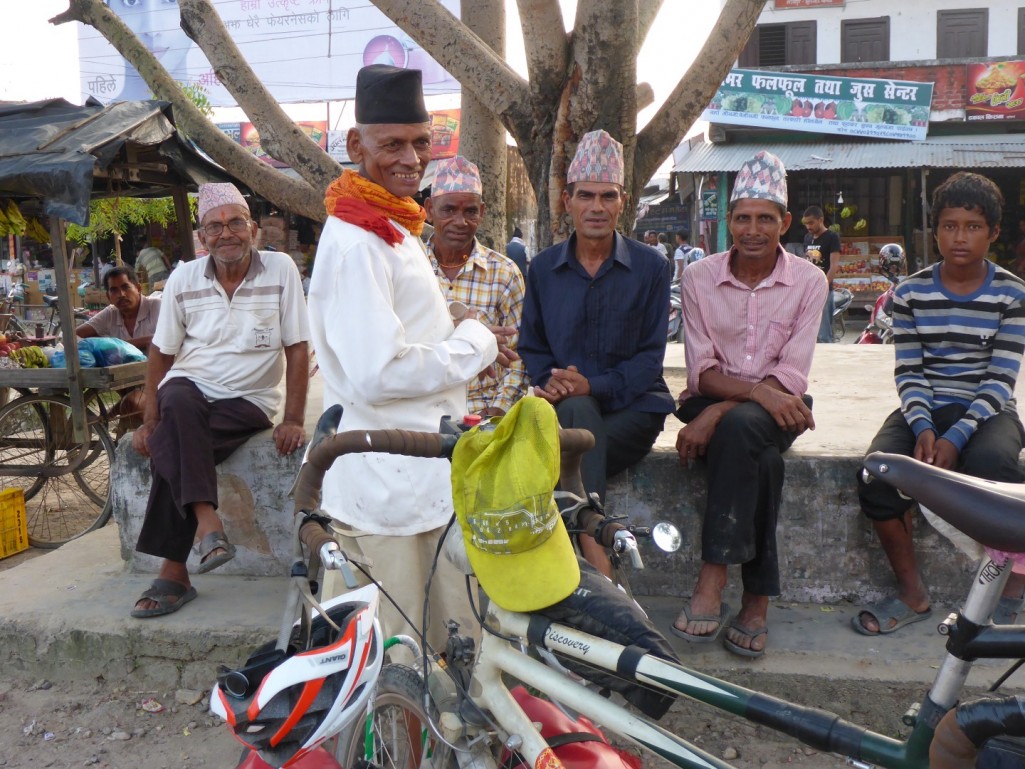
It’s cleaner than India, something that they are very proud of and several people tell us about how dirty their neighbouring country is. It’s the poorest country we’ve visited so far too (Nepal is in the lowest 25% in the world) so there are charity and NGO funded projects in many of the villages. Lots of pictorial signs explain the importance of sanitation and using latrines properly. WaterAid is one such such charity that funds projects here and we’ve been supporting them through various events in the UK for a while. A lot of the improvements that we can see will have been the result of their hard work so it’s fantastic to see what a difference they can make. If you have some spare cash then I’m sure they’d be grateful for a donation at www.wateraid.org.
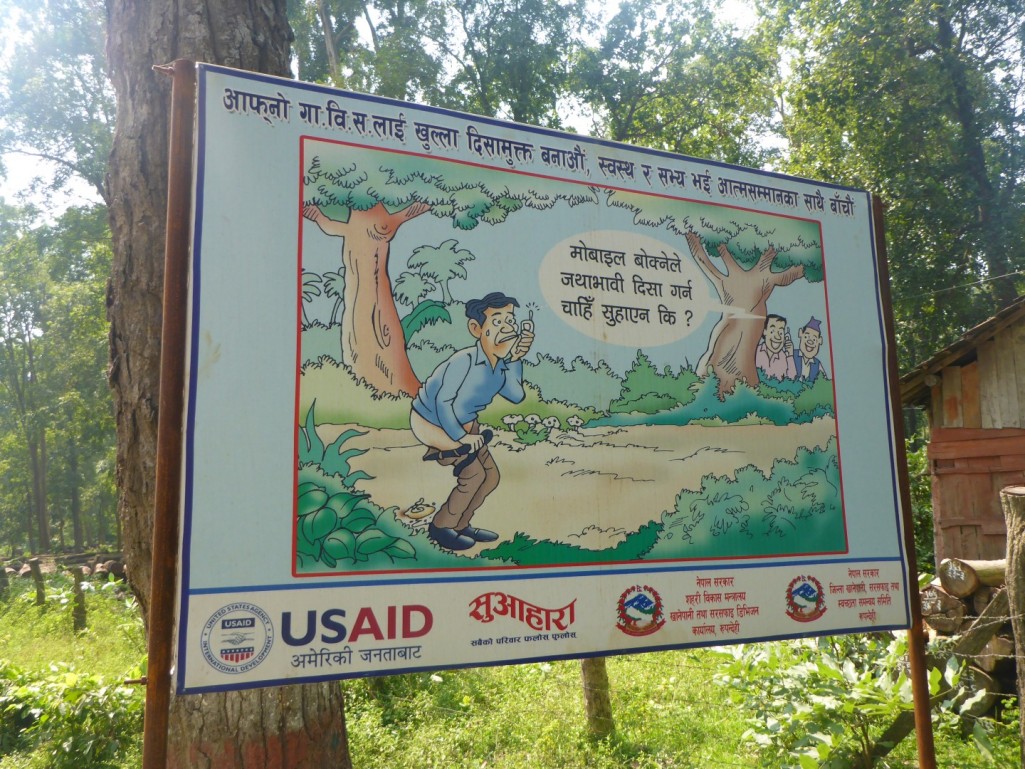
The forests become humid jungle with the noise of the birds and insects at maximum volume. Road signs hint at some interesting wildlife lurking in the trees but we fail to spot any tigers, rhinos or armadillos, just a deceased snake in the road. But it puts us off the idea of camping so each evening we search out a cheap hotel and tuck into the national dish of Dahl Baht, a great meal for a cyclist as it comes complete with an endless supply of rice and lentil soup. The heat and humidity makes for another good reason to a find a room so we can douse ourselves in cold water from the ensuite bucket.
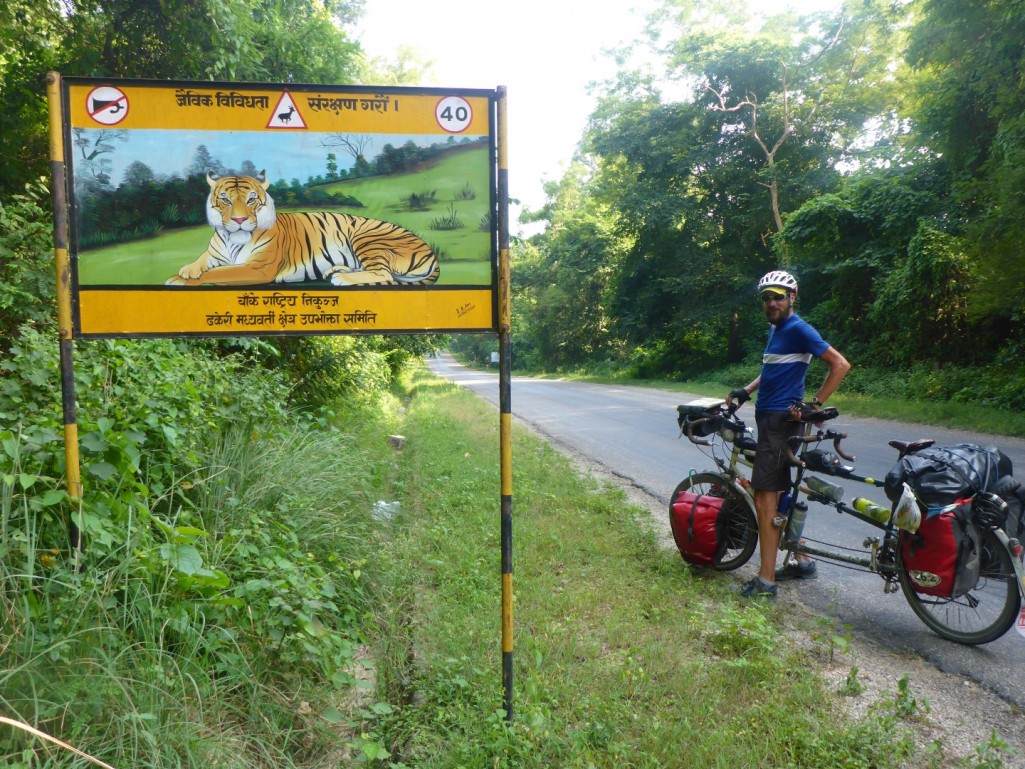
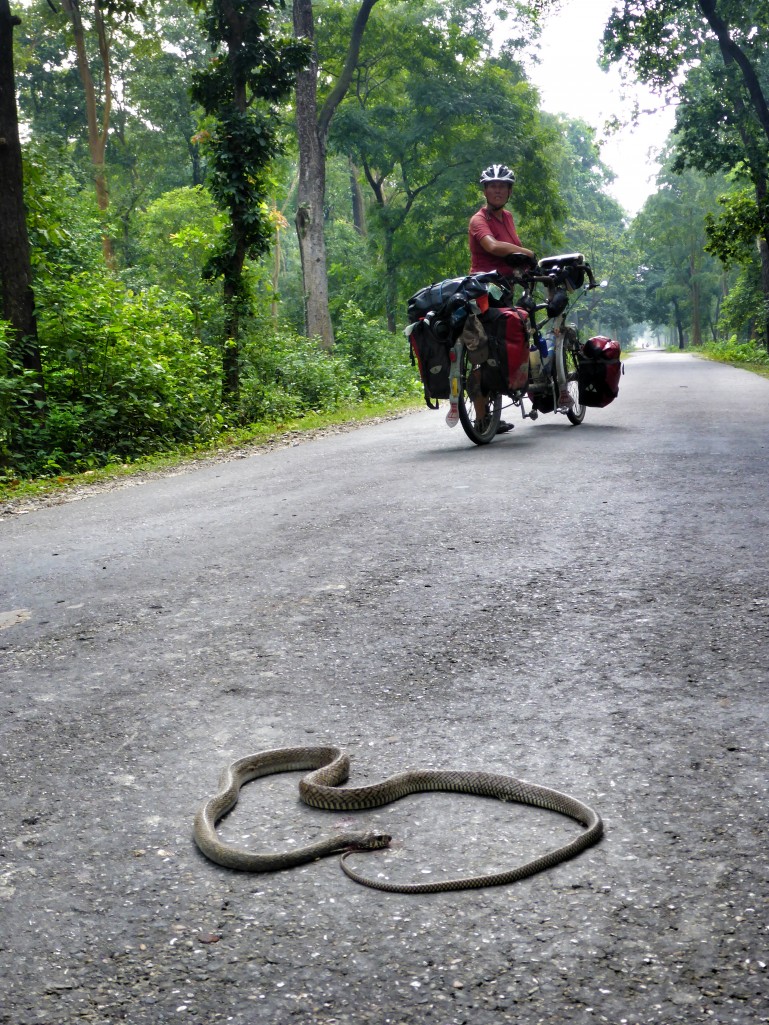
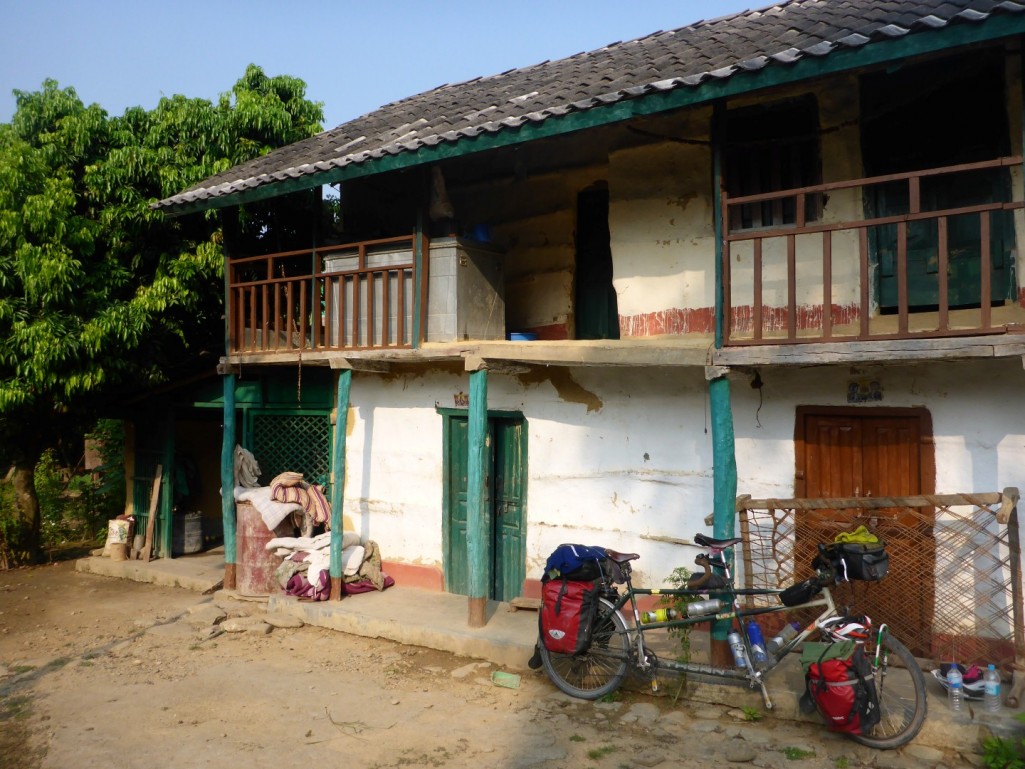
After checking into one such hotel in Gorusinge we take to the streets to find some dinner. We’re quickly surrounded by a dozen or so excited children who don’t normally get visitors to their small town. They all attend the nearby English school so enjoy interrogating us to practice their language skills, which are impressively good. They also tell us about how scary it was when the earthquakes hit. Despite being a few hundred km from the eipicentre one boy tells me “the cricket bat was shaking in my hand and I didn’t know what was happening”. Before we manage to break away we promise to ride with Uba, Diya and Pushpa to their school in the morning.


The school has 700 pupils and when we arrive we’re mobbed by every single one of them. It’s utter chaos as we’re dragged through each classroom to say hello, shake lots of small hands and answer questions. The teachers stand back, bemused by it all then invite us into the sanctuary of the staff room. Here they explain that all lessons are taught in English, giving the pupils a good grounding for studying abroad. We’d seen lots of signs advertising colleges in Australia, Canada, Denmark and Japan for courses that just aren’t available in Nepal. Technical subjects like Engineering in particular seem to be the most lacking. Attending an NGO funded school like this will really help the children’s future prospects.

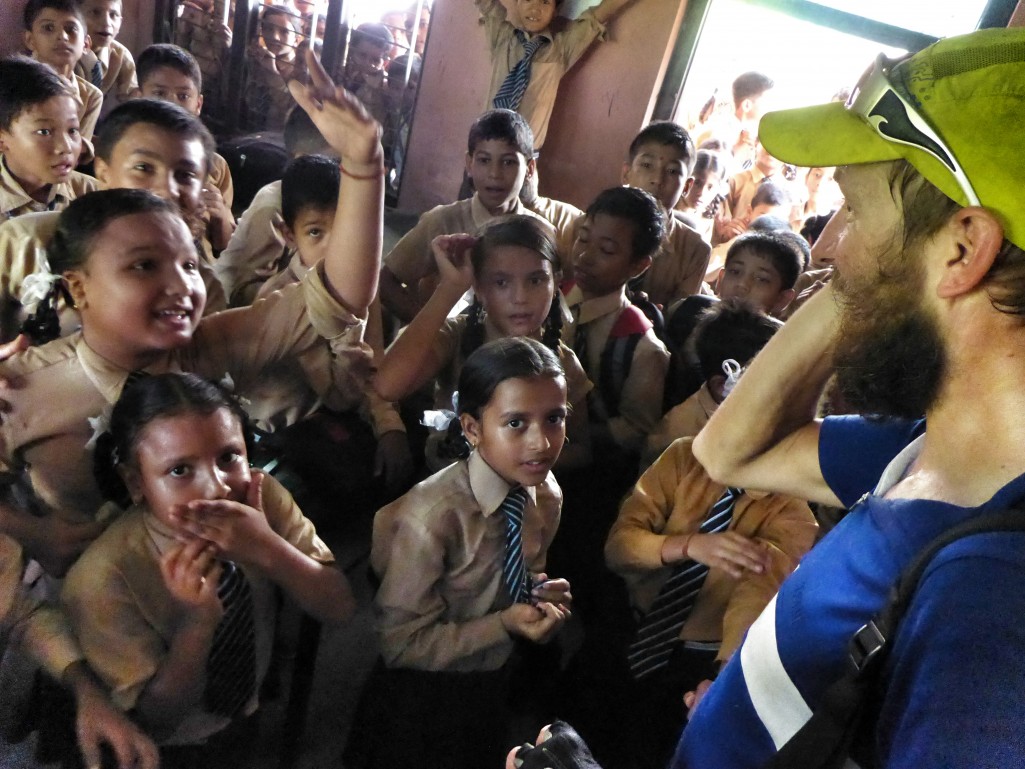
After extracting the bike from the rabble we continue on to Lumbini, the direct opposite of the noise and excitement of the school. We enter this Centre for World Peace, created around the birthplace of Buddha, and find ourselves in an oasis of calm. Many countries have built Buddhist monasteries in their own particular style so riding round them feels a bit like a theme park. There’s ‘Chinese World’, ‘Burma Land’, ‘Cambodia Towers’.
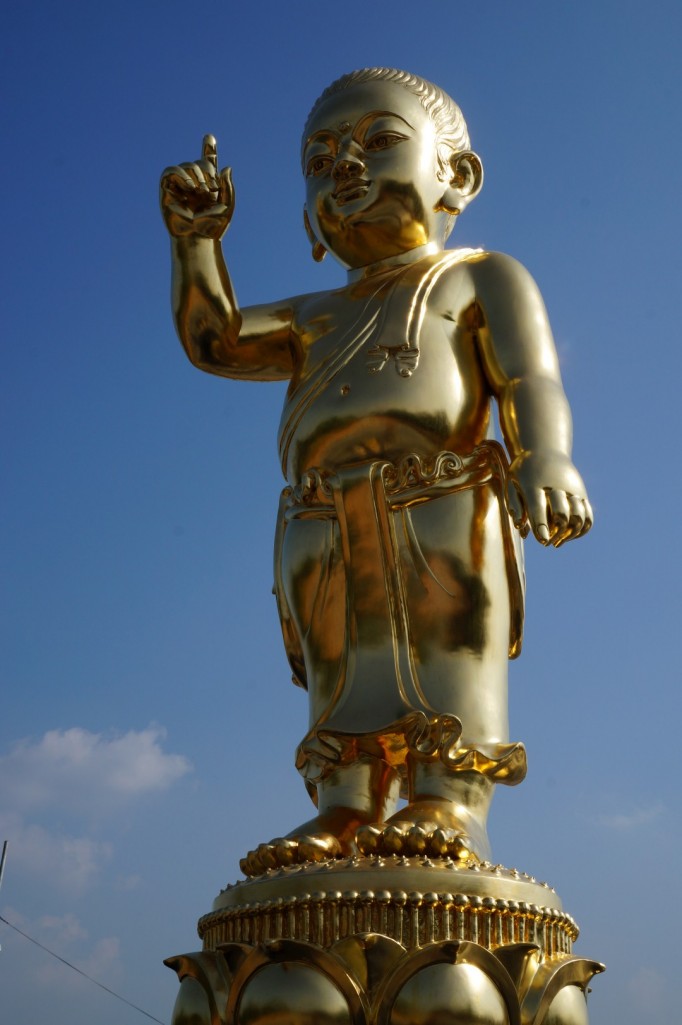
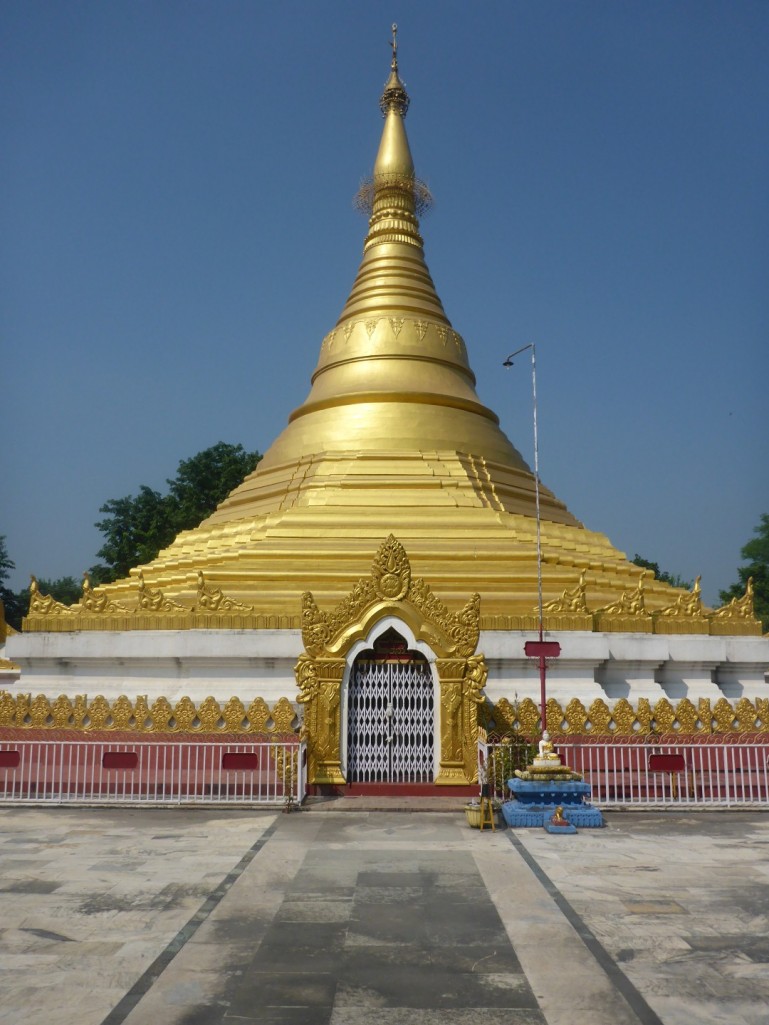
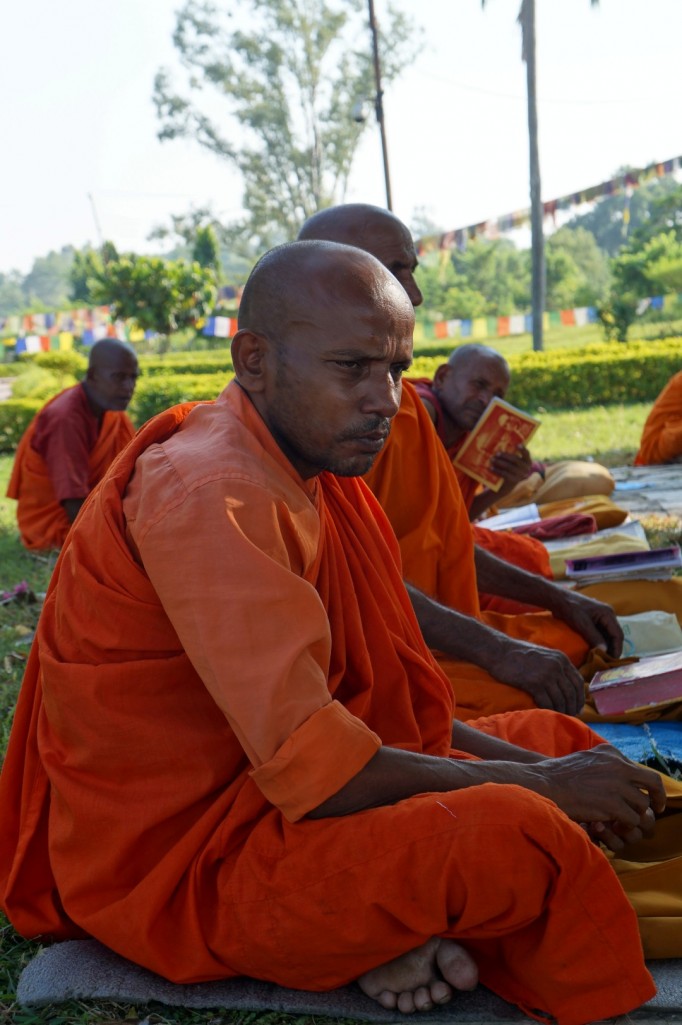
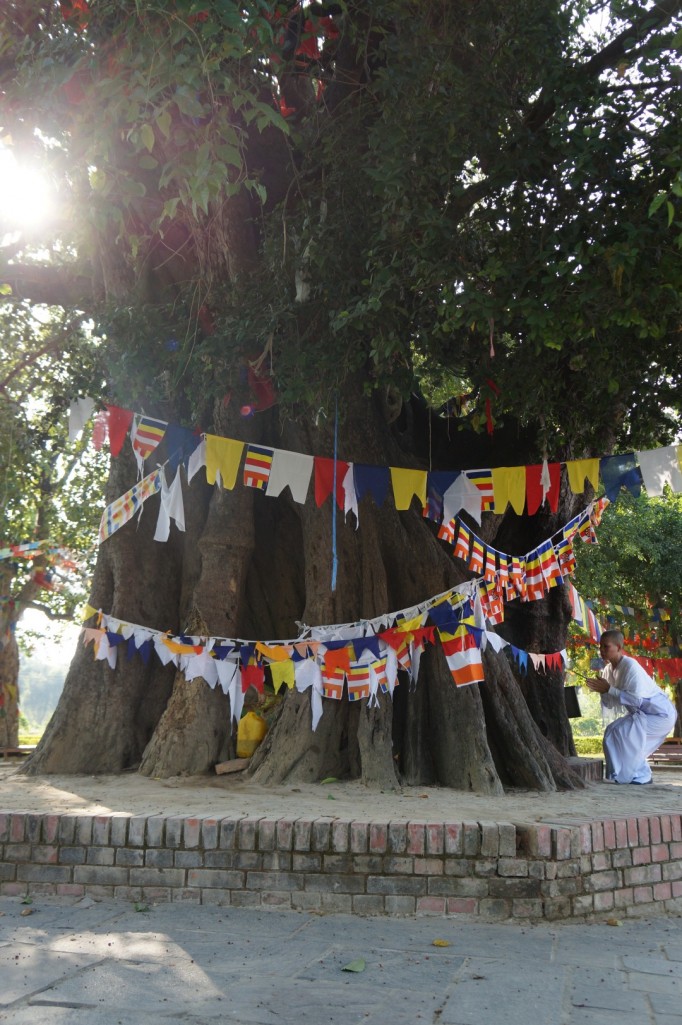
We spend the night in the dorms of the secluded Korean Monastery, tucked away in a forest enclave at the edge of the sanctuary. There are several other tourists enjoying the hospitality of the monks, including Or, an Israeli who is about to embark on a three month meditation retreat. With the prospect of 16 hours a day engrossed in his own contemplation, it’s something that he’s looking forward to with some understandable trepidation.
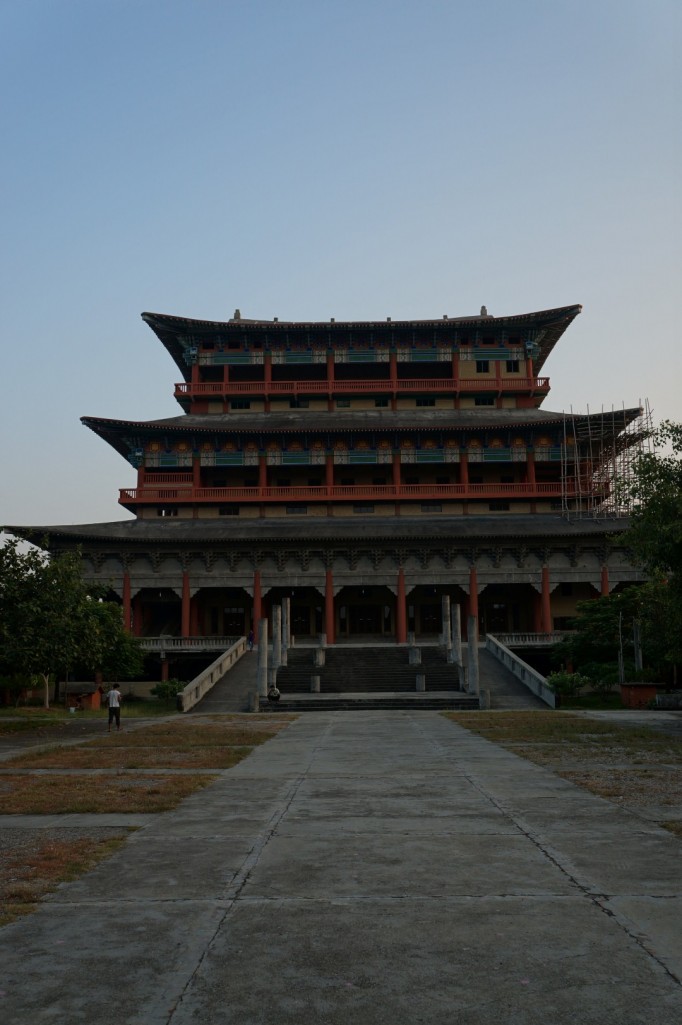
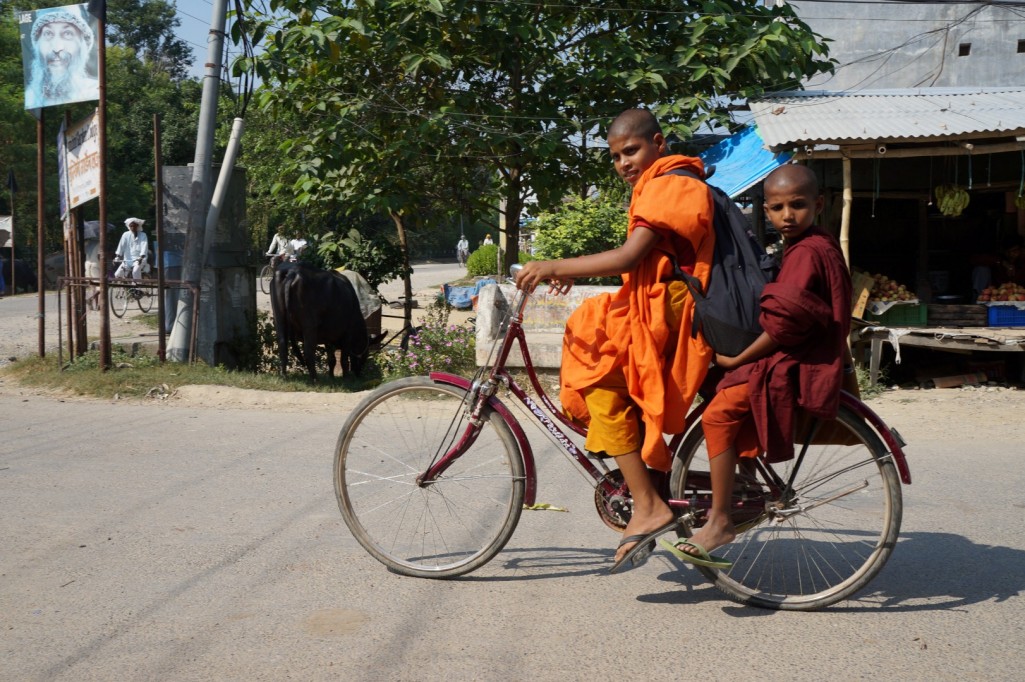
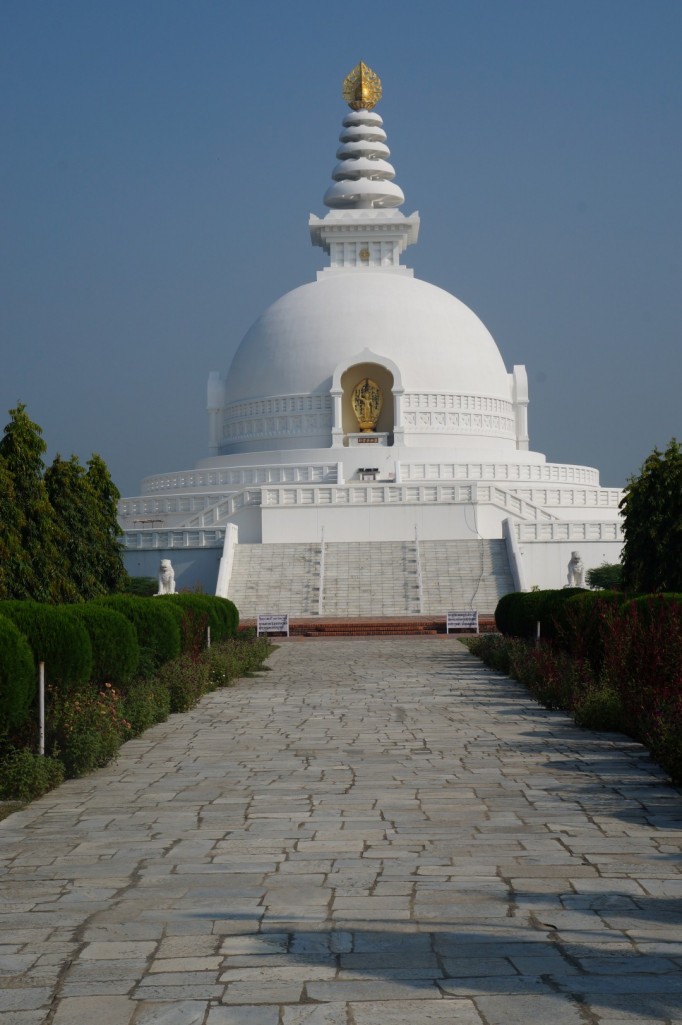
After our side trip to Lumbini we spin back up to the main highway across flat farm land. The highway is the only major road that crosses Nepal but it’s still relatively quiet. We have discovered that the reason for the lack of traffic is due to blockades at the borders preventing the huge number of trucks that bring imports from India to makeing it across. This includes fuel. Petrol stations are closed with vehicles parked all around them waiting for new supplies. Some enterprising shops are selling petrol from coke bottles at twice the normal price. There seems to be traffic control measures for the lucky few that have vehicles still running so two or three times a day a convoy of buses and trucks passes us before the road returns to peace and quiet.
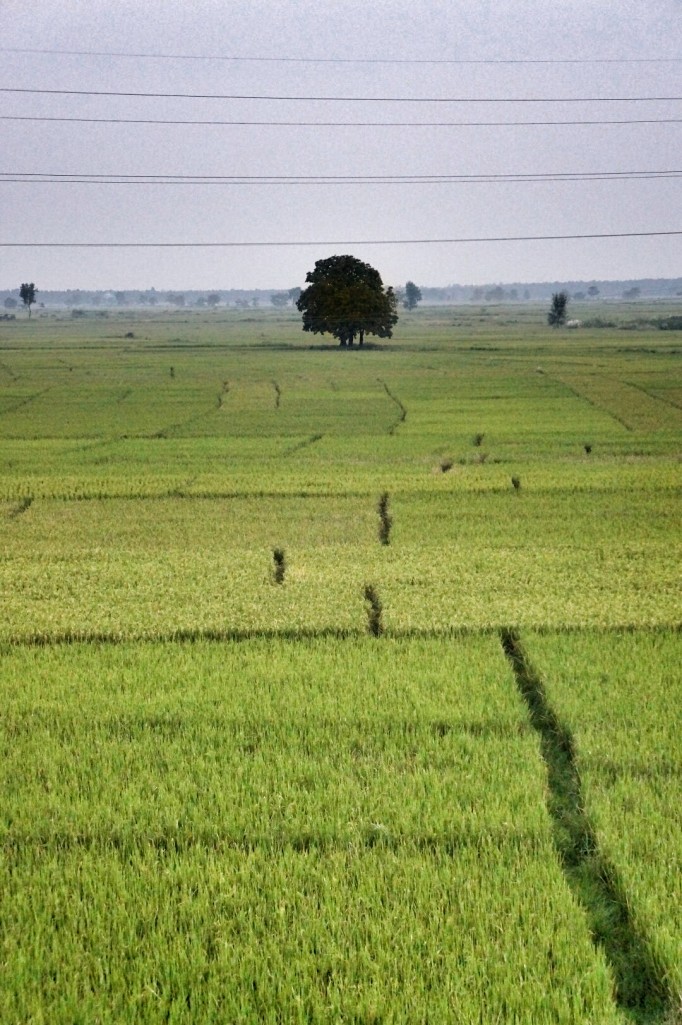
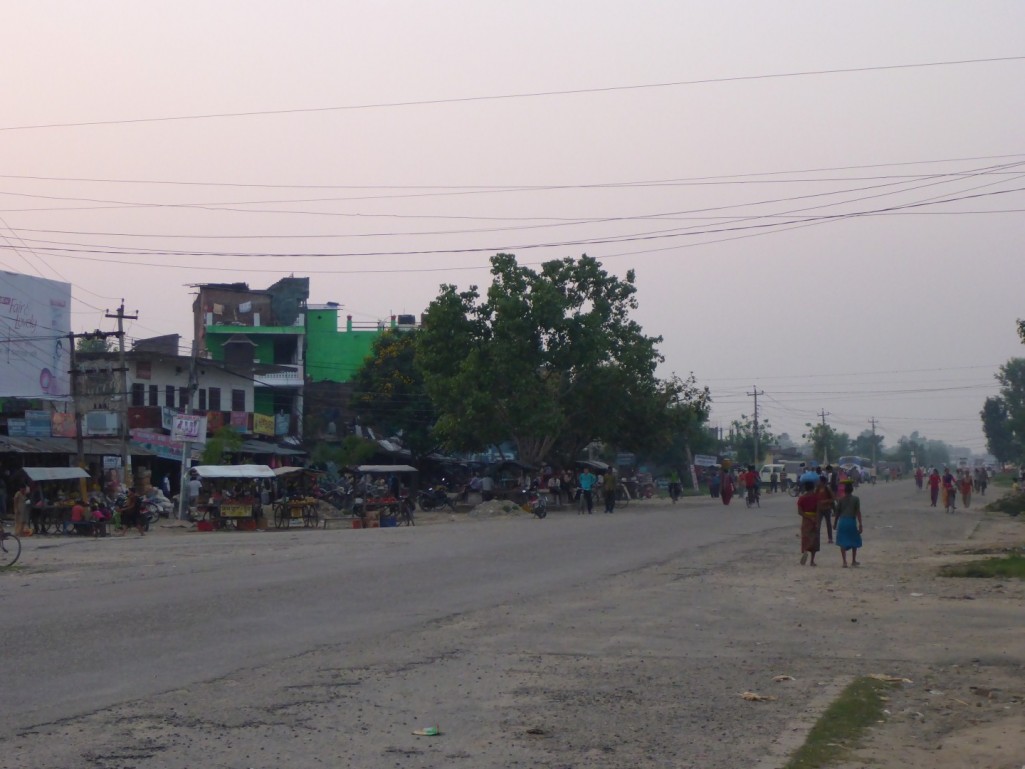
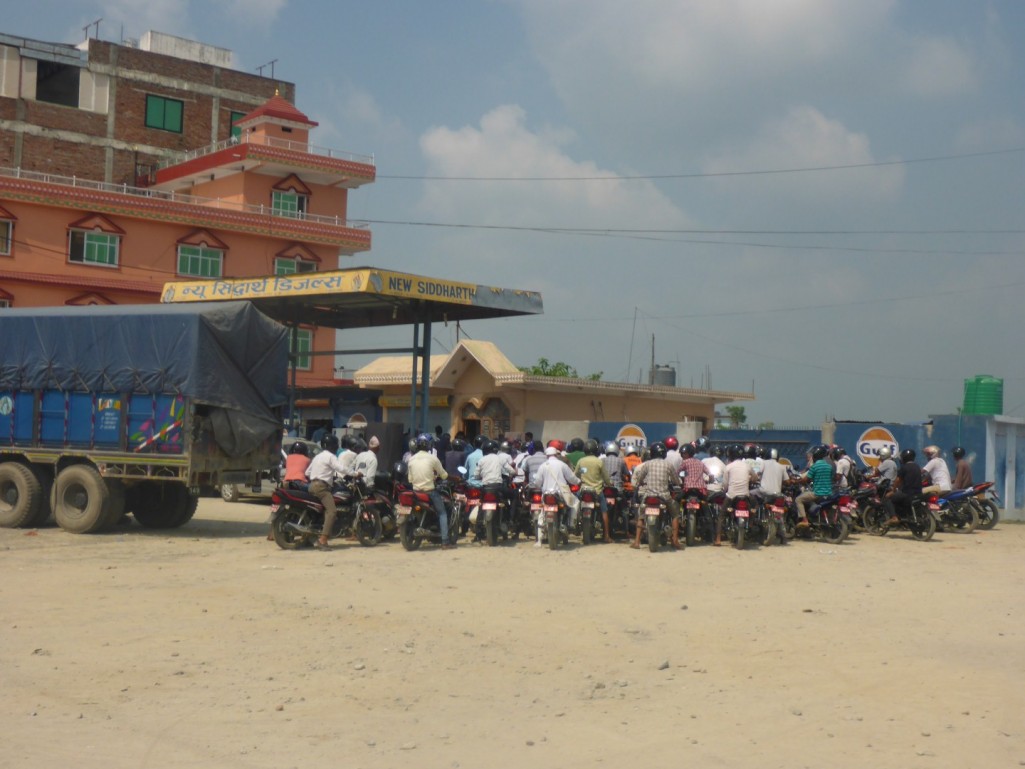
A dispute over the recently introduced constitution resulted in riots and protests by some ethnic groups that felt excluded. In response, India decided it was too dangerous for its vehicles to enter the country so they have been left standing in sight of Nepal but not able to get in and offload their goods. Essentials like medicines and cooking gas are now in very short supply. In essence the Government are being blackmailed to change the constitution but with both sides refusing to negotiate it’s a stalemate that has led to a national crisis. Good for cycle tourists but terrible for the residents.
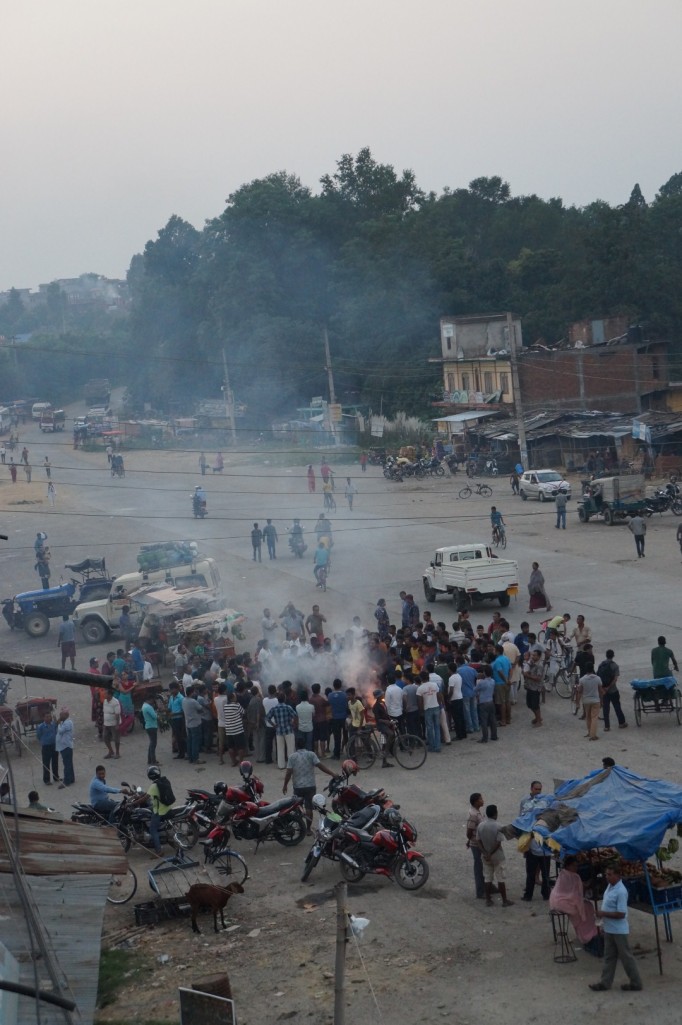
The flat plains are receding behind us to be replaced by several sweaty climbs. Nepal is hilly after all but we’d become complacent after several days of easy riding. We’re earning our endless dahl baht now as well as a plateful of sweet orange jalebis and swaari bread for breakfast.
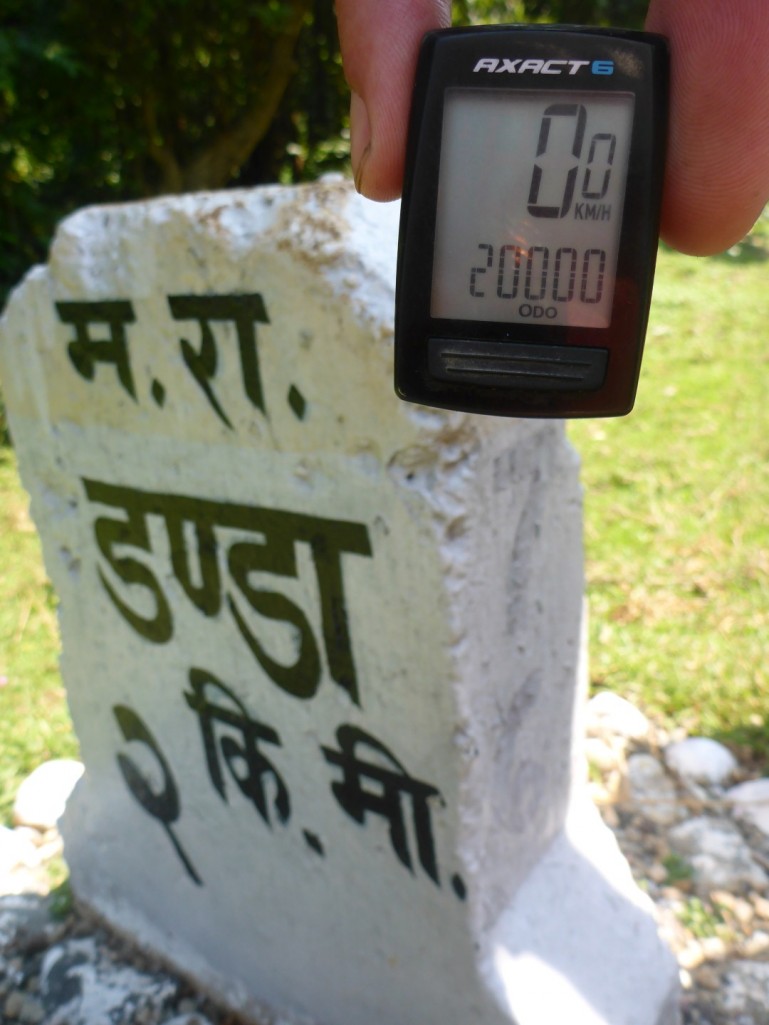
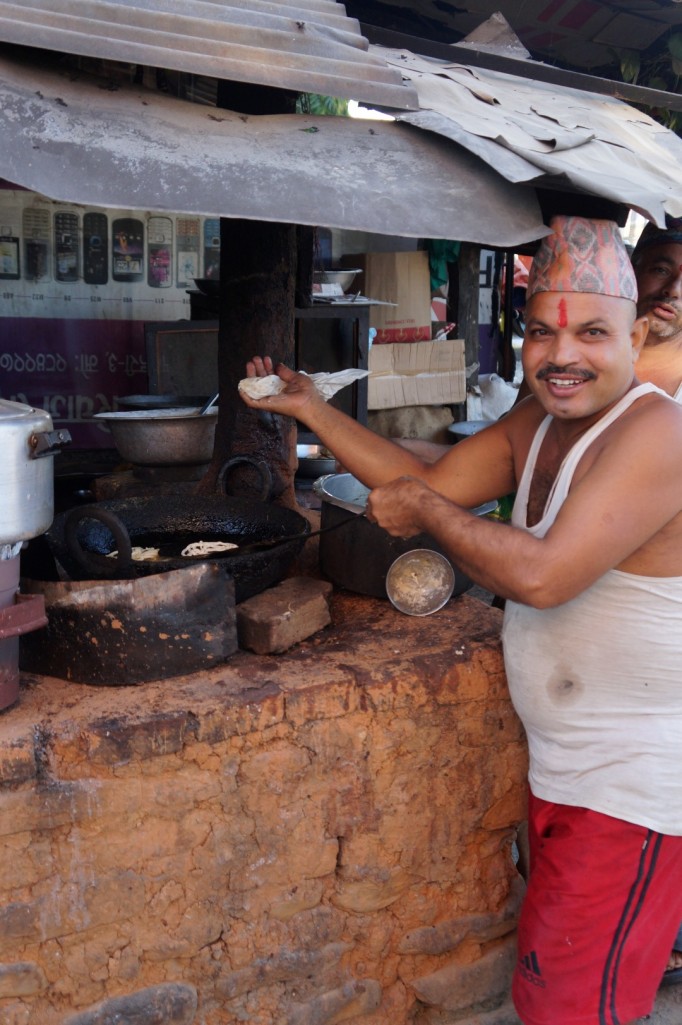
Sometimes it’s the simple moments on the road that make a day memorable and on a rare flat section we’re surrounded by a flock of orange and black butterflies that then glide alongside us. Simple pleasures that keep us smiling.
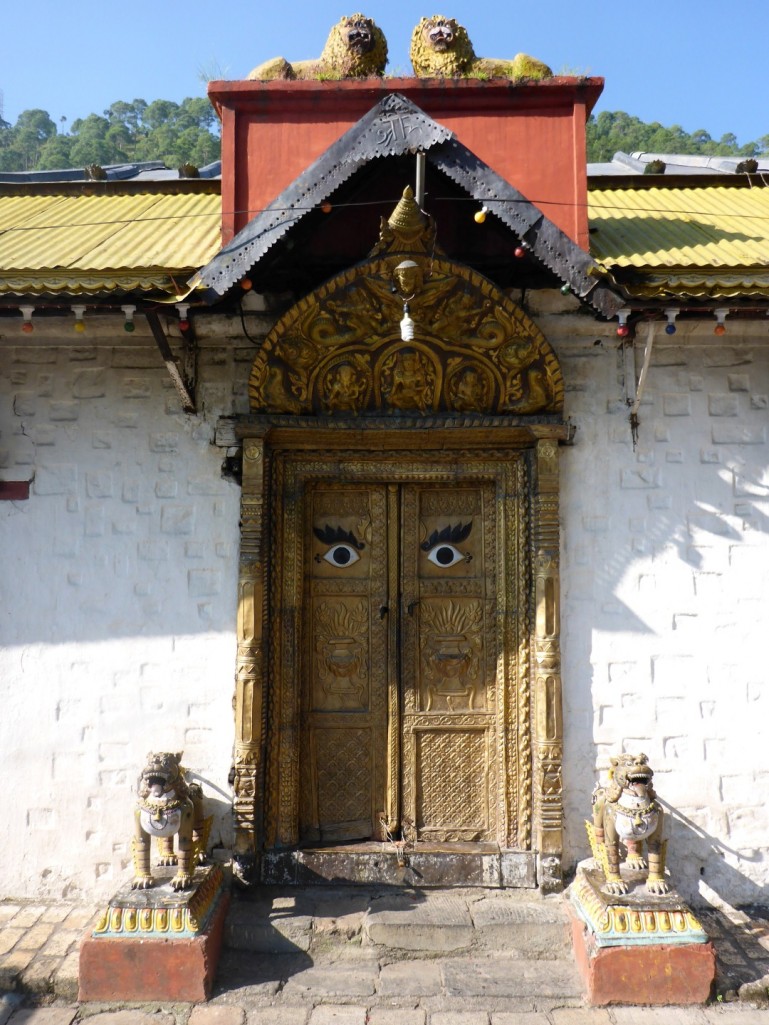
Not long after there’s less to smile about. Turning onto a smaller road we’re hit with a steep gradient which doesn’t let up after a weary lunch stop. In the afternoon we climb 650m in less than 8km with the limit of our power being touched for most of the way. Part way up we have the conversation about wanting to ride to Kathmandu but being told it wasn’t possible by a passing driver. At the time we’d laughed it off but a few km later we can see their point.
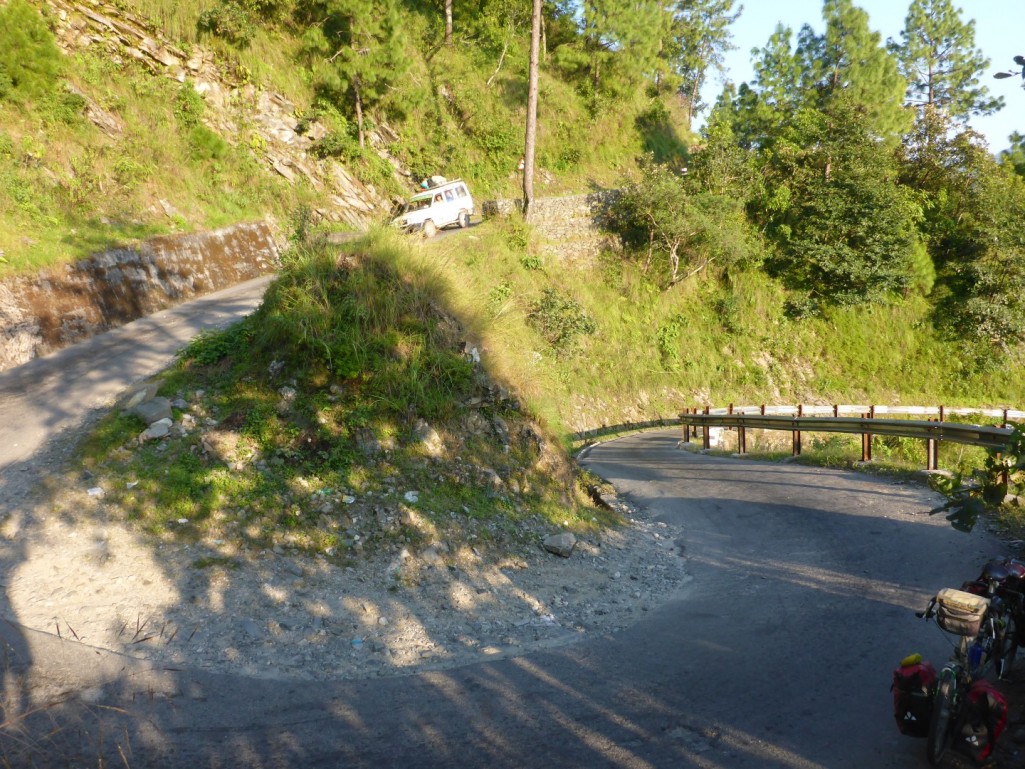
A building claiming to be a hotel not far from what we think is the top turns out to be a fraud without any rooms. They cheerily tell us that it’s only another 10km to go. Only 10km at 15%!
Getting desperate as the light is fading fast we catch sight of a flat piece of earth just off the road and enquire in the building opposite if anyone would mind if we pitched our tent on it. “Why don’t you ride to the top of the hill instead?” we’re told, clearly unaware of our state of exhaustion. After a few phone calls and meeting the owner of the plot of land we’re invited to sleep on the floor of the building instead. It’s a part built cafe with no door but a roof and four walls. There’s a family living there too and after making us some dinner a sheet of corrugated iron is used to block the doorway and we settle down under our quilt. The family push a few benches together and huddle together under a blanket. This appears to be their home as well as their business.
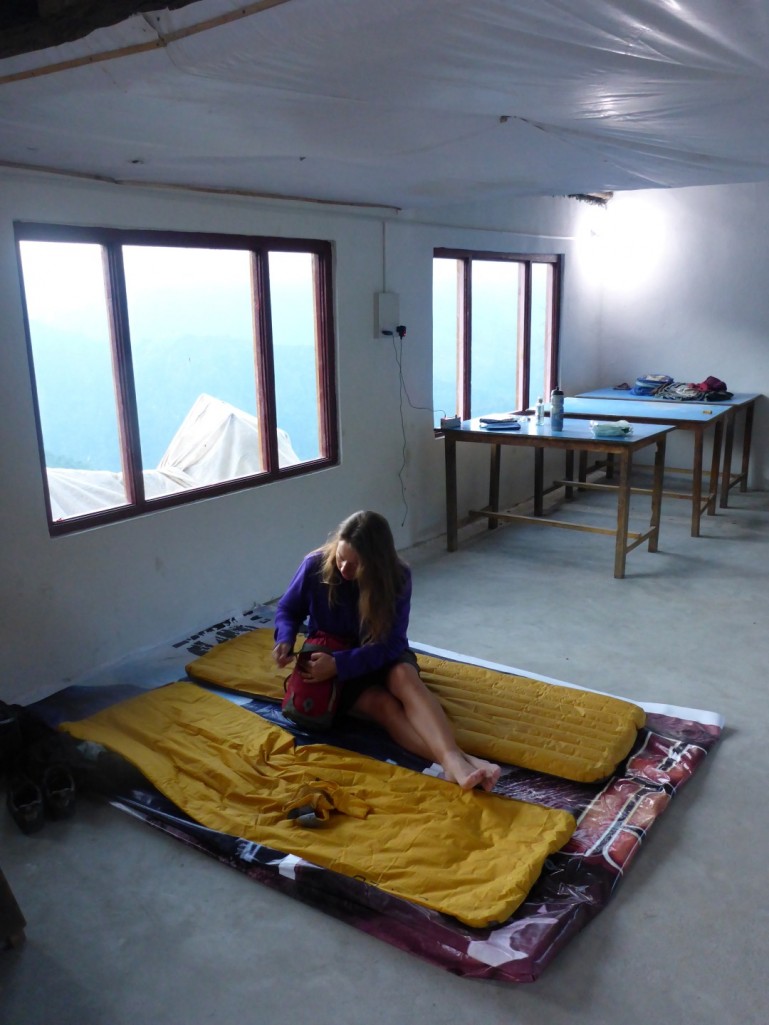
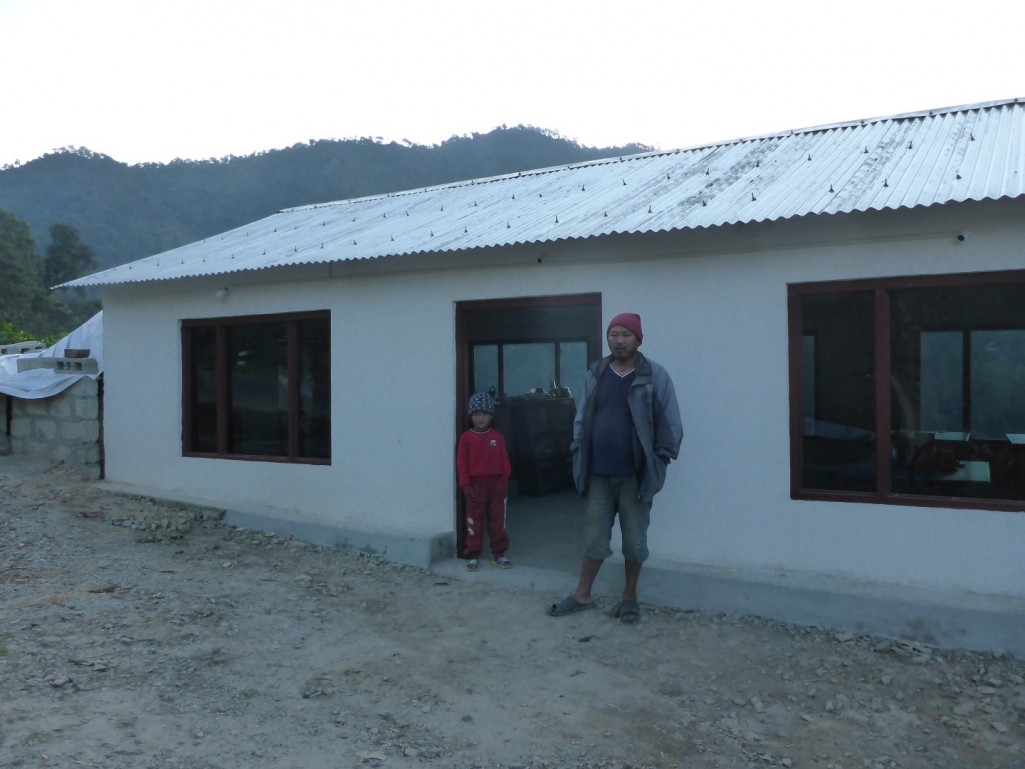
We pay for our night’s lodgings then get going early in the morning. It turns out to only be 2km to the top but it still takes 20 minutes to ride. A bite to eat at one of the three hotels we could have stayed in and then it’s an equally steep descent off the other side. So steep in fact that we have to stop for 10 minutes part way down to let the rims cool off.
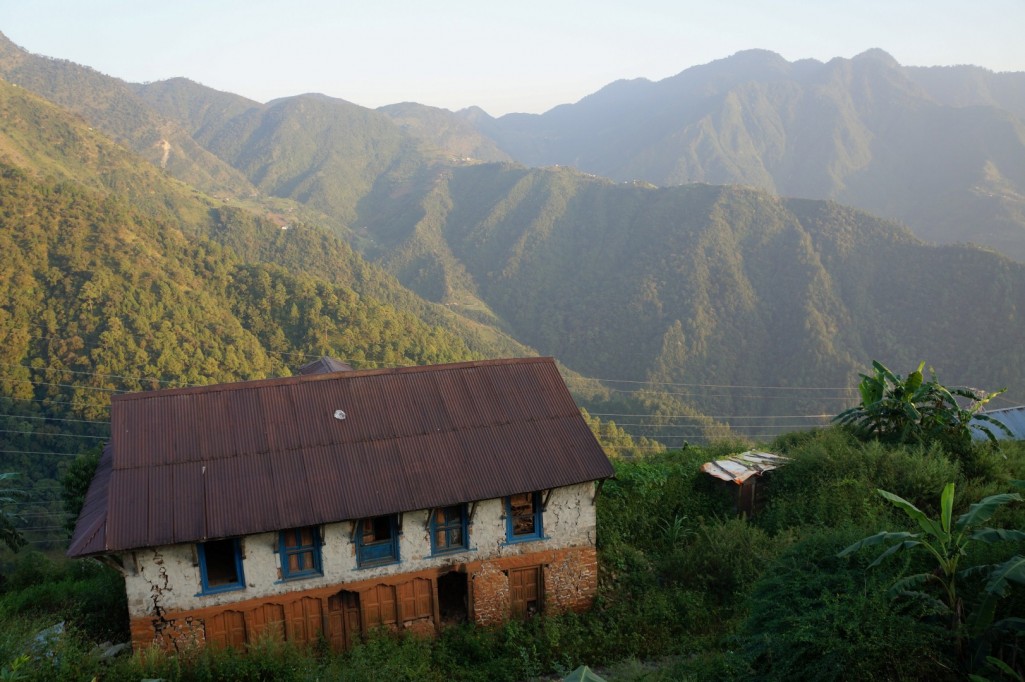
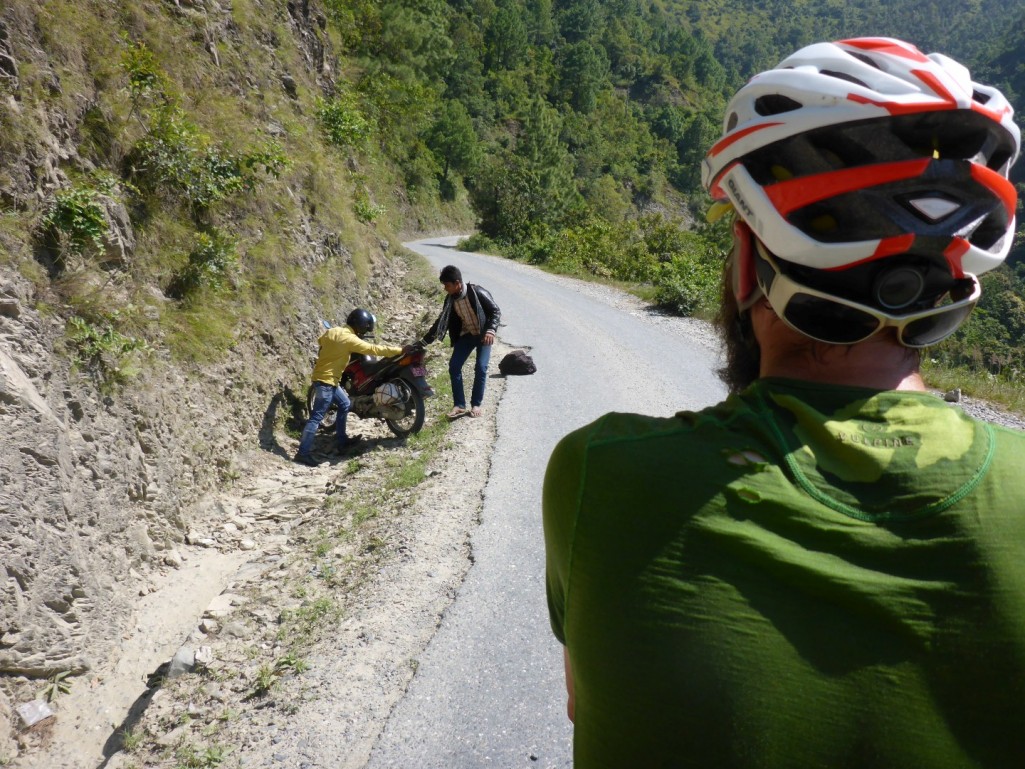
The undulating valley road takes us a few km further on before an enormous ridge looms up ahead again. The road is now just as steep as the day before with added rockiness and the top far out of view. Our legs are still recovering from the previous day’s effort but we work away at it for an hour or so getting slower and slower until we stop. Pushing would be even harder so we take stock of the situation and reluctantly flag down a passing Mahindra pick up. The words from the day before are ringing in our ears as we get whisked up the hill in the back of the truck: “You can’t cycle to Kathmandu”.
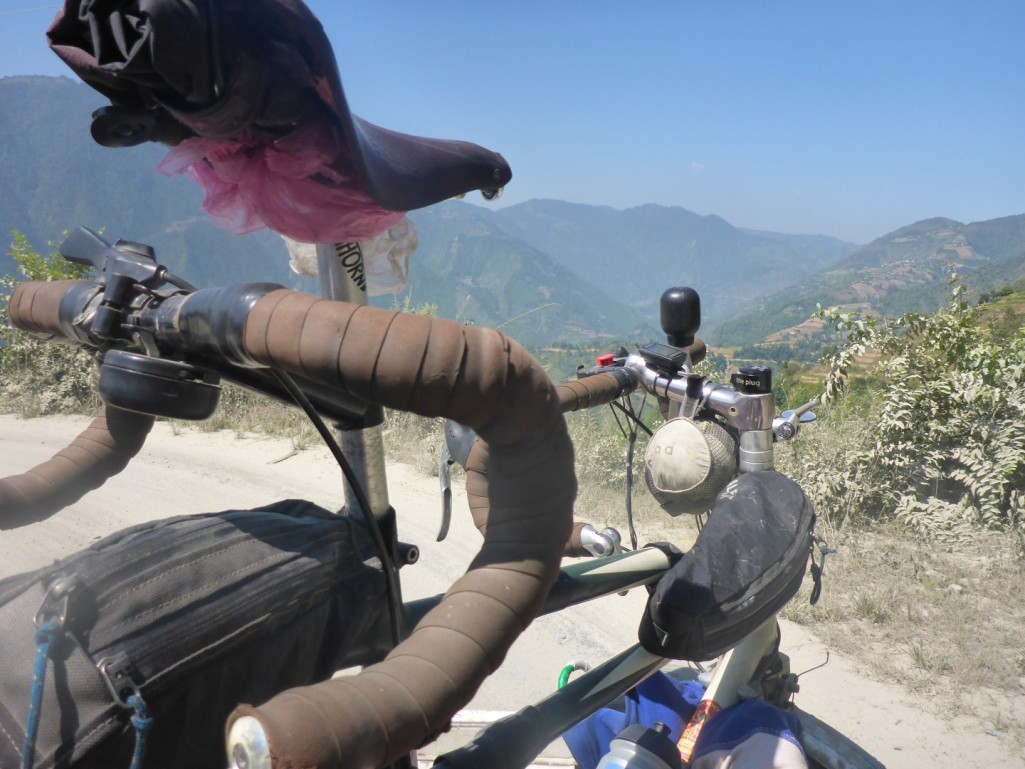
We jump out after the summit and get our first views of the capital city and the enormous snowy hills forming a backdrop. Somewhere north of here is the highest mountain in the world. Descending past monasteries and hearing drums and cymbals in temples we eventually arrive on the streets of Kathmandu. It’s eerily quiet though and becomes the easiest capital that we’ve had to ride into so far. The fuel crisis means that there are hundreds of vehicles parked up on every road leaving plenty of space for cyclists and the odd scooter.
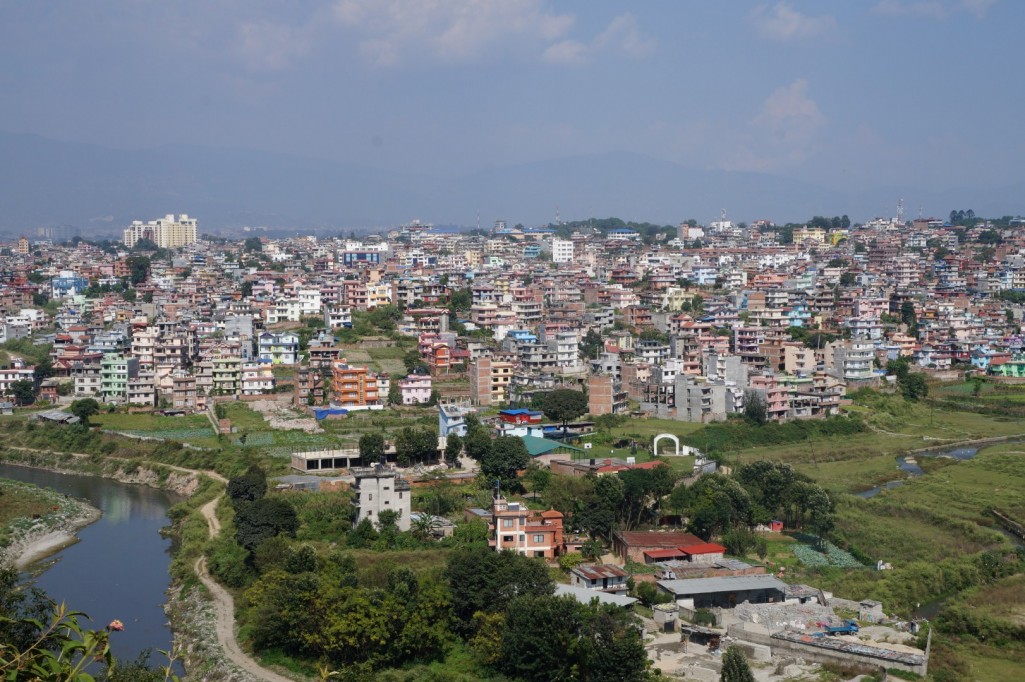
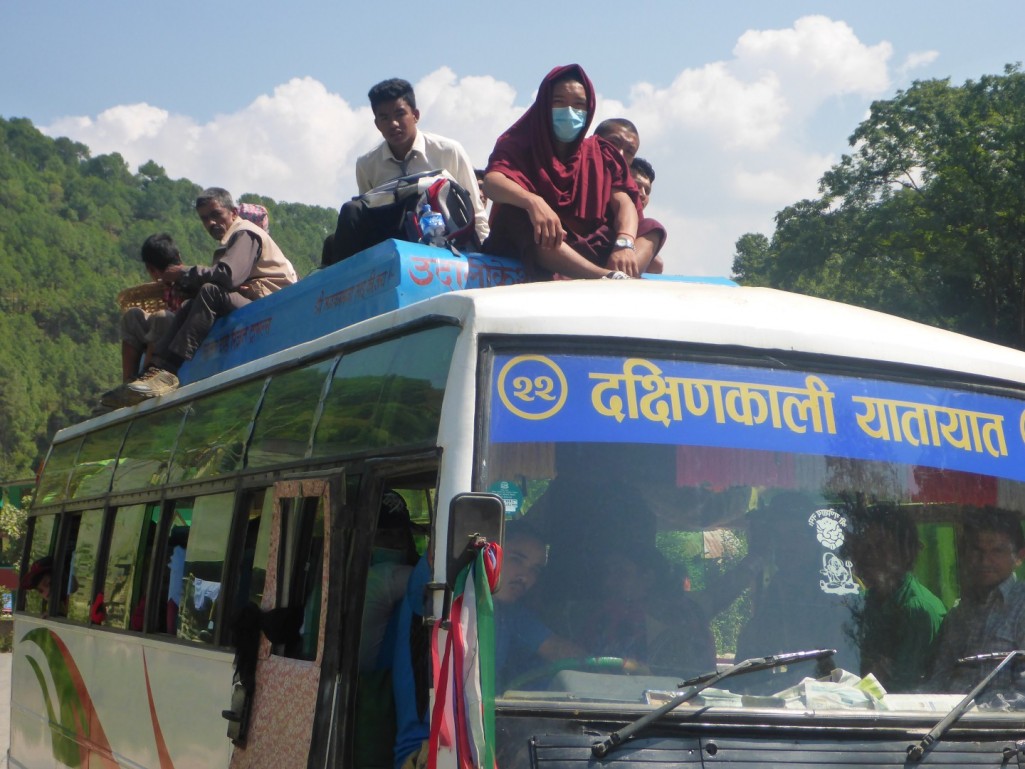

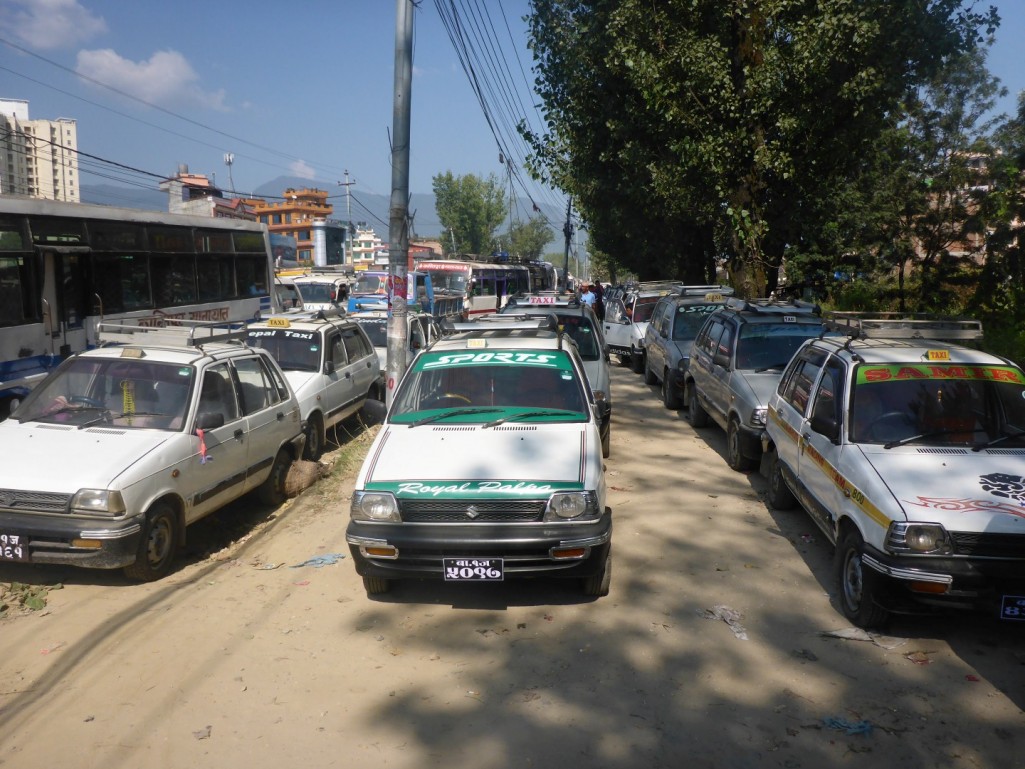
We find a place to stay and venture out into the tourist district of Thamel, packed with tempting restaurants to eat the tastiest, and admittedly only steak we’ve had in months washed down with ‘Everest’ beer.
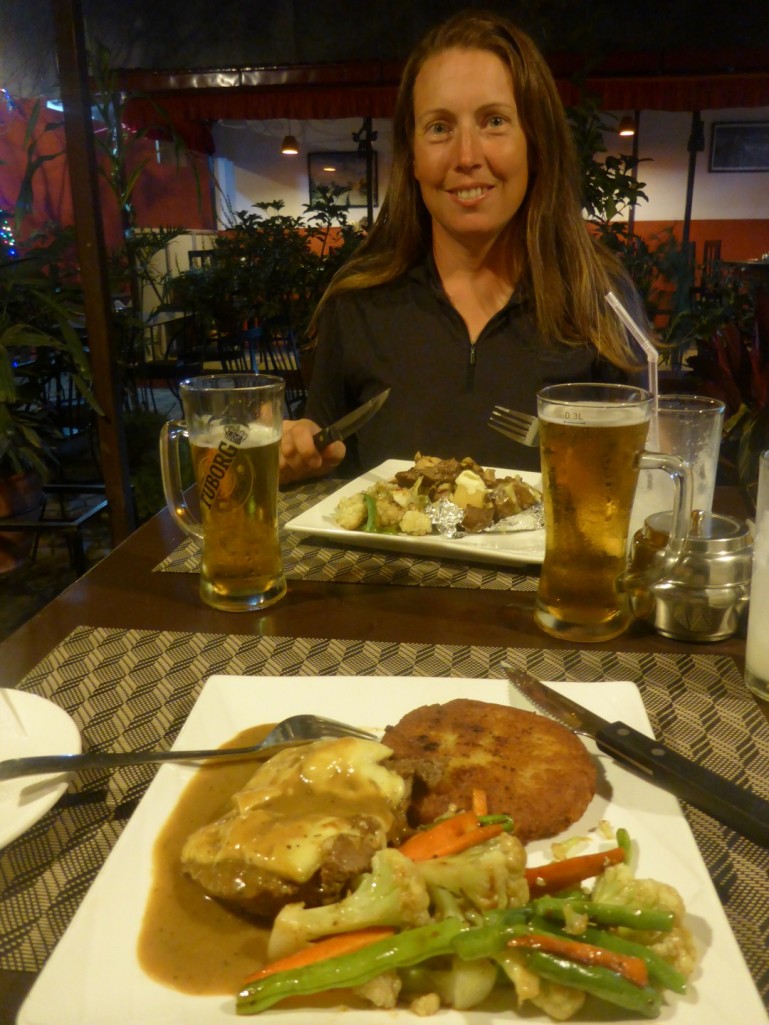
There’s some of the usual admin tasks on the agenda in Kathmandu with applications for visas for Banglasdesh, Myanmar and an extension to our Indian visa to sort out. A parcel of parts is also on its way from the UK. It all sounds ominously familiar and we’re under no pretences that any of this will be easy. A rest will probably do us some good though so we settle in and prepare to wait and eat and wait and eat.
